General News - Features
Nature, Nurture, Future - Gardening for Wellbeing.
04th February 2022
04th February 2022
In: Features
Everyone has faced quite a number of challenges over the recent year, with COVID restricting activities and social interaction. The Wilderness Foundation is no different and has undergone some change during this period with reduced numbers, and a change of leadership. Despite this a huge amount of effort goes into the plots under their management, as Carolin Rogers, who now leads the activity explains in this update.....
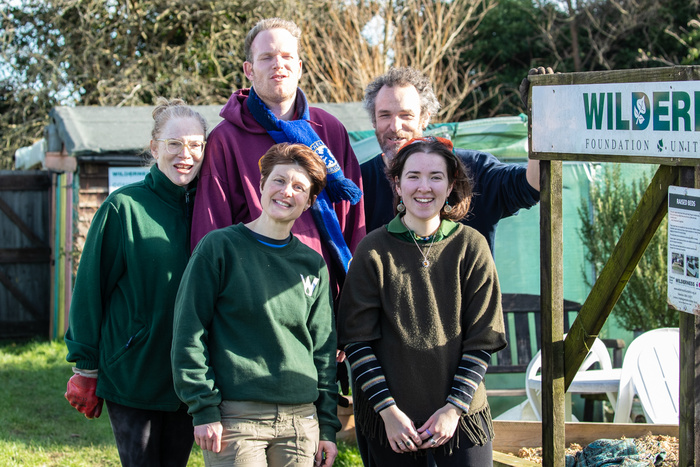
Our friends at The Wilderness Foundation work across six plots and have a distinct variety of growing space for fruit and vegetables across traditional beds, raised beds and poly tunnels combined with areas left for wildlife. Over the years, we have stablished log & habitat piles, small areas of rubble, hedgerows, wildflower patches and a wetland area to benefit our local insects, invertebrates, amphibians, birds and small mammals.
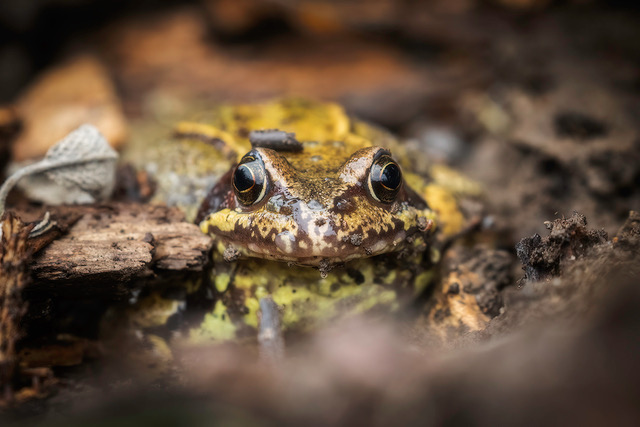

Our friends at The Wilderness Foundation work across six plots and have a distinct variety of growing space for fruit and vegetables across traditional beds, raised beds and poly tunnels combined with areas left for wildlife. Over the years, we have stablished log & habitat piles, small areas of rubble, hedgerows, wildflower patches and a wetland area to benefit our local insects, invertebrates, amphibians, birds and small mammals.

Organic allotment gardening goes hand in hand with a healthy environment for wildlife as those little creatures benefit our crops in so many ways. And, of course, they benefit us too! Who hasn’t smiled at the little robin landing next to you on the spade handle to chirp hello and ‘thank you for digging up some worms’?!
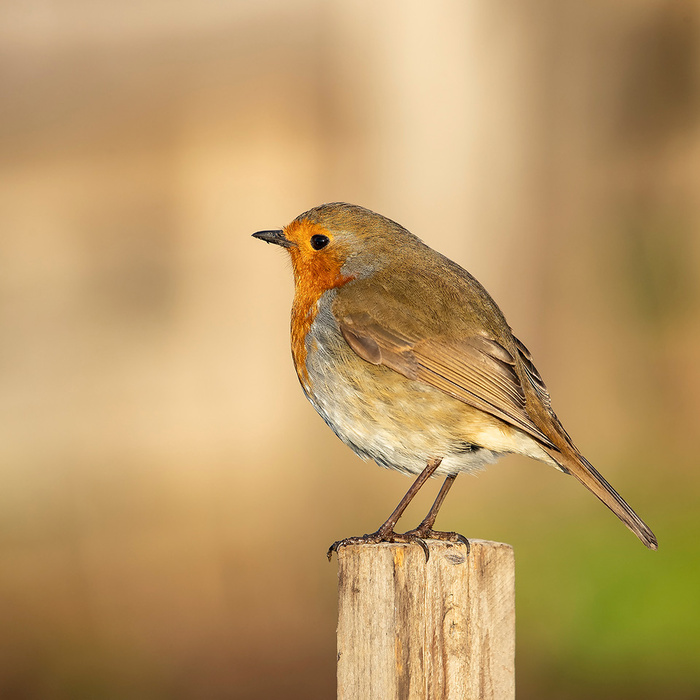

The allotment year started well, but we still noticed the aftermath of Covid-19 with a considerable reduction in participants in our programmes. As such, we had to reduce our work to one day a week with only few volunteers attending. Unfortunately, our schools programme ceased to run due to the circumstances. We have been running the allotment on a Tuesday as normal but with much more attention on Covid 19 safety and social distancing as many volunteers are vulnerable.
We are excited to have been able to launch ‘Eco Defenders’, a creative horticultural-environmental youth programme for 10 & 11-year olds. Our new allotment-based outdoor club started with a one-week summer camp at the beginning of last year’s summer holidays. Albeit with only 4 participants attending, it was a huge success and a tremendous variety of outdoor activity fun was had by all. The programme now runs on Saturday mornings at the allotments. Once a month we successfully team up with Green Influencers at Chatham Green.
Despite the effect of Covid-19, our groups manged to keep on ‘growing’ and make a difference across our plots and to each other, collecting fresh produce, enjoy wildlife and be together in a positive environment.
We are motivated to make growing food more accessible to a wider audience, or for those with less time and financial resource to run their own allotments, or in fact, have limited access to a garden space. Our allotment programme boosts and helps to maintain a healthy and positive mental attitude and supports physical health as well. Connecting people with nature through growing healthy food, activity, socializing and awareness of our beautiful environment is one of the core benefits to mental and physical wellbeing.
The Down to Earth Allotment programme is open to a range of community groups, schools and individuals. Most of our young adult volunteers are living with mental or physical disability. We also use the allotment to engage clients from other social organizations such as Chelmsford Community College Initiative and local special needs schools catering for young people with complex and severe learning difficulties.
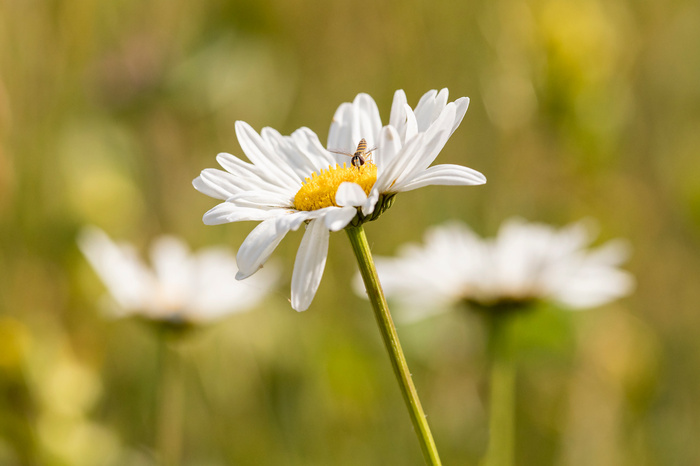
We are excited to have been able to launch ‘Eco Defenders’, a creative horticultural-environmental youth programme for 10 & 11-year olds. Our new allotment-based outdoor club started with a one-week summer camp at the beginning of last year’s summer holidays. Albeit with only 4 participants attending, it was a huge success and a tremendous variety of outdoor activity fun was had by all. The programme now runs on Saturday mornings at the allotments. Once a month we successfully team up with Green Influencers at Chatham Green.
Despite the effect of Covid-19, our groups manged to keep on ‘growing’ and make a difference across our plots and to each other, collecting fresh produce, enjoy wildlife and be together in a positive environment.
We are motivated to make growing food more accessible to a wider audience, or for those with less time and financial resource to run their own allotments, or in fact, have limited access to a garden space. Our allotment programme boosts and helps to maintain a healthy and positive mental attitude and supports physical health as well. Connecting people with nature through growing healthy food, activity, socializing and awareness of our beautiful environment is one of the core benefits to mental and physical wellbeing.
The Down to Earth Allotment programme is open to a range of community groups, schools and individuals. Most of our young adult volunteers are living with mental or physical disability. We also use the allotment to engage clients from other social organizations such as Chelmsford Community College Initiative and local special needs schools catering for young people with complex and severe learning difficulties.

We aim to revive our connections during the coming year and have already seen an increase in new participants and are also pleased to welcome a lovely new group of young secondary school age people from New Hall School! This wonderful bunch of young ladies and gentlemen enjoy coming during their lunchbreak on a weekly basis and have helped with a range of tasks including reweaving our willow fence.
After many years of running the allotments successfully, we said farewell to Jonathan Barker. We would like to thank him for his dedication, hard work and the valuable and friendly relationships he built over the years. Our new project leader, Carolin Rogers, took on the running of the site in November and has been welcomed, heartily accepted and supported by participants and volunteers alike. She, too, would like to thank everyone for the friendly inclusion into the team, encouragement and kind words.
The last 2-3 months have been challenging as the lack of helpers and maintenance time spent due the pandemic restrictions had left their mark, and a lot of overgrown areas, clearing and repair-needy structures had to be dealt with. A small team of regular volunteers has supported Carolin through the last 3 months with this for which she is extremely grateful.
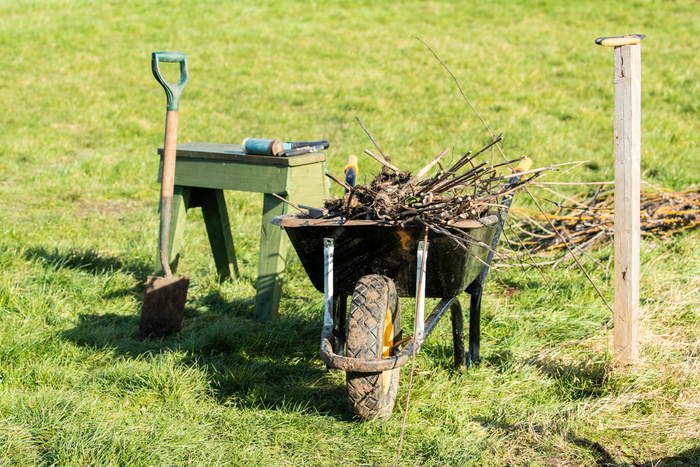
After many years of running the allotments successfully, we said farewell to Jonathan Barker. We would like to thank him for his dedication, hard work and the valuable and friendly relationships he built over the years. Our new project leader, Carolin Rogers, took on the running of the site in November and has been welcomed, heartily accepted and supported by participants and volunteers alike. She, too, would like to thank everyone for the friendly inclusion into the team, encouragement and kind words.
The last 2-3 months have been challenging as the lack of helpers and maintenance time spent due the pandemic restrictions had left their mark, and a lot of overgrown areas, clearing and repair-needy structures had to be dealt with. A small team of regular volunteers has supported Carolin through the last 3 months with this for which she is extremely grateful.

On November 30th we were lucky to have an amazing workforce from Essex Suffolk & Water, who volunteered for the day to tackle much needed ‘heavy lifting’ jobs across our large site. Through their comprehensive skills and the tools they brought with them, new raised beds were built, structures repaired, paths re-mulched and clearance works carried out. The positive effect on garden and our group participants was immense and everyone is still talking about this brilliant day! We are hoping to be able to repeat this day of action during the coming year.
We are pleased to have received donations of timber sleepers and associated fixings, which were used during our volunteer day to build a brand-new raised bed. We also gratefully received a donation of a pallet of mushroom compost, which will be valuable for improving our soil and mulch around our fruit trees and bushes.
With new raised beds in place and more in the planning, we are very pleased have been able to team up with the NHS Clinical Commissioning Group and NHS Living Well Programme to set up a new allotment horticultural and green therapy scheme. This enables us to work with NHS patients on the long waiting list for hip and knee replacements as well as cancer survivors. We will be able to offer a safe, sociable, productive and encouraging community space those people with particular physical and mental needs.
A huge Thank you to our plot neighbours, allotment friends and the allotment chairs Karen & Ray Lawrence, who regularly pop by to say ‘Hello’ and enrich us with friendly words, helpful suggestions and a pat on the shoulder!
Currently the food grown at the allotment is shared amongst those growing it as the best way to learn where our food comes from and engage people with the subjects of nutrition and cooking. We also donate food to the homeless charity Sanctus in Broomfield to support others in the community in need. The allotments create a hub for people to feel safe, carry out constructive and tangible work, break cycles of loneliness or social isolation and are an important part of the local community.
As 2021 drew to a close, we concluded that much was achieved to make the allotment garden look great and ready ‘to grow’ for the coming year. We received truly encouraging feedback from children, parents, our adult participant as well as other plot holders, who all reflected on many enjoyable, inspirational and encouraging hours ‘down to earth’.
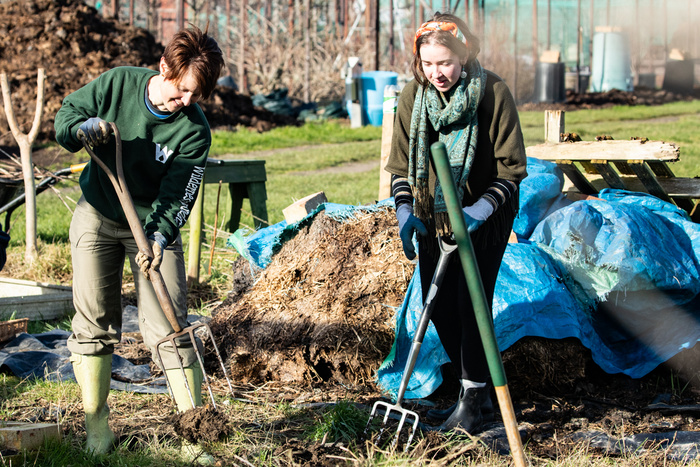
We are pleased to have received donations of timber sleepers and associated fixings, which were used during our volunteer day to build a brand-new raised bed. We also gratefully received a donation of a pallet of mushroom compost, which will be valuable for improving our soil and mulch around our fruit trees and bushes.
With new raised beds in place and more in the planning, we are very pleased have been able to team up with the NHS Clinical Commissioning Group and NHS Living Well Programme to set up a new allotment horticultural and green therapy scheme. This enables us to work with NHS patients on the long waiting list for hip and knee replacements as well as cancer survivors. We will be able to offer a safe, sociable, productive and encouraging community space those people with particular physical and mental needs.
A huge Thank you to our plot neighbours, allotment friends and the allotment chairs Karen & Ray Lawrence, who regularly pop by to say ‘Hello’ and enrich us with friendly words, helpful suggestions and a pat on the shoulder!
Currently the food grown at the allotment is shared amongst those growing it as the best way to learn where our food comes from and engage people with the subjects of nutrition and cooking. We also donate food to the homeless charity Sanctus in Broomfield to support others in the community in need. The allotments create a hub for people to feel safe, carry out constructive and tangible work, break cycles of loneliness or social isolation and are an important part of the local community.
As 2021 drew to a close, we concluded that much was achieved to make the allotment garden look great and ready ‘to grow’ for the coming year. We received truly encouraging feedback from children, parents, our adult participant as well as other plot holders, who all reflected on many enjoyable, inspirational and encouraging hours ‘down to earth’.

We continue to be grateful to our funders & donators and fantastic support given to the project by all involved. We constantly grow publicity through local and social media for the allotments and to encourage more people to grow food at home following 2 pandemic years of truly valuing our green spaces and experiencing gardening as a therapeutic tool to improve our health.
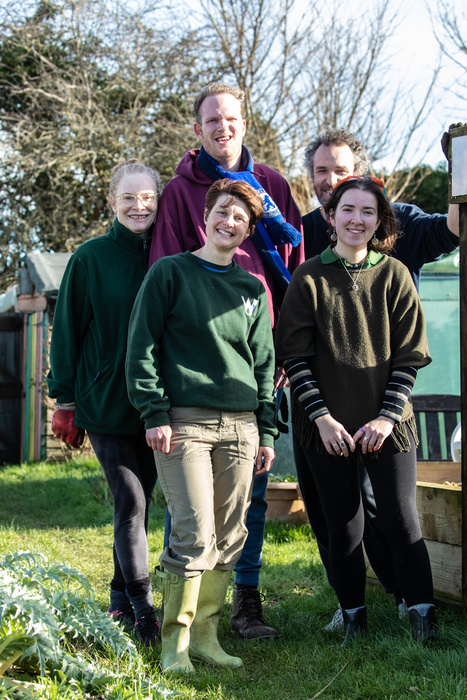
Article produced by Carolin Rogers, Wilderness Foundation.
If you have an interest in volunteering, or to find out more about the Wilderness Foundation and the Down to Earth activities, contact details are provided under.
All photographs - www.raylawphoto.co.uk
Keep up-to-date with what’s happening on our plots and elsewhere at the Wilderness Foundation by visiting our website: www.wildernessfoundation.org.uk. You can also speak to me ,Carolin Rogers, on 07757 536638 or contact me via email: carolin@wildernessfoundation.org.uk

Article produced by Carolin Rogers, Wilderness Foundation.
If you have an interest in volunteering, or to find out more about the Wilderness Foundation and the Down to Earth activities, contact details are provided under.
All photographs - www.raylawphoto.co.uk
Keep up-to-date with what’s happening on our plots and elsewhere at the Wilderness Foundation by visiting our website: www.wildernessfoundation.org.uk. You can also speak to me ,Carolin Rogers, on 07757 536638 or contact me via email: carolin@wildernessfoundation.org.uk
From Cabbages to Coconuts
04th July 2021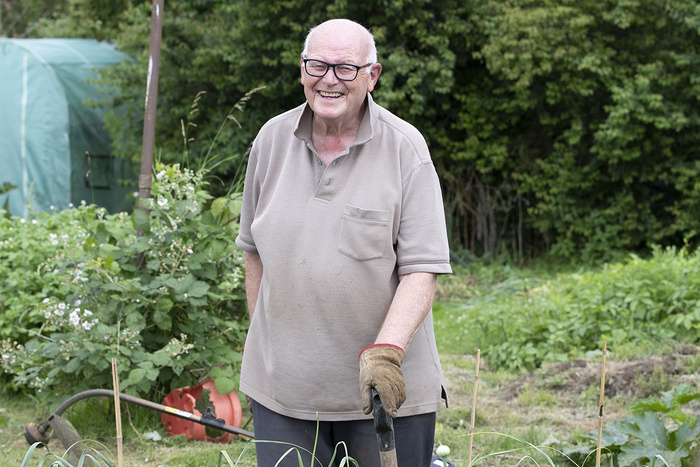
We have been fortunate to have a host of Plot holders contribute articles to the web site, and very graciously Ken Hay agreed to provide a piece for us. Ken is one of the long standing plot holders and association members on site, not with standing this had to put up with one or two of us at school too! As with all the other contributions we are deeply grateful to Ken for putting something together for us.
I was married in 1973, and Sue and I went to live in Witham, I having taken a job as Head of Music at Hylands School. That was when I took my first allotment. It was in the south of the town, by the disused railway embankment, next to a convenient stream. I learnt- quickly- about couch grass, horse tail and a lot of other goodies!
For a while, I was joined on the embankment by two traveller families (Romany.) "Don't play on man's dirt!" I heard one shouting at his young son. "Man leaves us alone,.We leave him alone." So I left a couple of cabbages by one of the caravans when I left.
Next time I worked there, a burly chap came down from the embankment and greeted me with "Killed yer mice for yer!" (They'd made a nest in my peas.)
"Thanks!"
"Worth a couple of cabbages I reckon!"
When our children came, we moved to Chelmsford, and I went on the Council's waiting list, eventually getting a plot. At about this time, a young lad- in my class at Hylands- named Raymond Lawrence!- offered to play a piece of music by Bach in School Assembly. I- and more importantly the Head Teacher, Dr. Smith, enthusiastically agreed. The next day, Ray turned up at school, announcing- "I've left the music at home-but there is SOMETHING I can play from memory instead! Which is how the Head came to announce to the assembled multitude "Instead of a hymn this morning, Raymond Lawrence will play, on the piano- "I'VE GOT A LOVELY BUNCH OF COCONUTS!"
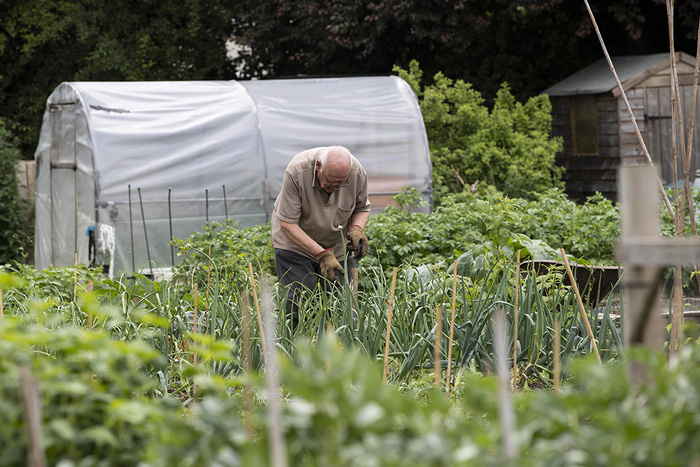
04th July 2021
In: Features

We have been fortunate to have a host of Plot holders contribute articles to the web site, and very graciously Ken Hay agreed to provide a piece for us. Ken is one of the long standing plot holders and association members on site, not with standing this had to put up with one or two of us at school too! As with all the other contributions we are deeply grateful to Ken for putting something together for us.
I was married in 1973, and Sue and I went to live in Witham, I having taken a job as Head of Music at Hylands School. That was when I took my first allotment. It was in the south of the town, by the disused railway embankment, next to a convenient stream. I learnt- quickly- about couch grass, horse tail and a lot of other goodies!
For a while, I was joined on the embankment by two traveller families (Romany.) "Don't play on man's dirt!" I heard one shouting at his young son. "Man leaves us alone,.We leave him alone." So I left a couple of cabbages by one of the caravans when I left.
Next time I worked there, a burly chap came down from the embankment and greeted me with "Killed yer mice for yer!" (They'd made a nest in my peas.)
"Thanks!"
"Worth a couple of cabbages I reckon!"
When our children came, we moved to Chelmsford, and I went on the Council's waiting list, eventually getting a plot. At about this time, a young lad- in my class at Hylands- named Raymond Lawrence!- offered to play a piece of music by Bach in School Assembly. I- and more importantly the Head Teacher, Dr. Smith, enthusiastically agreed. The next day, Ray turned up at school, announcing- "I've left the music at home-but there is SOMETHING I can play from memory instead! Which is how the Head came to announce to the assembled multitude "Instead of a hymn this morning, Raymond Lawrence will play, on the piano- "I'VE GOT A LOVELY BUNCH OF COCONUTS!"

On retirement, I thought- "Ah!- much more time to grow veg." But it doesn't work that way! I LOVE working my plot, but have also learnt that music folk never retire!- Church organ, Clarinet in CAPRICE (the local wind orchestra,) accompanying people on piano etc.- but there's still time to get huge pleasure- and frustration!- from growing potatoes, beans, onions, garlic, tomatoes, lettuce, etc. And there's STILL plenty of couch grass- and blackfly, slugs, snails. NEVER a dull moment!
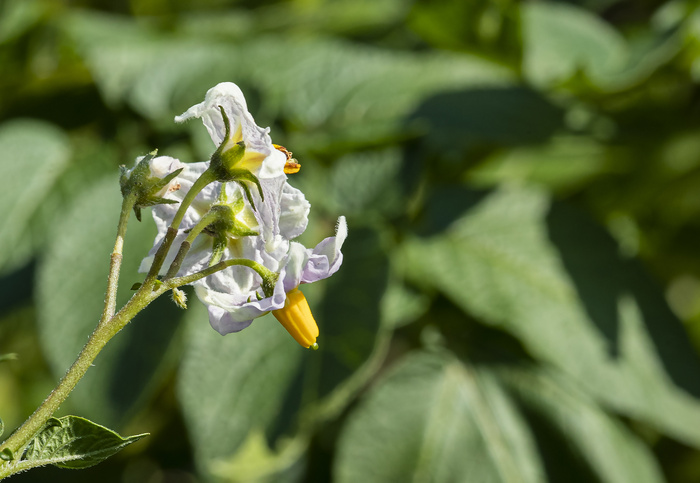

I have always wondered what the conversation in the staff room may have been after the episode with assembly. Fred Heatherton ( a pseudonym for the songwriter(s) is a long, long way from JS Bach.
If you would like to contribute to the site, please don't hesitate to contact Ray via the website or at the trading hut / plot 63.
Our thanks once again to Ken.
If you would like to contribute to the site, please don't hesitate to contact Ray via the website or at the trading hut / plot 63.
Our thanks once again to Ken.
Growing 'a Bit of Home'
27th April 2021 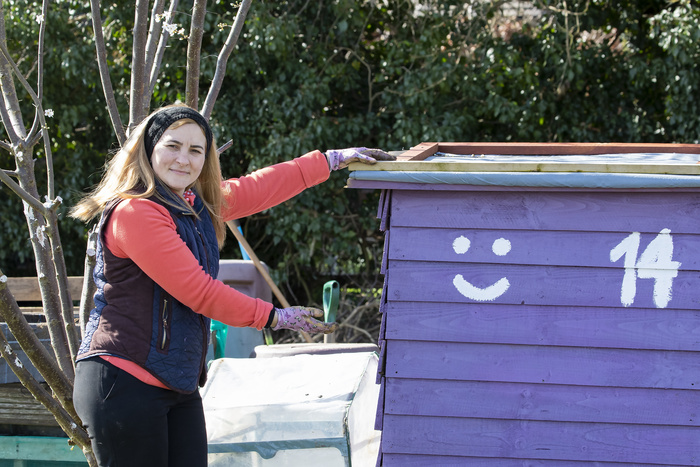
The latest featured plot holder is a relative newcomer to the site, Flora Nica, plot 14 who has turned an overgrown, unkempt area of allotment into a hugely welcoming space, inspired by memories of home. A big thank you to Flora who shared the pictures of the site in it's original state, which bears absolutely no comparison with how it looks today, and for providing the words for this article.
As a child in Romania I used to help my parents in the garden almost every day after school from early spring until late autumn. I have so many happy memories of eating juicy strawberries and cherry tomatoes right there in the garden while spending time with my family. So having an allotment has been on my wish list for a while because it means that I could “grow” a bit of home here in UK. As the first lockdown was beginning in March 2020 and I was working only part time, I decided that it was just the right time for me to pursue my dream and apply for an allotment. I did my research about location, parking and other facilities and Melbourne Park just stood out to me.
I applied online for a plot and prepared myself for a long wait. But surprisingly only few months later I got an email about an available plot at Melbourne Park that could be mine if I didn't mind it being “a little bit overgrown”. I was so excited that I went to see the plot the very same day. Although the plot was badly overgrown I really liked it and soon after I became the lucky tenant of Plot 14 😊
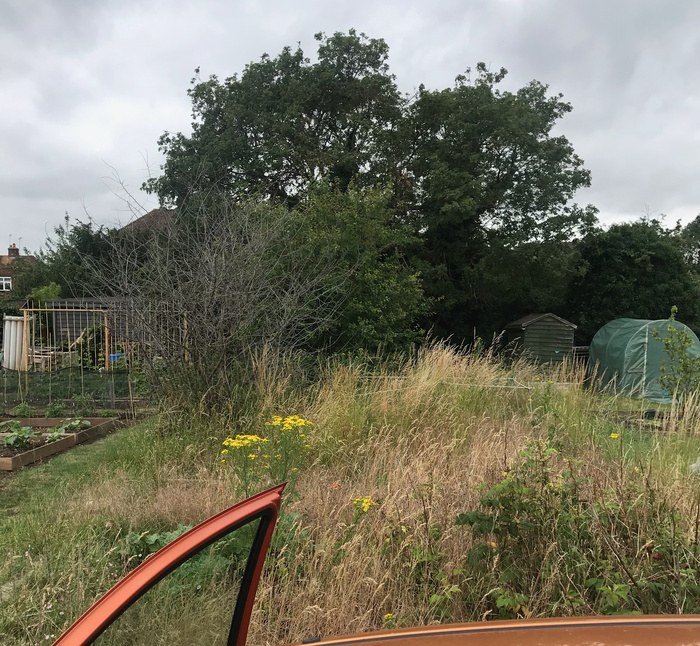
On 1st of July 2020 I started clearing the plot. It was really overgrown, had a dead tree that needed removing and there was a lot of rotten wood left behind by the previous tenants. I did sometimes asked myself: “what have I done?” But every small patch that I cleared just kept me motivated to do better the next day. Amongst the weeds I found raspberry canes, rhubarb and a blueberry bush which I jokingly call my “inheritance”.
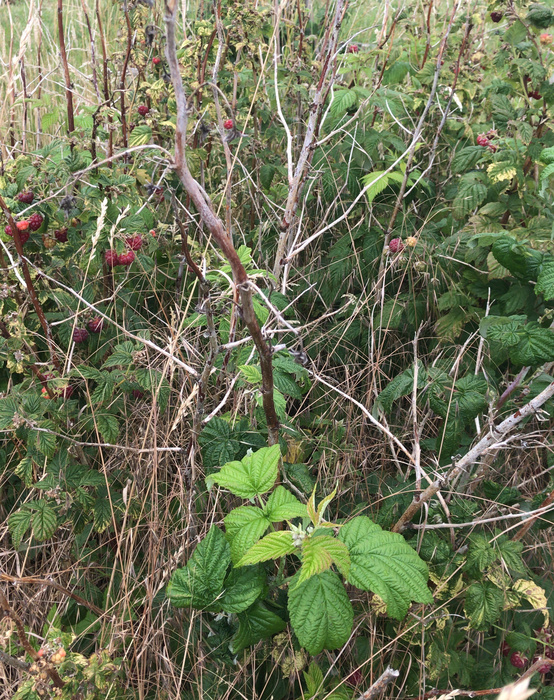
It has taken a lot of hard work to bring the plot where it is now but it was all worth it. My husband helped me build a pretty shed that I call my happy place and I also have a small tool shed that I have built myself from reclaimed wood.
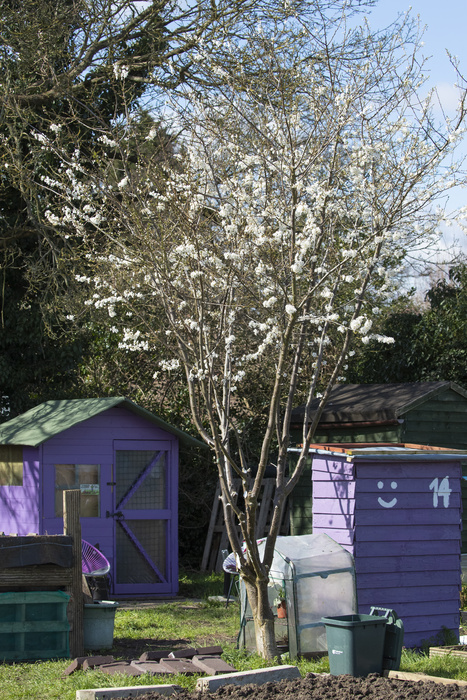
I have enjoyed every single day spent at the allotment so far and it has kept me sane through these scary and uncertain times of the COVID-19 pandemic. The allotment itself has been exactly what I was hoping for but I was pleasantly surprised to discover an amazing sense of community that I wasn’t expecting on such a large site. I felt welcome from the beginning and everyone has been so helpful and kind. Many of my allotment neighbours gave me lovely fruit and veg from their plots which made me feel very happy and grateful.
I love the on site little shop, Karen and Tony are doing an amazing job offering for sale almost everything you could ever need for your allotment at very reasonable prices and even the manure deliveries are so generous(my first one will last me for many years to come).
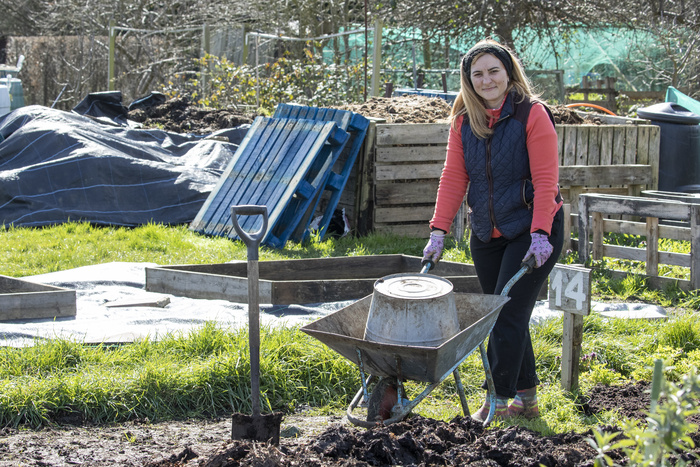
I couldn’t grow much last year but I have great plans for this year. I have prepared the soil and I am going to use a crop rotation system to grow potatoes, onions, tomatoes, cucumbers, beans, cabbages, lettuce, carrots, strawberries, sprouts and lots of fresh herbs and flowers. I can’t wait to see what will grow best.
I look forward to spending many happy days working hard and enjoying lots of delicious fruit and veg and I also hope that 2021 will be a much happier and more normal year for all of us.
27th April 2021
In: Features

The latest featured plot holder is a relative newcomer to the site, Flora Nica, plot 14 who has turned an overgrown, unkempt area of allotment into a hugely welcoming space, inspired by memories of home. A big thank you to Flora who shared the pictures of the site in it's original state, which bears absolutely no comparison with how it looks today, and for providing the words for this article.
As a child in Romania I used to help my parents in the garden almost every day after school from early spring until late autumn. I have so many happy memories of eating juicy strawberries and cherry tomatoes right there in the garden while spending time with my family. So having an allotment has been on my wish list for a while because it means that I could “grow” a bit of home here in UK. As the first lockdown was beginning in March 2020 and I was working only part time, I decided that it was just the right time for me to pursue my dream and apply for an allotment. I did my research about location, parking and other facilities and Melbourne Park just stood out to me.
I applied online for a plot and prepared myself for a long wait. But surprisingly only few months later I got an email about an available plot at Melbourne Park that could be mine if I didn't mind it being “a little bit overgrown”. I was so excited that I went to see the plot the very same day. Although the plot was badly overgrown I really liked it and soon after I became the lucky tenant of Plot 14 😊

On 1st of July 2020 I started clearing the plot. It was really overgrown, had a dead tree that needed removing and there was a lot of rotten wood left behind by the previous tenants. I did sometimes asked myself: “what have I done?” But every small patch that I cleared just kept me motivated to do better the next day. Amongst the weeds I found raspberry canes, rhubarb and a blueberry bush which I jokingly call my “inheritance”.

It has taken a lot of hard work to bring the plot where it is now but it was all worth it. My husband helped me build a pretty shed that I call my happy place and I also have a small tool shed that I have built myself from reclaimed wood.

I have enjoyed every single day spent at the allotment so far and it has kept me sane through these scary and uncertain times of the COVID-19 pandemic. The allotment itself has been exactly what I was hoping for but I was pleasantly surprised to discover an amazing sense of community that I wasn’t expecting on such a large site. I felt welcome from the beginning and everyone has been so helpful and kind. Many of my allotment neighbours gave me lovely fruit and veg from their plots which made me feel very happy and grateful.
I love the on site little shop, Karen and Tony are doing an amazing job offering for sale almost everything you could ever need for your allotment at very reasonable prices and even the manure deliveries are so generous(my first one will last me for many years to come).

I couldn’t grow much last year but I have great plans for this year. I have prepared the soil and I am going to use a crop rotation system to grow potatoes, onions, tomatoes, cucumbers, beans, cabbages, lettuce, carrots, strawberries, sprouts and lots of fresh herbs and flowers. I can’t wait to see what will grow best.
I look forward to spending many happy days working hard and enjoying lots of delicious fruit and veg and I also hope that 2021 will be a much happier and more normal year for all of us.
No Crooked Lines and Robust Barriers
07th April 2021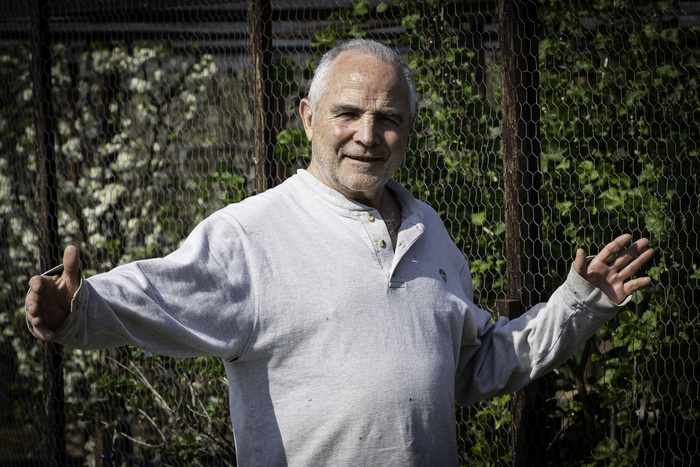
07th April 2021
In: Features

Last years joint winner of the best Allotment, Peter Caffrey kindly penned an article for the website. One of the plotholders with the longest association with the site, we were provided with a bit of insight into his activity. The latest article, is a must read, with lots of information, tips, hints or how to's in terms of Peter's growing calendar.
I maintain two full-sized 10 rod plots, assisted by good friend Dave Wallace, who keeps the grass cut, waters while I am away, enjoys the DIY and generally keeps things neat and tidy. I dare not set out a crooked line!
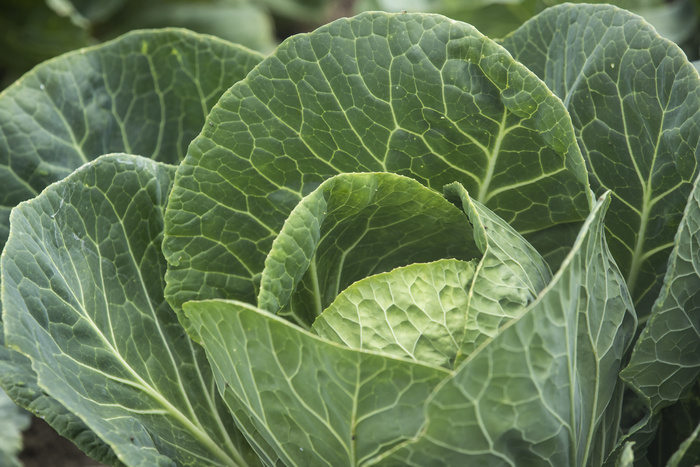
With the prevalence of destructive wildlife on the plots it has been hugely beneficial to have robust barriers in place to enable the successful growing of such vulnerable crops as sweet corn, peas, brassicas and soft fruit. We have constructed 2 more small scale barriers which means we can follow correct crop rotation.
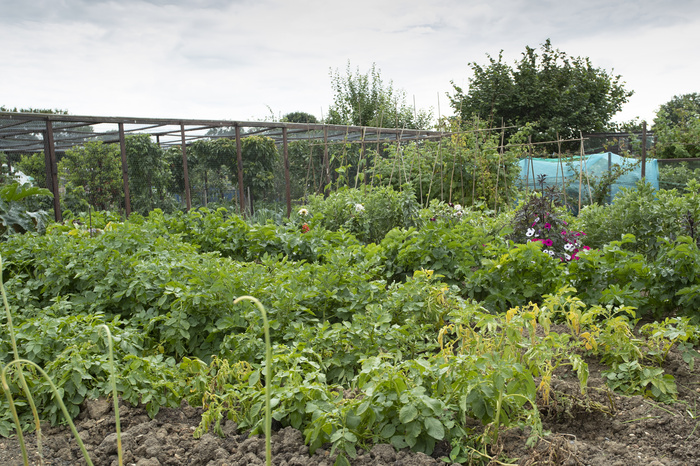
Thanks to a gift from Ray Lawrence the first attempt growing tromboncinos was a success. It was a bonus that, as well as adding to the menu it also proved to have excellent storage qualities.
This year looks like it is going to be a bumper year for our Kent Cob Nuts. (Due to previous surplus we are still eating nuts that have been 3 years in storage.) Nature never fails to impress as the male hazel catkins reach peak pollination just as the tiny red female flowers emerge on the branches to grow on to be this year’s cob nuts. Next winter it will be time to reduce the size of the two original trees so we have allowed 6 new shoots to develop from the base of the trees to replace the mature trunks that we will remove. The year after we will do the same with the other two trees which were grown from cuttings from the original trees. The mice help themselves to the ripe nuts. They eat some immediately, but others they bury. They forget where some are stored and the nuts germinate and grow. I retrieve these and pot them up to grow on. If anyone would like two plants ( two are needed for cross-pollination) please let me know. As the plants have been raised from nuts the resulting plants will revert back to hazel trees as opposed to true Kent Cob nuts, but nevertheless produce a very worthwhile crop. If the saplings had been grown from cuttings they would be true Kent Cob nuts.
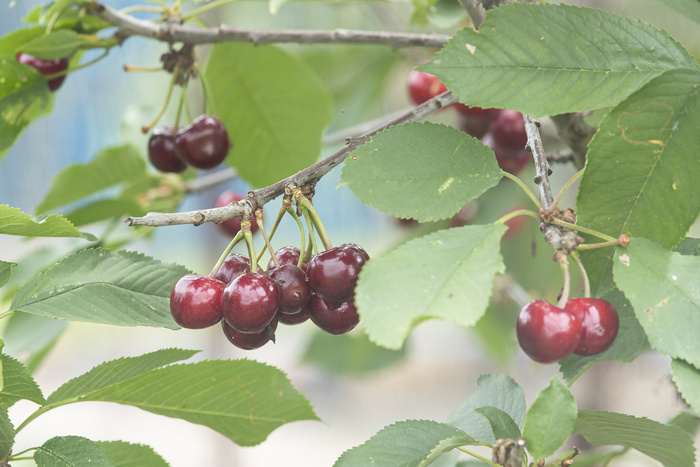
Also with an eye for renewal 4 blackcurrant cuttings, 2 josta berry cuttings and a gogi berry cutting are being established to replace ageing parent plants. In addition to the 9 blueberry plants in the main cage, 6 others have been planted in the wired polytunnel. 3 of these are in the shaded side and do not look happy and so will be relocated. 6 other developing blueberry plants are also now ready for planting in ericaceous compost. Cuttings will again be taken from the most productive plants in July. The main blueberry area was restructured in March with new membrane laid to reduce maintenance and 9 pots were re-positioned.
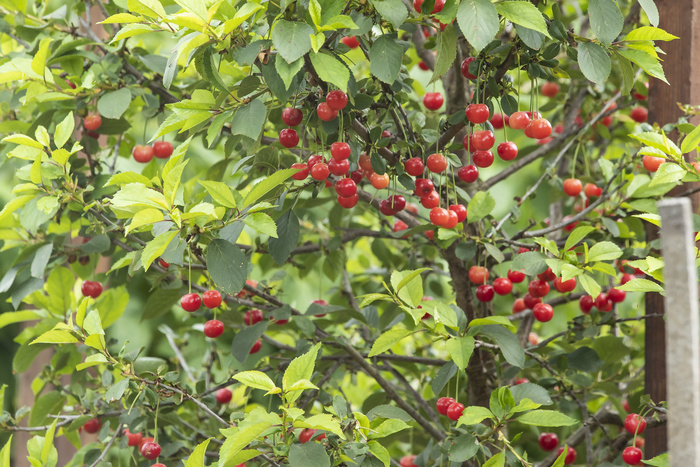
A new strawberry bed was established using runners from the best of the now ageing strawberry plants in the existing bed. Two years ago this new bed’s development was started by becoming that year’s compost site. The year after the compost had matured sufficiently to grow the season’s courgettes prior to becoming the fertile new strawberry bed.
Although last year was a bumper year for soft fruit as well as apples, pears, plums and cherries, the apples were badly infested with codling moth larvae. To remedy this a winter wash has been applied as well as circling every tree trunk with a sticky collar.
Garlic was planted in late Autumn. The best cloves are saved each year, only from the very best specimens which I have developed over many years from the original stock “SOLENT WIGHT”, so they have become very well adapted to the conditions on the allotment and produce a good yield of long storing cloves.
To feed my obsession with growing peas 4 trenches have been dug out in the main cage to a depth of 2 spades, manured and covered over to settle before sowing. The first row was sown and protected with cloches in early February with the hardy, round seeded METEOR variety. I find this has better flavour than the other hardy variety FELTHAM FIRST. For succession, in early March the next row was sown with wrinkle seeded, sweeter ALDERMAN – a 6 foot tall variety that will take longer to crop. Next will be the best flavour of all – HURST GREEN SHAFT. So sweet the birds would devour it if it were not under protection of the cage.
Cloches have been in place for several weeks warming the soil in preparation for sowing of salad crops. Successional sowings of broad beans are established. Onion sets and shallots are in the ground. Autumn and Summer raspberries along with all other soft fruits have been pruned. Asparagus beds and raised beds have been mulched with manure. Potato trenches have also been manured in preparation for seed potatoes. A row of LADY CHRYSTL and a row of ARRAN PILOT were planted 2 weeks apart (Early and Mid March). Later plantings will be CHARLOTTE and DESIREE.
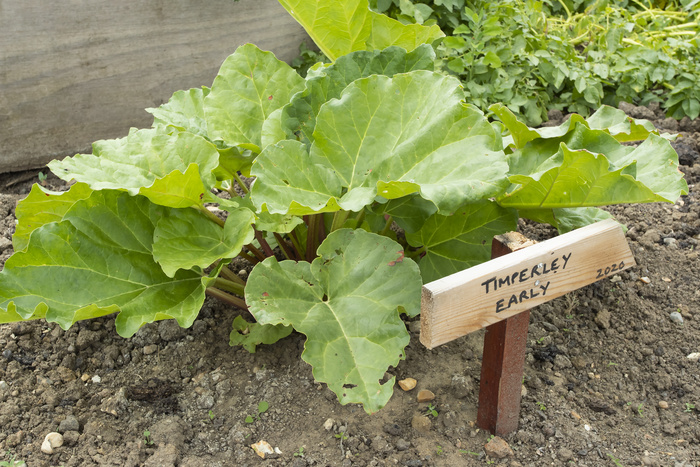
A new rhubarb bed was planted with 3 different varieties last year as the original rhubarb bed is ageing. The old crowns are now covered by bins to force the last crop before being dug up to create more space. I only force crowns that are over 2 years old and after cropping the forced rhubarb I do not harvest any more for a while to allow the crown to recover. After this year the forced crowns will no longer be productive enough to justify their space.
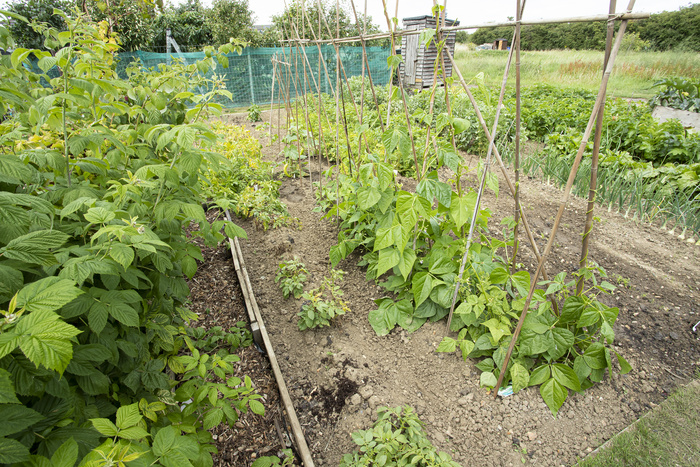
The next direct sowings will consist of:
Broad beans – AQUADULCE then EXHIBITION LONGPOD
Lettuce – LITTLE GEM and TOM THUMB
Radish – FRENCH BREAKFAST
Carrots – AMSTERDAM FORCING then EARLY NANTES
Beetroot – BOLTARDY then DETROIT GLOBE
Spring onion – WHITE LISBON
Onion – RED BARON and STURON
Parsnip - GLADIATOR
Potatoes – LADY CHRYSTL and CHARLOTTE
HOME GREENHOUSES – currently hold the full range of brassicas, lettuce, beetroot, spring onion, onions, leeks, sweet peppers, chillies and 5 varieties of tomatoes. Later sowings will include cucumbers, squash, pumpkin, courgettes, runner and French beans.
MARCH 2021
Once again a huge thank you to Peter for contributing his thoughts and activities and hopefully we can catch up with his growing successes during the year.
I maintain two full-sized 10 rod plots, assisted by good friend Dave Wallace, who keeps the grass cut, waters while I am away, enjoys the DIY and generally keeps things neat and tidy. I dare not set out a crooked line!

With the prevalence of destructive wildlife on the plots it has been hugely beneficial to have robust barriers in place to enable the successful growing of such vulnerable crops as sweet corn, peas, brassicas and soft fruit. We have constructed 2 more small scale barriers which means we can follow correct crop rotation.

Thanks to a gift from Ray Lawrence the first attempt growing tromboncinos was a success. It was a bonus that, as well as adding to the menu it also proved to have excellent storage qualities.
This year looks like it is going to be a bumper year for our Kent Cob Nuts. (Due to previous surplus we are still eating nuts that have been 3 years in storage.) Nature never fails to impress as the male hazel catkins reach peak pollination just as the tiny red female flowers emerge on the branches to grow on to be this year’s cob nuts. Next winter it will be time to reduce the size of the two original trees so we have allowed 6 new shoots to develop from the base of the trees to replace the mature trunks that we will remove. The year after we will do the same with the other two trees which were grown from cuttings from the original trees. The mice help themselves to the ripe nuts. They eat some immediately, but others they bury. They forget where some are stored and the nuts germinate and grow. I retrieve these and pot them up to grow on. If anyone would like two plants ( two are needed for cross-pollination) please let me know. As the plants have been raised from nuts the resulting plants will revert back to hazel trees as opposed to true Kent Cob nuts, but nevertheless produce a very worthwhile crop. If the saplings had been grown from cuttings they would be true Kent Cob nuts.

Also with an eye for renewal 4 blackcurrant cuttings, 2 josta berry cuttings and a gogi berry cutting are being established to replace ageing parent plants. In addition to the 9 blueberry plants in the main cage, 6 others have been planted in the wired polytunnel. 3 of these are in the shaded side and do not look happy and so will be relocated. 6 other developing blueberry plants are also now ready for planting in ericaceous compost. Cuttings will again be taken from the most productive plants in July. The main blueberry area was restructured in March with new membrane laid to reduce maintenance and 9 pots were re-positioned.

A new strawberry bed was established using runners from the best of the now ageing strawberry plants in the existing bed. Two years ago this new bed’s development was started by becoming that year’s compost site. The year after the compost had matured sufficiently to grow the season’s courgettes prior to becoming the fertile new strawberry bed.
Although last year was a bumper year for soft fruit as well as apples, pears, plums and cherries, the apples were badly infested with codling moth larvae. To remedy this a winter wash has been applied as well as circling every tree trunk with a sticky collar.
Garlic was planted in late Autumn. The best cloves are saved each year, only from the very best specimens which I have developed over many years from the original stock “SOLENT WIGHT”, so they have become very well adapted to the conditions on the allotment and produce a good yield of long storing cloves.
To feed my obsession with growing peas 4 trenches have been dug out in the main cage to a depth of 2 spades, manured and covered over to settle before sowing. The first row was sown and protected with cloches in early February with the hardy, round seeded METEOR variety. I find this has better flavour than the other hardy variety FELTHAM FIRST. For succession, in early March the next row was sown with wrinkle seeded, sweeter ALDERMAN – a 6 foot tall variety that will take longer to crop. Next will be the best flavour of all – HURST GREEN SHAFT. So sweet the birds would devour it if it were not under protection of the cage.
Cloches have been in place for several weeks warming the soil in preparation for sowing of salad crops. Successional sowings of broad beans are established. Onion sets and shallots are in the ground. Autumn and Summer raspberries along with all other soft fruits have been pruned. Asparagus beds and raised beds have been mulched with manure. Potato trenches have also been manured in preparation for seed potatoes. A row of LADY CHRYSTL and a row of ARRAN PILOT were planted 2 weeks apart (Early and Mid March). Later plantings will be CHARLOTTE and DESIREE.

A new rhubarb bed was planted with 3 different varieties last year as the original rhubarb bed is ageing. The old crowns are now covered by bins to force the last crop before being dug up to create more space. I only force crowns that are over 2 years old and after cropping the forced rhubarb I do not harvest any more for a while to allow the crown to recover. After this year the forced crowns will no longer be productive enough to justify their space.

The next direct sowings will consist of:
Broad beans – AQUADULCE then EXHIBITION LONGPOD
Lettuce – LITTLE GEM and TOM THUMB
Radish – FRENCH BREAKFAST
Carrots – AMSTERDAM FORCING then EARLY NANTES
Beetroot – BOLTARDY then DETROIT GLOBE
Spring onion – WHITE LISBON
Onion – RED BARON and STURON
Parsnip - GLADIATOR
Potatoes – LADY CHRYSTL and CHARLOTTE
HOME GREENHOUSES – currently hold the full range of brassicas, lettuce, beetroot, spring onion, onions, leeks, sweet peppers, chillies and 5 varieties of tomatoes. Later sowings will include cucumbers, squash, pumpkin, courgettes, runner and French beans.
MARCH 2021
Once again a huge thank you to Peter for contributing his thoughts and activities and hopefully we can catch up with his growing successes during the year.
2021 WILL be GREAT
21st March 2021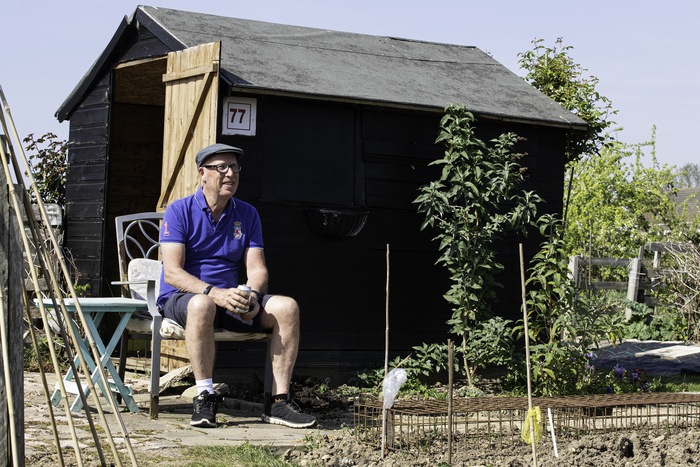
21st March 2021
In: Features

2021 will be great !!
Last year was great. So much time and brilliant weather. The only retreat in lockdown. Somewhere to go,a routine, sharing ideas and learning from others. My allottment was an escape ! A sanctuary and a place to reflect. I’m sure my wife also appreciated me taking a flask, giving her space and going off to work the land with a purpose. We all needed space and of course there was always the news to take home.
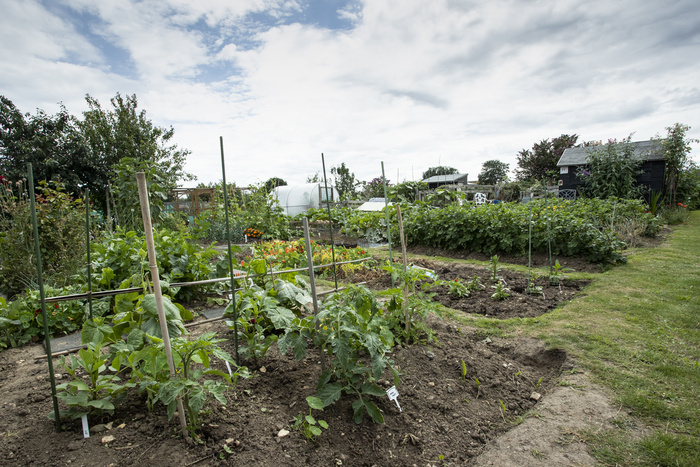
What was growing well and what had failed . What had to be eaten, frozen, given away or thrown ! She of course found it fascinating...sometimes !! It seems so long ago now ! My fellow allottment holders shared their knowledge and I planted and harvested so much, far more than my family and neighbours at home ever needed. Everywhere was tidy. At the end of the season all was organised for the coming year, every weed removed, all beds dug and manure spread. Seeds have been bought and where to plant everything has been considered.
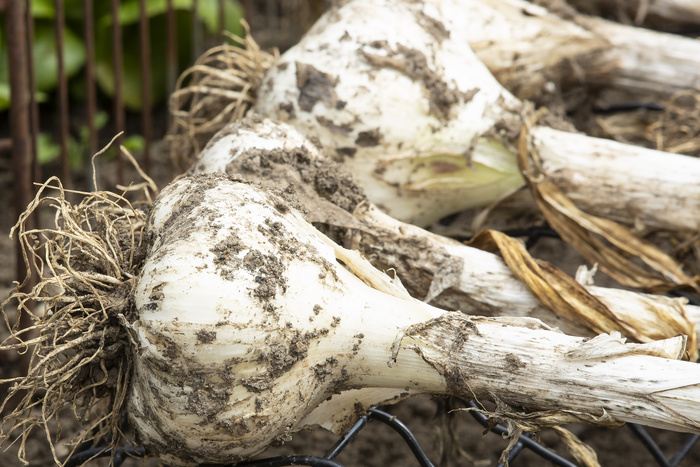
My target for this year is simple ..
Can I have a similar and productive allottment post lockdown when life returns with all its other demands and interests? Instead of daily visits can I come down 2/3 times a week ( unless there is a drought ! Again ! ) and not only work hard but take the time to relax and enjoy the plot?
To achieve this I’ve prepared everything in advance.
Potatoes are chitting in the polytunnel. Compost is organised. Beds for each crop have been considered. Canes and supports are in now. Land not manured have been dug and raked. All weeds, well most, have been removed.
I intend to cover some areas with sheeting,to plant squashes, marrows and courgettes. These will be in different areas to last year. The general organisation of last year will be repeated, saving time by just getting on with it. I loved companion planting, marigolds, sunflowers, and nasturtiums. Good for the plot,and wildlife but also more colourful. Something to look at when there is time to sit and enjoy a mug of tea.
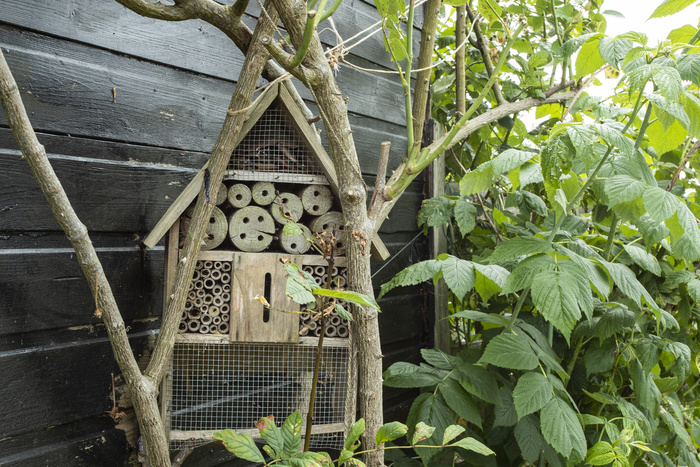
In one poly tunnel I will plant varieties of chillies. This was my most successful crop to my surprise last year. So many picked,eaten or frozen whole and still being used. A friend took lots of them and made chilli jam. Wonderful ! My other poly tunnel will once again have varieties of tomatoes. Everything is ready now. I’m trying to sort things out now rather than March where the focus will be on planting and hoeing !! The last job after every visit will be to hoe all 3 allotments - 20 minutes. Those weeds will not be allowed to win !! I will ensure that I space crops out to support this.
I’d like to plant even more potatoes, another 2 rows and we wouldn't buy any from the shops ! I’ve learnt at last how to grow Brussels properly, I will repeat what I’ve learnt. Everything will be labelled so I can remember what I’ve enjoyed and what I’ve planted ! All this advice was given to me last year. In addition and finally, every time I think I want to plant something, I will make myself wait a week and take my time. Planting successfully saves time and money.
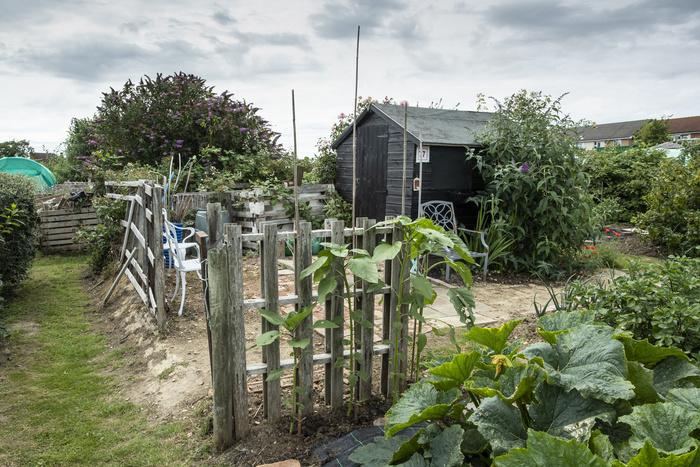
2021 will be a good year for so many reasons. What worked last year may not be as successful again but I look forward to that first asparagus crop, Pentland potatoes , and broad Beans. I can’t wait !
The Association is once again thankful to Kevin for sharing his thoughts on how he got along last year, together with his plans for this. In addition, Kevin was nominated along with Peter Caffrey as the Best Plots in the Annual competition last year. Peter has also kindly agreed to share his thoughts with us, look out for this in future posts.
We remain grateful to everyone who has contributed articles for the website, and if you would like to take part and share your views with us, please get in touch via the website or through Ray and Karen on site. We'd be delighted to share your growing plans, pains, and equally successes!
Last year was great. So much time and brilliant weather. The only retreat in lockdown. Somewhere to go,a routine, sharing ideas and learning from others. My allottment was an escape ! A sanctuary and a place to reflect. I’m sure my wife also appreciated me taking a flask, giving her space and going off to work the land with a purpose. We all needed space and of course there was always the news to take home.

What was growing well and what had failed . What had to be eaten, frozen, given away or thrown ! She of course found it fascinating...sometimes !! It seems so long ago now ! My fellow allottment holders shared their knowledge and I planted and harvested so much, far more than my family and neighbours at home ever needed. Everywhere was tidy. At the end of the season all was organised for the coming year, every weed removed, all beds dug and manure spread. Seeds have been bought and where to plant everything has been considered.

My target for this year is simple ..
Can I have a similar and productive allottment post lockdown when life returns with all its other demands and interests? Instead of daily visits can I come down 2/3 times a week ( unless there is a drought ! Again ! ) and not only work hard but take the time to relax and enjoy the plot?
To achieve this I’ve prepared everything in advance.
Potatoes are chitting in the polytunnel. Compost is organised. Beds for each crop have been considered. Canes and supports are in now. Land not manured have been dug and raked. All weeds, well most, have been removed.
I intend to cover some areas with sheeting,to plant squashes, marrows and courgettes. These will be in different areas to last year. The general organisation of last year will be repeated, saving time by just getting on with it. I loved companion planting, marigolds, sunflowers, and nasturtiums. Good for the plot,and wildlife but also more colourful. Something to look at when there is time to sit and enjoy a mug of tea.

In one poly tunnel I will plant varieties of chillies. This was my most successful crop to my surprise last year. So many picked,eaten or frozen whole and still being used. A friend took lots of them and made chilli jam. Wonderful ! My other poly tunnel will once again have varieties of tomatoes. Everything is ready now. I’m trying to sort things out now rather than March where the focus will be on planting and hoeing !! The last job after every visit will be to hoe all 3 allotments - 20 minutes. Those weeds will not be allowed to win !! I will ensure that I space crops out to support this.
I’d like to plant even more potatoes, another 2 rows and we wouldn't buy any from the shops ! I’ve learnt at last how to grow Brussels properly, I will repeat what I’ve learnt. Everything will be labelled so I can remember what I’ve enjoyed and what I’ve planted ! All this advice was given to me last year. In addition and finally, every time I think I want to plant something, I will make myself wait a week and take my time. Planting successfully saves time and money.

2021 will be a good year for so many reasons. What worked last year may not be as successful again but I look forward to that first asparagus crop, Pentland potatoes , and broad Beans. I can’t wait !
The Association is once again thankful to Kevin for sharing his thoughts on how he got along last year, together with his plans for this. In addition, Kevin was nominated along with Peter Caffrey as the Best Plots in the Annual competition last year. Peter has also kindly agreed to share his thoughts with us, look out for this in future posts.
We remain grateful to everyone who has contributed articles for the website, and if you would like to take part and share your views with us, please get in touch via the website or through Ray and Karen on site. We'd be delighted to share your growing plans, pains, and equally successes!
My Little Piece of England
05th October 2020
After all the miserable wet and windy weather which greeted the end of September and beginning of October, we thought it would be good to bring a little bit of sunshine through the website. Earlier in the year we caught up with Liz Sutton who kindly agreed to pen an article for the website. These are Liz's thoughts.
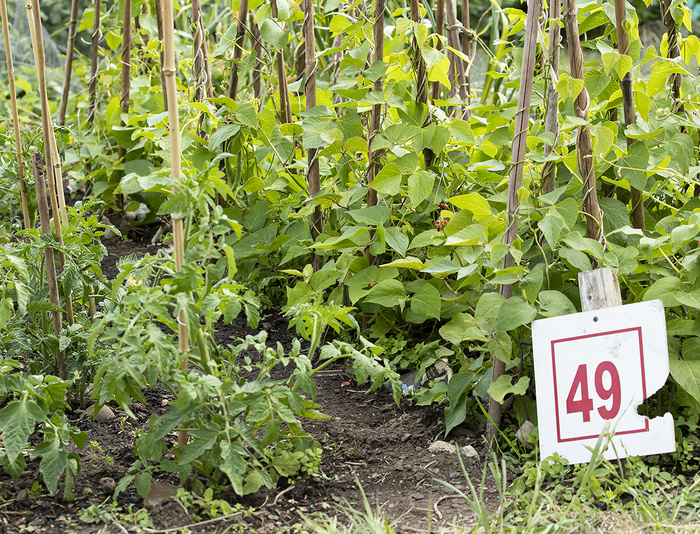
My Little Bit Of England.
It all started back in 2005 when my son, Simon, who was not working at the time, volunteered to assist on the MIND allotment at Melbourne Park. He used to cycle there and enjoyed helping the other members tending the plants, digging, weeding, planting and clearing. He had become quite involved and went every week, and on one occasion returned home and told me all about it. Next time he visited I decided to see what they were all up to and was surprised and delighted to see what was growing on their plot. The friendship and fun they all had was great and I thought I could grow a few vegetables............
I applied for a half plot from Chelmsford Borough Council and was surprised that it was not an expensive undertaking........especially if you are over 60-. The plot was rotavated and then I covered it with membrane to keep out the weeds. I then decided that I could only cope with cultivating a little piece of the plot at a time so uncovered a small amount of membrane at a time when I was ready to tend the ground.
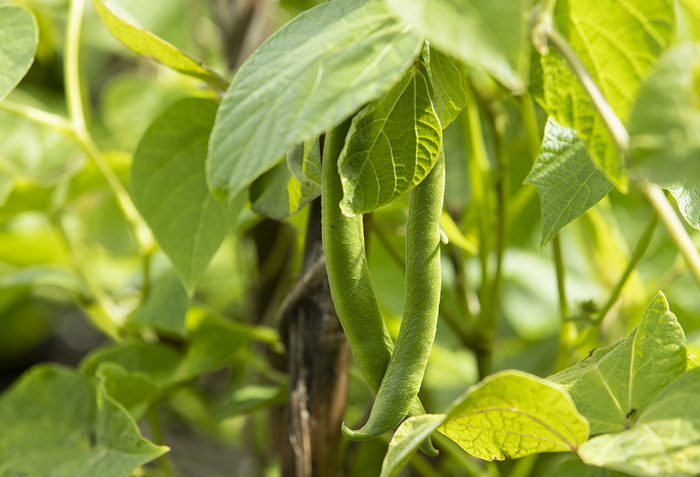
My grandfather, uncle and cousin were all farmers so this is my LITTLE BIT OF ENGLAND, following in the family tradition........... A patch I can grow whatever I like. I now have a large patch of raspberries and, strawberries: and this year I am also growing tomato plants, runner beans, garlic, cabbages, broccoli, cauliflower and carrots.
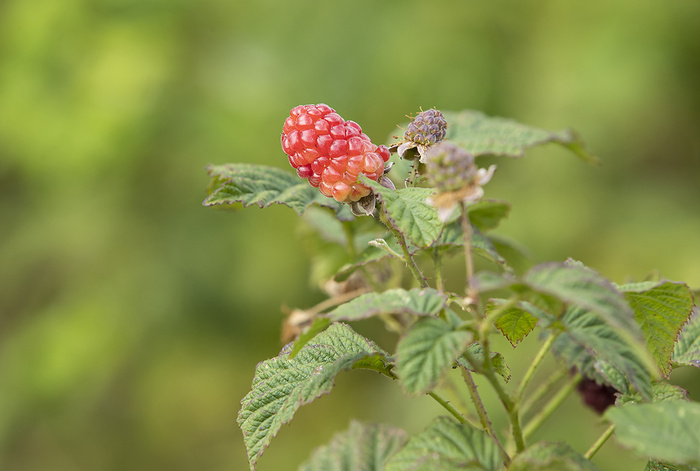
When I have used, frozen, or given away the produce on my patch, the bare patch is covered again with the membrane to lock in the goodness and let it rest..........or am I just a lazy gardener????
People at the site are really helpful and if you want advice other allotment holders are happy to assist. There is a great feeling of family there and often a swapping of produce takes place.
What happened during lock down? I didn’t go near my site for the first 8 weeks and concentrated on decluttering at home and tidying the garden........ (I’ve done my bit there too with a log pile, small pond and a wild flower patch),
When I returned you could have easily mistaken my allotment site for a flower meadow, lovely, but not useful at all. The pretty grasses over shadowed the raspberries and nettles grew with great vigour. My daughter, a nutrition consultant, had a lot of spare time, unable to work because of Covid virus volunteered to assist. With the problem of a torn tendon on my right shoulder some of the work involved on the plot was very painful to do and she was a tremendous help with assisting. We set a plan in motion...........a little bit at a time........... the grasses were cleared, the edges were cut, and soon there was room to plant and sow. I cannot believe what we have achieved in a few short sessions and weeks.......... now the tomato plants have flowers and the runner beans have baby beans forming.........it’s an exciting time now.
And what is more exciting is Amber has gone home with some blue pots given by John and is making a small vegetable gardens in them. She has a tomato plant, carrots, lettuce as well as lots of herbs I have given her. She was off the other day to get some soil from B &Q so I think she is hooked. I am so delighted; there are so many benefits from gardening as well as some lovely produce.
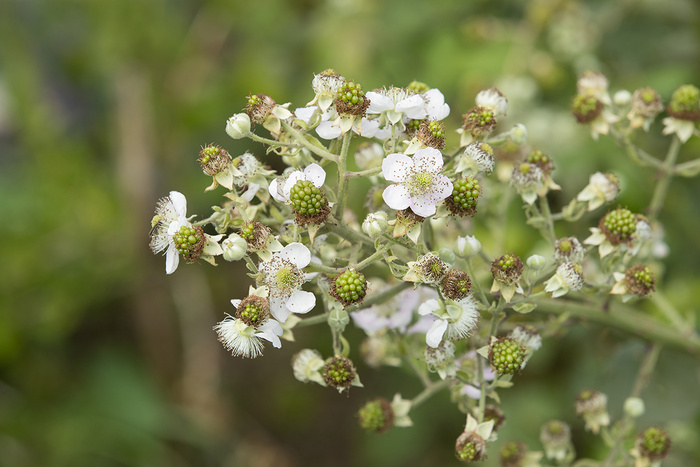
Some things I have learnt while having the plot
1 I have been called “Half Hour Liz”........as that is the maximum amount of time I used to spend on the plot at a time.......... don’t overdo it........you won’t want to go back another time, but to go regularly.
2. Always work out before you get there what the plan is for the day.........stick to it and don’t digress otherwise it could be a lot harder to do it next time.
3, Clear the rubbish as you go...............
4. I don’t have a shed and take the tools from home that I need for each visit
5 I also grow my seedlings at home and take them to the allotment when they are sturdy enough to cope. (It can get very windy on the site).
6. Keep watering...............
Happy Allotmenting!!!
A big thank you to Liz and daughter Amber for sharing their article, 'My Little Piece of England'. Don't forget if you would like to share an article with the Association, get in touch with Ray or Karen or through the website.
05th October 2020
In: Features
After all the miserable wet and windy weather which greeted the end of September and beginning of October, we thought it would be good to bring a little bit of sunshine through the website. Earlier in the year we caught up with Liz Sutton who kindly agreed to pen an article for the website. These are Liz's thoughts.

My Little Bit Of England.
It all started back in 2005 when my son, Simon, who was not working at the time, volunteered to assist on the MIND allotment at Melbourne Park. He used to cycle there and enjoyed helping the other members tending the plants, digging, weeding, planting and clearing. He had become quite involved and went every week, and on one occasion returned home and told me all about it. Next time he visited I decided to see what they were all up to and was surprised and delighted to see what was growing on their plot. The friendship and fun they all had was great and I thought I could grow a few vegetables............
I applied for a half plot from Chelmsford Borough Council and was surprised that it was not an expensive undertaking........especially if you are over 60-. The plot was rotavated and then I covered it with membrane to keep out the weeds. I then decided that I could only cope with cultivating a little piece of the plot at a time so uncovered a small amount of membrane at a time when I was ready to tend the ground.

My grandfather, uncle and cousin were all farmers so this is my LITTLE BIT OF ENGLAND, following in the family tradition........... A patch I can grow whatever I like. I now have a large patch of raspberries and, strawberries: and this year I am also growing tomato plants, runner beans, garlic, cabbages, broccoli, cauliflower and carrots.

When I have used, frozen, or given away the produce on my patch, the bare patch is covered again with the membrane to lock in the goodness and let it rest..........or am I just a lazy gardener????
People at the site are really helpful and if you want advice other allotment holders are happy to assist. There is a great feeling of family there and often a swapping of produce takes place.
What happened during lock down? I didn’t go near my site for the first 8 weeks and concentrated on decluttering at home and tidying the garden........ (I’ve done my bit there too with a log pile, small pond and a wild flower patch),
When I returned you could have easily mistaken my allotment site for a flower meadow, lovely, but not useful at all. The pretty grasses over shadowed the raspberries and nettles grew with great vigour. My daughter, a nutrition consultant, had a lot of spare time, unable to work because of Covid virus volunteered to assist. With the problem of a torn tendon on my right shoulder some of the work involved on the plot was very painful to do and she was a tremendous help with assisting. We set a plan in motion...........a little bit at a time........... the grasses were cleared, the edges were cut, and soon there was room to plant and sow. I cannot believe what we have achieved in a few short sessions and weeks.......... now the tomato plants have flowers and the runner beans have baby beans forming.........it’s an exciting time now.
And what is more exciting is Amber has gone home with some blue pots given by John and is making a small vegetable gardens in them. She has a tomato plant, carrots, lettuce as well as lots of herbs I have given her. She was off the other day to get some soil from B &Q so I think she is hooked. I am so delighted; there are so many benefits from gardening as well as some lovely produce.

Some things I have learnt while having the plot
1 I have been called “Half Hour Liz”........as that is the maximum amount of time I used to spend on the plot at a time.......... don’t overdo it........you won’t want to go back another time, but to go regularly.
2. Always work out before you get there what the plan is for the day.........stick to it and don’t digress otherwise it could be a lot harder to do it next time.
3, Clear the rubbish as you go...............
4. I don’t have a shed and take the tools from home that I need for each visit
5 I also grow my seedlings at home and take them to the allotment when they are sturdy enough to cope. (It can get very windy on the site).
6. Keep watering...............
Happy Allotmenting!!!
A big thank you to Liz and daughter Amber for sharing their article, 'My Little Piece of England'. Don't forget if you would like to share an article with the Association, get in touch with Ray or Karen or through the website.
New Neighbours and No Safaris
07th August 2020
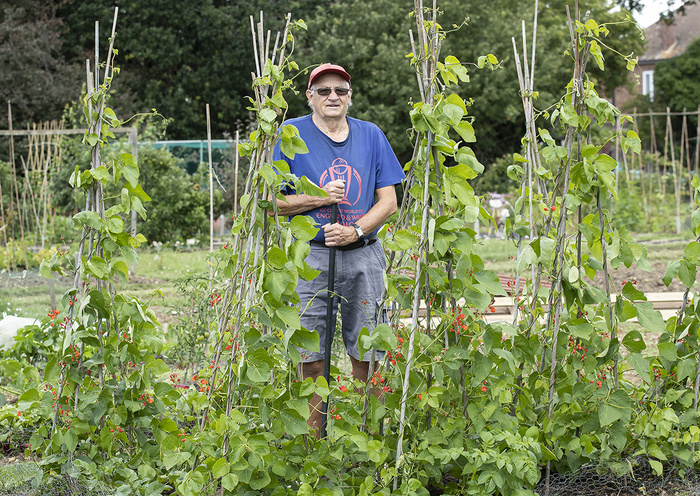
Continuing our series of articles from members of the Association, we caught up with David Ling, ardent West Ham and Chelmsford City fan (has a lot to put up with). David has had a plot for in excess 10 years, and especially on a Saturday morning (pre COVID) you can catch him dashing in and out to ensure he makes it to the City Stadium in good time for kick off.
When I was a lad, we had a big garden and my dad had a vegetable plot. I remember getting a great thrill digging up the potatoes and seeing how many spuds had been produced from one small tuber. It was those memories which drove me to try for myself. I am now in my 11th season as a plot holder and I have seen many changes over the years.
Like new tenants today my plot was to say the least unkempt when I took it on. I had just retired and spent many hours turning it into something resembling an allotment and I can't have done too badly as I won Best Plot in 2012. I had no specific plans other than to grow fruit and vegetables, nothing exotic just traditional crops which is still the case today, I might have been a tad more adventurous but circumstances haven't left me the time to do so. It seems a little odd, but have a long pencil shaped full plot, two halves which span the mid section of the site. This is due to the plot immediately by the sides of my first plot were taken, and took the second half which naturally butted on, so long and narrow.
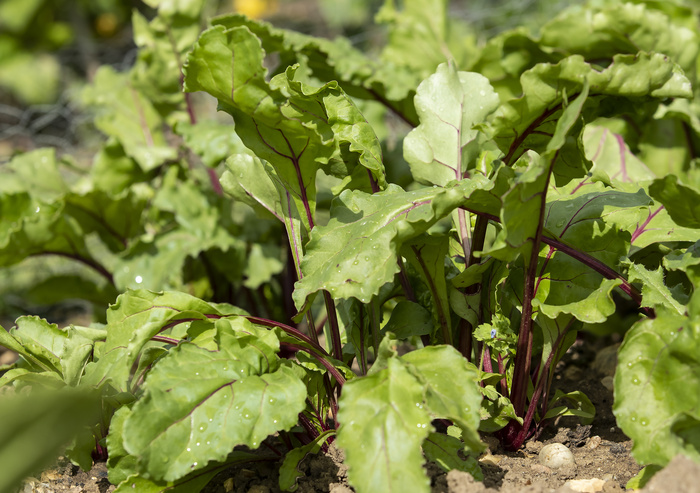
The site has had changes not least the facilities which we now have and praise has to go to Tony for that and latterly to Karen and Ray. Also many of the old allotmenteers have left the site or sadly are no longer with us. As a novice I received much advice from the likes of Stuart, Cyril, Doug and Arthur and I'll be eternally grateful to them. The new tenants seem much younger these days, probably because I'm getting older, and it's now me giving out advice. My advice to newcomers would be not to take on to much but do little and often - it's no good spending all day on a plot then leaving it for weeks. Crops need 'nursing', it is hard at times but very rewarding when you harvest fresh fruit and veg.
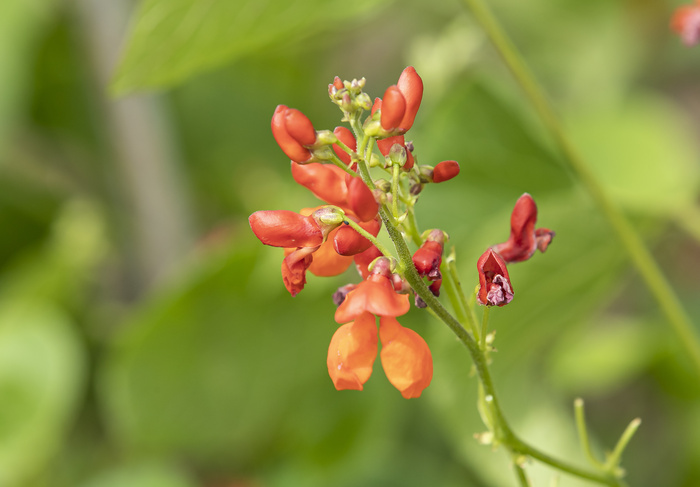
It's not all plain sailing though and there are some crops I've struggled with especially cauliflower and turnips - in fact I've given up the ghost on those and buy them in the market. Other frustations are the climate whereby Essex has the driest weather in the country which means lugging many cans of water around during the growing months. Also the wildllife especially those black and white fiends which is already well documented but they are a damn nuisance and the council are as much use as a third handle on a pot as I often tell them but they haven't evicted me yet so i'll carry on. Pigeons love brassica's and if you don't protect them immediately all you'll have left the next day is a few stalks. All in all though having an allotment is a very rewarding experience,
After a significant period of time, maybe 7 or 8 years, I now also have neighbours. I am not quite sure what to make of this, as they have both made great starts to their plot, and I am going to miss drafting cryptic messages to the council in terms of the state of the adjoining plots, complaining about the chest high grass and weeds encroaching everywhere. I even suggested on one occasion the committee were advertising Allotment Safaris on the plots - it was more like a savannah than an allotment!
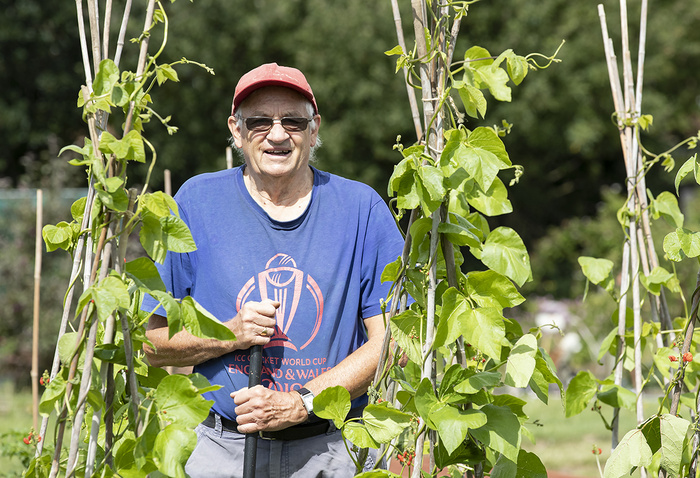
My top tip to newbies (and experience members) would be that if you attend the christmas coffee morning in the hut don't take your car because Tony's excellent mulled wine is a tad potent!!! Indeed i don't know why it's called 'coffee morning' as i don't recall ever having coffee!!!
With grateful thanks to David Ling for sharing his thoughts with us. If you would like to participate and share your Allotment exploits with us, please don't hesitate to contact Ray Lawrence, project 63 or via the contact page on the website.
07th August 2020
In: Features

Continuing our series of articles from members of the Association, we caught up with David Ling, ardent West Ham and Chelmsford City fan (has a lot to put up with). David has had a plot for in excess 10 years, and especially on a Saturday morning (pre COVID) you can catch him dashing in and out to ensure he makes it to the City Stadium in good time for kick off.
When I was a lad, we had a big garden and my dad had a vegetable plot. I remember getting a great thrill digging up the potatoes and seeing how many spuds had been produced from one small tuber. It was those memories which drove me to try for myself. I am now in my 11th season as a plot holder and I have seen many changes over the years.
Like new tenants today my plot was to say the least unkempt when I took it on. I had just retired and spent many hours turning it into something resembling an allotment and I can't have done too badly as I won Best Plot in 2012. I had no specific plans other than to grow fruit and vegetables, nothing exotic just traditional crops which is still the case today, I might have been a tad more adventurous but circumstances haven't left me the time to do so. It seems a little odd, but have a long pencil shaped full plot, two halves which span the mid section of the site. This is due to the plot immediately by the sides of my first plot were taken, and took the second half which naturally butted on, so long and narrow.

The site has had changes not least the facilities which we now have and praise has to go to Tony for that and latterly to Karen and Ray. Also many of the old allotmenteers have left the site or sadly are no longer with us. As a novice I received much advice from the likes of Stuart, Cyril, Doug and Arthur and I'll be eternally grateful to them. The new tenants seem much younger these days, probably because I'm getting older, and it's now me giving out advice. My advice to newcomers would be not to take on to much but do little and often - it's no good spending all day on a plot then leaving it for weeks. Crops need 'nursing', it is hard at times but very rewarding when you harvest fresh fruit and veg.

It's not all plain sailing though and there are some crops I've struggled with especially cauliflower and turnips - in fact I've given up the ghost on those and buy them in the market. Other frustations are the climate whereby Essex has the driest weather in the country which means lugging many cans of water around during the growing months. Also the wildllife especially those black and white fiends which is already well documented but they are a damn nuisance and the council are as much use as a third handle on a pot as I often tell them but they haven't evicted me yet so i'll carry on. Pigeons love brassica's and if you don't protect them immediately all you'll have left the next day is a few stalks. All in all though having an allotment is a very rewarding experience,
After a significant period of time, maybe 7 or 8 years, I now also have neighbours. I am not quite sure what to make of this, as they have both made great starts to their plot, and I am going to miss drafting cryptic messages to the council in terms of the state of the adjoining plots, complaining about the chest high grass and weeds encroaching everywhere. I even suggested on one occasion the committee were advertising Allotment Safaris on the plots - it was more like a savannah than an allotment!

My top tip to newbies (and experience members) would be that if you attend the christmas coffee morning in the hut don't take your car because Tony's excellent mulled wine is a tad potent!!! Indeed i don't know why it's called 'coffee morning' as i don't recall ever having coffee!!!
With grateful thanks to David Ling for sharing his thoughts with us. If you would like to participate and share your Allotment exploits with us, please don't hesitate to contact Ray Lawrence, project 63 or via the contact page on the website.
Three Ladies, One Dog, No Dig.
23rd July 2020
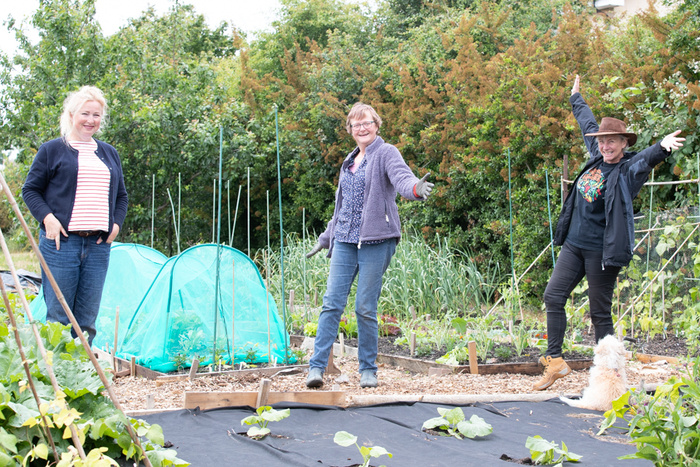
Over the last year or so many of the Association members have contributed articles to the web site. Keeping up on the theme, three grow your own ladies from the original Marconi Belles have now expanded onto plot 111 and dare I say 112 such is the enthusiasm. Not sure if Emma-Lou (pictured under) is helping - maybe preparing the ground -, acting as a foreman or supervisor, soaking up all the friendly vibes or just relishing all the attention!
A big thank you to Jenni, Juliet and Kate who agreed to let us catch up with their exploits through the year - and hopefully beyond.

In addition to this, the ladies have drawn interest from further afield with the Westcliff WI visiting the site to film the group's exploits. Please copy this link to watch the ladies on facebook.
https://www.facebook.com/844805056/posts/10163596751110057/?d=n
Take 3 ladies from the WI, who each have an idea about growing safe vegetables and salad, plant the seed of an idea about how to go about it, step back and see what happens.
3 ladies: Jenni, Juliet and Kate
Method: Charles Dowding No-Dig
Plot: 111
We are all 3 very keen to grow our own food. We were given the idea by Foggy from our WI to try the Charles Dowding method of No-Dig so we could produce harvestable crops quickly. 3 of us actually met at the Plot and having been given an idea for layout, we set about clearing the plot and building beds. The original idea was to have 4 beds up and running this year....... however! That quickly turned to 9 and then the squash & bean bed also got started! (To say we’re all a bit enthusiastic could be an understatement!)
We all had different gardening experience, dare we tell you, one of us had never grown anything from seed before?! We all have differing tastes too, but it just works. Through taking on Plot 111 we have all worked physically hard, grown everything from seed and thoroughly enjoyed ourselves. The friends we are making from other plots too have advised, cajoled & commented, but particularly through this current situation it has been an absolute joy so far.....
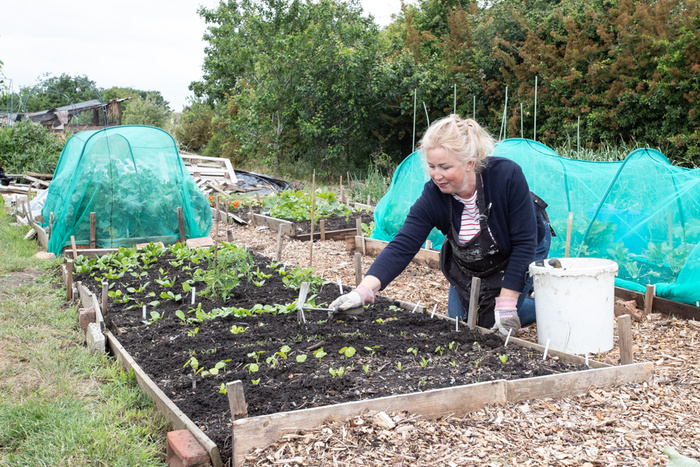
We know we have made some errors and we are learning that the method used may be better on pre-weeded/cleared soil (we all hate couch grass!) and we are preparing a plan for crop rotation and better companion planting. Watch this space
23rd July 2020
In: Features

Over the last year or so many of the Association members have contributed articles to the web site. Keeping up on the theme, three grow your own ladies from the original Marconi Belles have now expanded onto plot 111 and dare I say 112 such is the enthusiasm. Not sure if Emma-Lou (pictured under) is helping - maybe preparing the ground -, acting as a foreman or supervisor, soaking up all the friendly vibes or just relishing all the attention!
A big thank you to Jenni, Juliet and Kate who agreed to let us catch up with their exploits through the year - and hopefully beyond.

In addition to this, the ladies have drawn interest from further afield with the Westcliff WI visiting the site to film the group's exploits. Please copy this link to watch the ladies on facebook.
https://www.facebook.com/844805056/posts/10163596751110057/?d=n
Take 3 ladies from the WI, who each have an idea about growing safe vegetables and salad, plant the seed of an idea about how to go about it, step back and see what happens.
3 ladies: Jenni, Juliet and Kate
Method: Charles Dowding No-Dig
Plot: 111
We are all 3 very keen to grow our own food. We were given the idea by Foggy from our WI to try the Charles Dowding method of No-Dig so we could produce harvestable crops quickly. 3 of us actually met at the Plot and having been given an idea for layout, we set about clearing the plot and building beds. The original idea was to have 4 beds up and running this year....... however! That quickly turned to 9 and then the squash & bean bed also got started! (To say we’re all a bit enthusiastic could be an understatement!)
We all had different gardening experience, dare we tell you, one of us had never grown anything from seed before?! We all have differing tastes too, but it just works. Through taking on Plot 111 we have all worked physically hard, grown everything from seed and thoroughly enjoyed ourselves. The friends we are making from other plots too have advised, cajoled & commented, but particularly through this current situation it has been an absolute joy so far.....

We know we have made some errors and we are learning that the method used may be better on pre-weeded/cleared soil (we all hate couch grass!) and we are preparing a plan for crop rotation and better companion planting. Watch this space
Alarming Tales from the Allotment Shed
28th June 2020
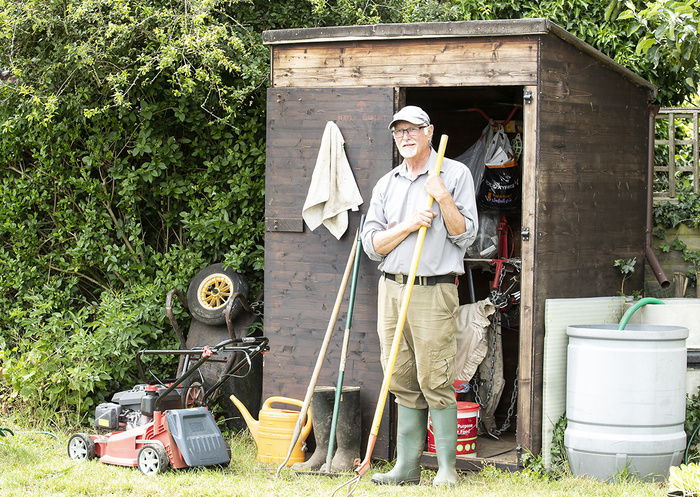
John Lodge has held a plot on site for over 30 years, tucked away towards the Highfield Road Entrance. We caught up with John a few weeks ago and asked if he would mind popping some information across to us about his time on site. Here are his thoughts, and as with everyone who has taken part we are immensely grateful to John for sharing with us.
I first took on an allotment at Melbourne Park site about 34 years ago, prior to that I had one for a short period in Waterhouse lane next to the Parks department . My original plot at Melbourne was opposite plot 4 the one I have currently.( I can not remember the number but its beside the water tap and part of it is now being
as a car park).
It was in a very poor state , overgrown and plenty of stones.The council did not make any attempt to kill the weeds and turn it over. So it took me about six months to clear the weeds and get it in reasonable shape so that i could actually grow something.I think the first crop in was potatoes and I very quickly learnt that if i planted a white variety the slugs loved them.Ever since then I have always planted a red variety as main crop, normally Desiree.
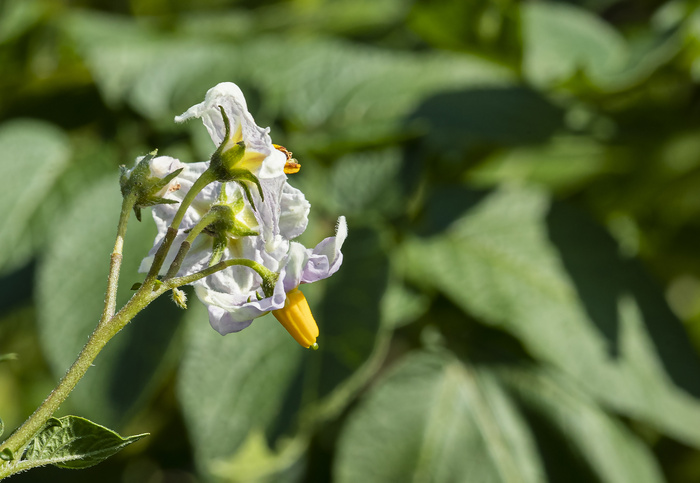
After a number of years on that plot and many barrow load of manure later I did mange to grow a reasonable number of different vegetables , runner beans, french beans, peas, carrots , lettuce , beetroot , tomatoes, sprouting broccoli. The only soft fruit I had was three very scruffy Gooseberry bushes, which were stacked with fruit every year. They seemed to thrive on neglect. However the main problem with that plot was the massive number of stones and trying to plant fine seeds like carrot , lettuce was challenging to say the least.However in those days I never had to cover any green veg to protect against Pigeons and was never troubled by the dreaded Badger.Consequently I could even grow sweet corn, happy days.
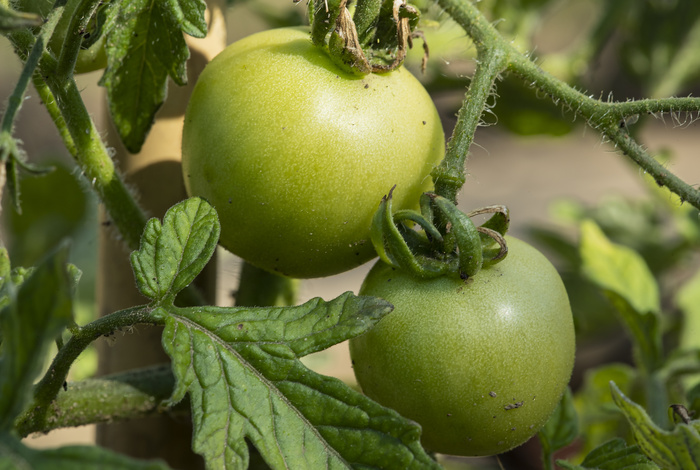
I built my first allotment shed on this plot out of very large Marine Ply packing case, that I purchased from work for 10p. It was my pride and joy and was only pulled down by Chris Perrin last year, I told him that it had a preservation order on it and he should not have taken it down with out my permission. Unfortunately it was broken into three times with various tools and a new set of rotovator tines taken. In those days the fence around the allotment was very poor,far worse than today. As a result of the break ins I decided to build a shed alarm using a microswitch, 12 volt car battery and a very large 12 volt fire bell which I attached to the back of the shed. It worked very well ,until I had a phone call from a friend in Highfield road who said a bell ringing had kept him awake that night, was it anything to do with me. The strong wind that night had moved the door and set off the alarm. It was still ringing the next morning when I went to investigate. The moral of this is to get an alarm on your shed, but make sure the door cant blow open
In the early days the road ways around the allotment were very poor they were just earth, there was no hardcore on them like today. In the winter time many people had trouble driving round because it was so muddy, I remember having to tow a car out that had become stuck in very large ruts, so from that point of view there has been a great improvement in the road ways and the parking. I never really remember much activity in the trading hut until Arthur and his wife Ada took it over, not sure what year that was. Compared with the hut run by Tony and Karen today, it was very limited in what was stocked. This has to my mind been one of the most noticeable changes and improvements along with Association and all credit to them for their hard work throughout the years.
In the 1980's you were not allowed to keep chickens on site and very few people had Poly tunnels. However one chap did have a couple of Goats in a shed over where the Wilderness allotment is today, if I remember correctly they escaped on more than one occasion.
From memory a large number of plots were occupied but mainly by older males, there was very few females or young people.It was seen very much as an older persons activity and did not have the universal popularity it has today.
About twenty years ago I gave up that plot and moved onto plot 4F with my very good friend the late Derek Farthing on plot 4R ,when he became to ill to carry on I took over the whole plot.What a massive difference the soil structure was just moving over the other side of the road way. Very few stones ,no clay, nice and light what a difference.
The big changes over the past twenty years is that I now have to net every time I grow green vegetables, if not the lot would be eaten within days by the Pigeons. The other major problem I have is with the continual damage done to the crops by Badgers which seem to have taken over this part of the allotment. It seems to be even worse in the dry weather where they dig down in areas that you have watered. They also seemed to have developed a liking for carrots, last year they cleared a complete row and started to eat the new potatoes. Over the past couple of years I have planted new soft fruit both strawberry and raspberry, which seemed to be doing ok. However I have had to put a fence around them because of the Badgers. Five years ago I planted an Asparagus bed using crowns, the soil is good and I dug plenty of rotted compost first. After a couple of years of not cutting the spears it has produces a really good crop and is now one of my gardening highlights, when it come in spring. The big problem is that it has a very short season. I always try and use crop rotation to get the best yield and reduce the chance of potato blight. I have tried growing the more resistant varieties of potato but find the best results on my plot are Charlotte (salad potato) as early variety and Desiree as main crop.
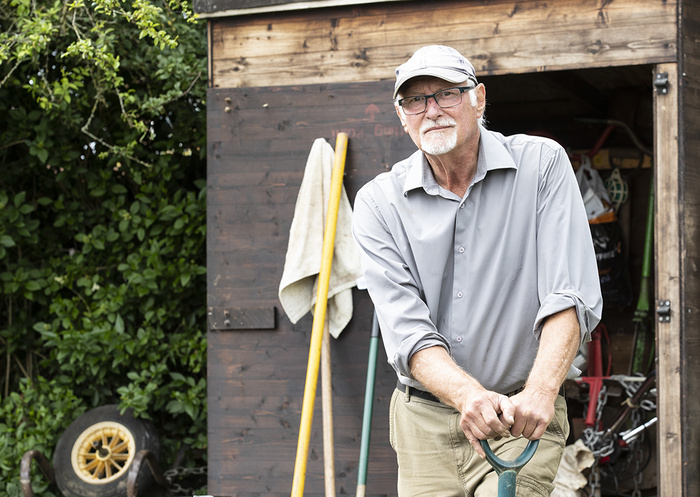
Over the past years the weather has got warmer and the rainfall far less especially in the spring. So watering the plot is a big problem, more so when you get older, the taps that we have now are very tiresome. In the early days we had water tanks which were filled using a cistern, like a standard cold water tank in your house. These were removed when there was a change in the regulations, apparently they were concerned about the tank back feeding the mains supply and contaminating it. All it it needed was a simple non return valve on the mains supply.
Vandalism is still a problem on the site from time to time.Early this year I had one of my sheds broken into, nothing was taken ,they just smashed it to bits with a garden roller that I had stored in there. The fence along the south boundary is in a poor state, with much damage done by the badgers so it makes for easy accessfor vandals .
Once again, a massive thank you to John for producing this article for the website. Keep looking out for the features page as we catch up with other Association members to see if they too will share their thoughts with us.
28th June 2020
In: Features

John Lodge has held a plot on site for over 30 years, tucked away towards the Highfield Road Entrance. We caught up with John a few weeks ago and asked if he would mind popping some information across to us about his time on site. Here are his thoughts, and as with everyone who has taken part we are immensely grateful to John for sharing with us.
I first took on an allotment at Melbourne Park site about 34 years ago, prior to that I had one for a short period in Waterhouse lane next to the Parks department . My original plot at Melbourne was opposite plot 4 the one I have currently.( I can not remember the number but its beside the water tap and part of it is now being
as a car park).
It was in a very poor state , overgrown and plenty of stones.The council did not make any attempt to kill the weeds and turn it over. So it took me about six months to clear the weeds and get it in reasonable shape so that i could actually grow something.I think the first crop in was potatoes and I very quickly learnt that if i planted a white variety the slugs loved them.Ever since then I have always planted a red variety as main crop, normally Desiree.

After a number of years on that plot and many barrow load of manure later I did mange to grow a reasonable number of different vegetables , runner beans, french beans, peas, carrots , lettuce , beetroot , tomatoes, sprouting broccoli. The only soft fruit I had was three very scruffy Gooseberry bushes, which were stacked with fruit every year. They seemed to thrive on neglect. However the main problem with that plot was the massive number of stones and trying to plant fine seeds like carrot , lettuce was challenging to say the least.However in those days I never had to cover any green veg to protect against Pigeons and was never troubled by the dreaded Badger.Consequently I could even grow sweet corn, happy days.

I built my first allotment shed on this plot out of very large Marine Ply packing case, that I purchased from work for 10p. It was my pride and joy and was only pulled down by Chris Perrin last year, I told him that it had a preservation order on it and he should not have taken it down with out my permission. Unfortunately it was broken into three times with various tools and a new set of rotovator tines taken. In those days the fence around the allotment was very poor,far worse than today. As a result of the break ins I decided to build a shed alarm using a microswitch, 12 volt car battery and a very large 12 volt fire bell which I attached to the back of the shed. It worked very well ,until I had a phone call from a friend in Highfield road who said a bell ringing had kept him awake that night, was it anything to do with me. The strong wind that night had moved the door and set off the alarm. It was still ringing the next morning when I went to investigate. The moral of this is to get an alarm on your shed, but make sure the door cant blow open
In the early days the road ways around the allotment were very poor they were just earth, there was no hardcore on them like today. In the winter time many people had trouble driving round because it was so muddy, I remember having to tow a car out that had become stuck in very large ruts, so from that point of view there has been a great improvement in the road ways and the parking. I never really remember much activity in the trading hut until Arthur and his wife Ada took it over, not sure what year that was. Compared with the hut run by Tony and Karen today, it was very limited in what was stocked. This has to my mind been one of the most noticeable changes and improvements along with Association and all credit to them for their hard work throughout the years.
In the 1980's you were not allowed to keep chickens on site and very few people had Poly tunnels. However one chap did have a couple of Goats in a shed over where the Wilderness allotment is today, if I remember correctly they escaped on more than one occasion.
From memory a large number of plots were occupied but mainly by older males, there was very few females or young people.It was seen very much as an older persons activity and did not have the universal popularity it has today.
About twenty years ago I gave up that plot and moved onto plot 4F with my very good friend the late Derek Farthing on plot 4R ,when he became to ill to carry on I took over the whole plot.What a massive difference the soil structure was just moving over the other side of the road way. Very few stones ,no clay, nice and light what a difference.
The big changes over the past twenty years is that I now have to net every time I grow green vegetables, if not the lot would be eaten within days by the Pigeons. The other major problem I have is with the continual damage done to the crops by Badgers which seem to have taken over this part of the allotment. It seems to be even worse in the dry weather where they dig down in areas that you have watered. They also seemed to have developed a liking for carrots, last year they cleared a complete row and started to eat the new potatoes. Over the past couple of years I have planted new soft fruit both strawberry and raspberry, which seemed to be doing ok. However I have had to put a fence around them because of the Badgers. Five years ago I planted an Asparagus bed using crowns, the soil is good and I dug plenty of rotted compost first. After a couple of years of not cutting the spears it has produces a really good crop and is now one of my gardening highlights, when it come in spring. The big problem is that it has a very short season. I always try and use crop rotation to get the best yield and reduce the chance of potato blight. I have tried growing the more resistant varieties of potato but find the best results on my plot are Charlotte (salad potato) as early variety and Desiree as main crop.

Over the past years the weather has got warmer and the rainfall far less especially in the spring. So watering the plot is a big problem, more so when you get older, the taps that we have now are very tiresome. In the early days we had water tanks which were filled using a cistern, like a standard cold water tank in your house. These were removed when there was a change in the regulations, apparently they were concerned about the tank back feeding the mains supply and contaminating it. All it it needed was a simple non return valve on the mains supply.
Vandalism is still a problem on the site from time to time.Early this year I had one of my sheds broken into, nothing was taken ,they just smashed it to bits with a garden roller that I had stored in there. The fence along the south boundary is in a poor state, with much damage done by the badgers so it makes for easy accessfor vandals .
Once again, a massive thank you to John for producing this article for the website. Keep looking out for the features page as we catch up with other Association members to see if they too will share their thoughts with us.
Green Tomato Curry and shared Veg
19th June 2020
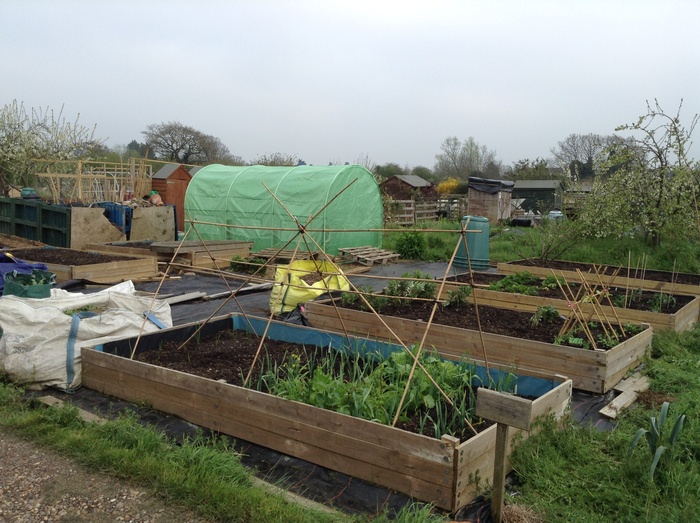
Last month we featured part one of the Marconi Belles journey. We left the story tantalisingly poised over winter, after a few unexpected hurdles had been overcome in relation to the extent of bind weed which stymied initial progress. We pick up the tale early in the new year (2019)......All words and pictures courtesy of Foggy Hau and the Marconi Belles
February 2019 and our thoughts turned to the Summer … we needed a polytunnel. We managed to get a secondhand large domestic polytunnel with the help of a grant from our WI.
On a sunny March day we had the wonderful help from the Chelmsford Probation Service with the construction of our lovely green polytunnel. The frame was up in a few hours, frame taped and cover on … it was all done by 2pm! We had great advice from everyone on the Allotment site about the details of polytunnel construction and siting. Thank you everyone who gave us the advice … it really made a difference to our success over the Summer.
We had nothing to lose in 2019 … our first Summer and we tried to grow everything. In both, the polytunnel and the raised beds, we grew tomatoes and cucumbers to see if the results would be different. We found the polytunnel gave us a longer harvesting whilst those outside had a sturdier growth however they still gave us a good harvest and enough to share around. Chillies and aubergines grew well inside the polytunnel even though we were late with planting them.
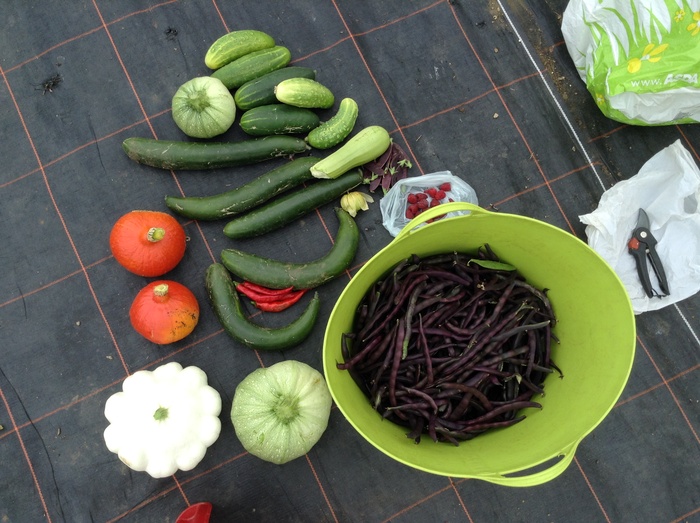
In the raised beds we had flowers for cutting, leaf beet, lettuce, spring onions, beetroot, carrots, peas, mange tout, herbs, raspberries, radishes, a bumper crop of climbing french beans (in one week we picked a total of 25kgs!) however the runner beans were not great. In the spare space within the membraned areas (at ground level) we opened up two patches and grew tomatillos, pumpkins and courgettes. We knew they would grow BIG from the results in 2018 so we made sure had plenty of space to wander around this time. We were watering anywhere between 2 to 4 times a week during the summer as the vegetables were growing away like crazy. Each time we would take home a bag or a sack of harvested fresh goodies. Let’s say we got creative with the gluts! As WI members we try to avoid food waste so our freezers, preserving pans and recipe files got busy … green tomato curry anyone?
We had finally settled into our little allotment by the Autumn and seen a whole season of growing. On reflection we felt it was a successful season … grew some veg; a bit of soft fruit; cut some flowers for the home; swapped fruit and veg with out fellow plot holders; and made time for a cuppa and shared our experiences together.
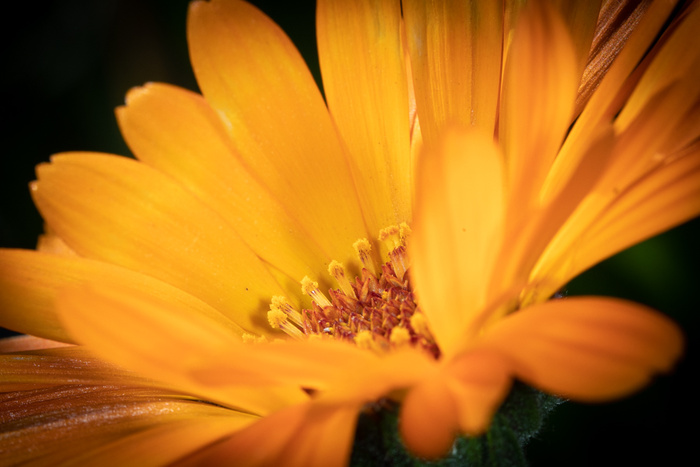
image courtesy of www.raylawphoto.co.uk
In October, at the allotment association AGM, we were awarded second prize for the best newcomer plot on site. We had set out to grow some bits and pieces for the year and steadily improve our plot over the years whilst supporting each other. To be honoured at this stage after 20 months was a pleasant surprise but not our goal.
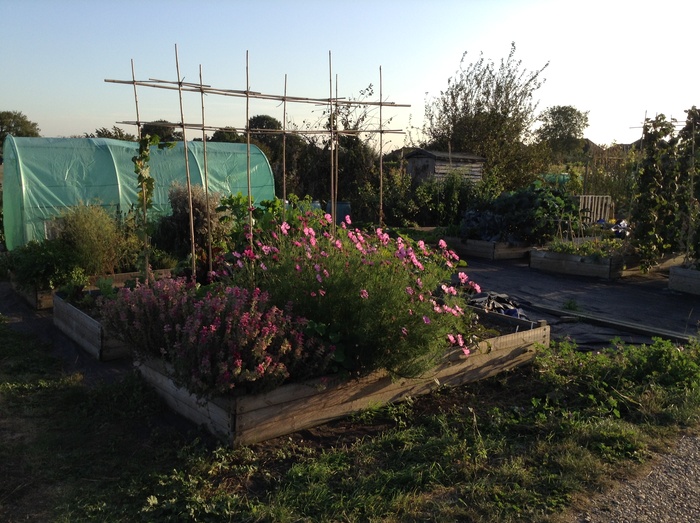
In 2020, we have plans to improve our plot and expand our team … so watch this space!
Marconi Belles WI have a Facebook page and website. If any ladies would like to join a local WI (come along to a monthly meeting as a visitor) please contact via the Essex WI website www.essexwi.org.uk … we’re over 9000 members and 214 WI’s in just this County.
19th June 2020
In: Features

Last month we featured part one of the Marconi Belles journey. We left the story tantalisingly poised over winter, after a few unexpected hurdles had been overcome in relation to the extent of bind weed which stymied initial progress. We pick up the tale early in the new year (2019)......All words and pictures courtesy of Foggy Hau and the Marconi Belles
February 2019 and our thoughts turned to the Summer … we needed a polytunnel. We managed to get a secondhand large domestic polytunnel with the help of a grant from our WI.
On a sunny March day we had the wonderful help from the Chelmsford Probation Service with the construction of our lovely green polytunnel. The frame was up in a few hours, frame taped and cover on … it was all done by 2pm! We had great advice from everyone on the Allotment site about the details of polytunnel construction and siting. Thank you everyone who gave us the advice … it really made a difference to our success over the Summer.
We had nothing to lose in 2019 … our first Summer and we tried to grow everything. In both, the polytunnel and the raised beds, we grew tomatoes and cucumbers to see if the results would be different. We found the polytunnel gave us a longer harvesting whilst those outside had a sturdier growth however they still gave us a good harvest and enough to share around. Chillies and aubergines grew well inside the polytunnel even though we were late with planting them.

In the raised beds we had flowers for cutting, leaf beet, lettuce, spring onions, beetroot, carrots, peas, mange tout, herbs, raspberries, radishes, a bumper crop of climbing french beans (in one week we picked a total of 25kgs!) however the runner beans were not great. In the spare space within the membraned areas (at ground level) we opened up two patches and grew tomatillos, pumpkins and courgettes. We knew they would grow BIG from the results in 2018 so we made sure had plenty of space to wander around this time. We were watering anywhere between 2 to 4 times a week during the summer as the vegetables were growing away like crazy. Each time we would take home a bag or a sack of harvested fresh goodies. Let’s say we got creative with the gluts! As WI members we try to avoid food waste so our freezers, preserving pans and recipe files got busy … green tomato curry anyone?
We had finally settled into our little allotment by the Autumn and seen a whole season of growing. On reflection we felt it was a successful season … grew some veg; a bit of soft fruit; cut some flowers for the home; swapped fruit and veg with out fellow plot holders; and made time for a cuppa and shared our experiences together.

image courtesy of www.raylawphoto.co.uk
In October, at the allotment association AGM, we were awarded second prize for the best newcomer plot on site. We had set out to grow some bits and pieces for the year and steadily improve our plot over the years whilst supporting each other. To be honoured at this stage after 20 months was a pleasant surprise but not our goal.

In 2020, we have plans to improve our plot and expand our team … so watch this space!
Marconi Belles WI have a Facebook page and website. If any ladies would like to join a local WI (come along to a monthly meeting as a visitor) please contact via the Essex WI website www.essexwi.org.uk … we’re over 9000 members and 214 WI’s in just this County.
Sanctus and Project 63
16th June 2020
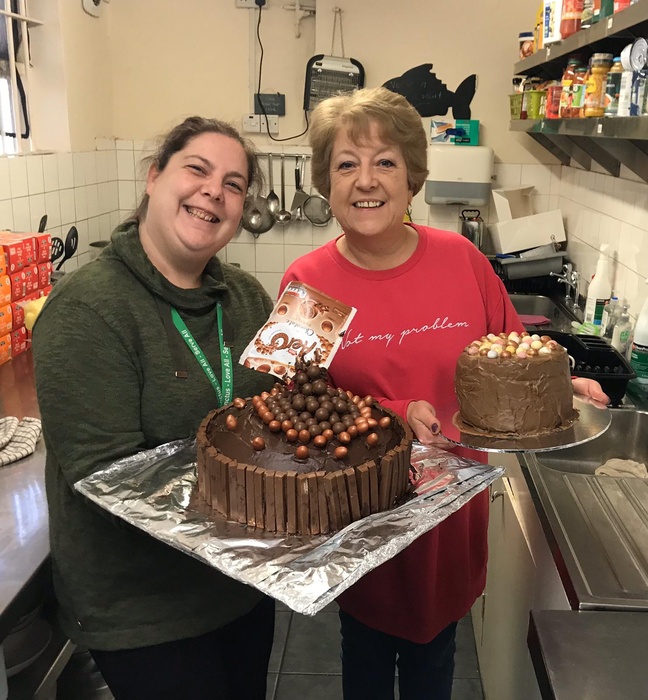
Project 63 was established almost 4 years ago with the purpose of supplying fresh fruit and vegetables to various charities, plus growing some more experimental crops which ordinarily most may not consider. In terms of the food donations, over the last two years our principal destination has been the Charity Sanctus, based in Broomfield Road, Chelmsford, which offers day space for the homeless and vulnerable and provides hot and cold food, seven days a week.
A number of fellow plot holders also donated excess fruit and vegetables with project 63 last year, and we are planning again this year to supply Sanctus from Project 63 together with any additional donations from fellow plot holders. We thought it would be useful to let Association members know a little more about Sanctus, and Sandra kindly offered an article for the website together with accompanying images in terms of their activities.
The number of meals they provide per month is a staggering number. A big thank you to Sandra for taking the time out from a really busy environment to provide the details for us.
Before COVID-19 Sanctus was a day space for the homeless and vulnerable in Chelmsford. Sanctus offered free food and beverages from 10:30 till 5pm seven days a week. Sanctus is a registered charity and relies on donations, grants and internal fund raising to keep open.
Prior to COVID-19 Sanctus volunteers would collect unsold sandwiches and cakes from Greggs, Pret a Manger, Tesco Express and other supermarkets at the end of their trading day. These foods would be kept in a fridge in the free café and service users could help themselves. Occasionally there would be vegetables donated and we would use these in our meals. Every day a hot meal would be freshly prepared and served. I would be responsible for the menu but basically it would be very traditional home cooking such as cottage pie, roast dinner, Bolognese, curry, casserole etc.

In 2019 the Sanctus support hub opened upstairs to the café which provides information, therapies, addiction support, housing support, employment advice, courses in IT and other back to work courses and counselling.
Sanctus employs a handful of people but is reliant on volunteers helping in the café, support hub, collections and fundraising. Until this March our service users would come to the café to eat, socialise, get support and enjoy a safe space off the streets.
However, since the Corona virus we have had to close the day space and resort to a takeaway service. We have been providing a daily hot meal and the equivalent of a packed lunch so that everyone can eat later in the day. Every day we have sent 28-30 dinners to the hotel where many homeless people have been temporarily housed, fed a further 15-20 homeless who come to the café door and a further 20-30 vulnerable people who need food and use Sanctus.
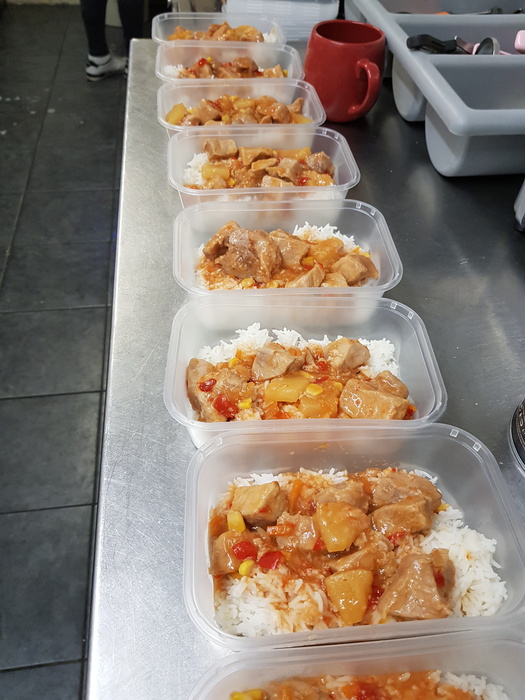
We have been serving food that is easy to eat from a takeaway foil dish such as casseroles, pasta dishes, sausage and mash etc always including meat, carbohydrates and vegetables. We also need to cater for 3-4 vegetarians. I have to be aware of costs whilst providing nutritious meals and have learnt to be flexible always making good use of donations. So, if for example vegetables are donated I would use them as soon as possible as a main veg for the meal or if not enough I would use them to fill out a Bolognese or in a casserole, in a sauce or freeze them.
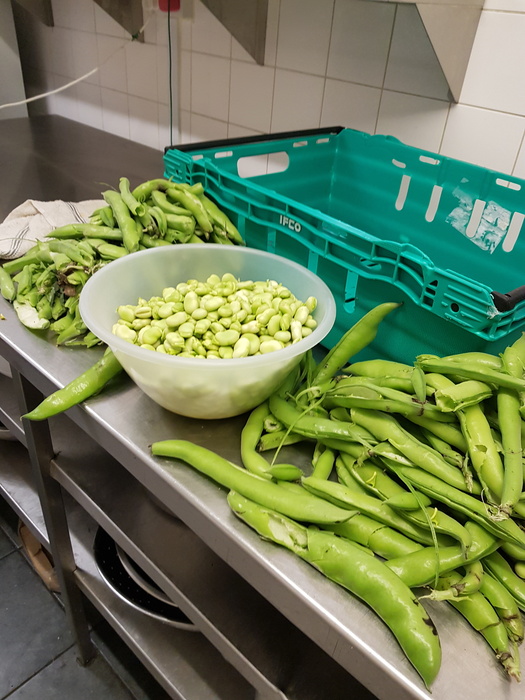
I think its important to see how valuable our services are to the community and how demand has grown, I have kept records since I started at Sanctus in April 2016.
In April 2016 we served 247 meals
In April 2017 we served 813 meals
In April 2018 we served 1295 meals
In April 2019 we served 1614 meals
In April 2020 we served 2123 meals
For more information about the charity Sanctus, its organisation and activities, please visit www.sanctus-home.com. All words and images courtesy of Sandra at Sanctus.
16th June 2020
In: Features

Project 63 was established almost 4 years ago with the purpose of supplying fresh fruit and vegetables to various charities, plus growing some more experimental crops which ordinarily most may not consider. In terms of the food donations, over the last two years our principal destination has been the Charity Sanctus, based in Broomfield Road, Chelmsford, which offers day space for the homeless and vulnerable and provides hot and cold food, seven days a week.
A number of fellow plot holders also donated excess fruit and vegetables with project 63 last year, and we are planning again this year to supply Sanctus from Project 63 together with any additional donations from fellow plot holders. We thought it would be useful to let Association members know a little more about Sanctus, and Sandra kindly offered an article for the website together with accompanying images in terms of their activities.
The number of meals they provide per month is a staggering number. A big thank you to Sandra for taking the time out from a really busy environment to provide the details for us.
Before COVID-19 Sanctus was a day space for the homeless and vulnerable in Chelmsford. Sanctus offered free food and beverages from 10:30 till 5pm seven days a week. Sanctus is a registered charity and relies on donations, grants and internal fund raising to keep open.
Prior to COVID-19 Sanctus volunteers would collect unsold sandwiches and cakes from Greggs, Pret a Manger, Tesco Express and other supermarkets at the end of their trading day. These foods would be kept in a fridge in the free café and service users could help themselves. Occasionally there would be vegetables donated and we would use these in our meals. Every day a hot meal would be freshly prepared and served. I would be responsible for the menu but basically it would be very traditional home cooking such as cottage pie, roast dinner, Bolognese, curry, casserole etc.

In 2019 the Sanctus support hub opened upstairs to the café which provides information, therapies, addiction support, housing support, employment advice, courses in IT and other back to work courses and counselling.
Sanctus employs a handful of people but is reliant on volunteers helping in the café, support hub, collections and fundraising. Until this March our service users would come to the café to eat, socialise, get support and enjoy a safe space off the streets.
However, since the Corona virus we have had to close the day space and resort to a takeaway service. We have been providing a daily hot meal and the equivalent of a packed lunch so that everyone can eat later in the day. Every day we have sent 28-30 dinners to the hotel where many homeless people have been temporarily housed, fed a further 15-20 homeless who come to the café door and a further 20-30 vulnerable people who need food and use Sanctus.

We have been serving food that is easy to eat from a takeaway foil dish such as casseroles, pasta dishes, sausage and mash etc always including meat, carbohydrates and vegetables. We also need to cater for 3-4 vegetarians. I have to be aware of costs whilst providing nutritious meals and have learnt to be flexible always making good use of donations. So, if for example vegetables are donated I would use them as soon as possible as a main veg for the meal or if not enough I would use them to fill out a Bolognese or in a casserole, in a sauce or freeze them.

I think its important to see how valuable our services are to the community and how demand has grown, I have kept records since I started at Sanctus in April 2016.
In April 2016 we served 247 meals
In April 2017 we served 813 meals
In April 2018 we served 1295 meals
In April 2019 we served 1614 meals
In April 2020 we served 2123 meals
For more information about the charity Sanctus, its organisation and activities, please visit www.sanctus-home.com. All words and images courtesy of Sandra at Sanctus.
Fertilisers
04th June 2020
04th June 2020
In: Features
Fertilisers
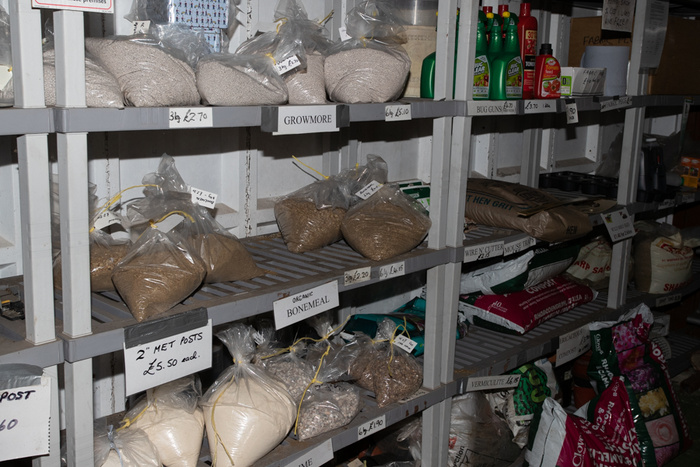
Over the last few weeks, have been asked by various plot holders about fertilisers. I have diligently given everyone my best response, whilst promising to post an article on the website. Invariably I am not adequately knowledgable to be able to detail all the differences as to why one product should be used in preference to another, and at this point duly point the individuals in the direction of those on site with far superior expertise.
I have now drafted two or three different potential posts, but canned them all as they were far too long and no one really wants to read pages of blurb to ensure their tomatoes or peppers are fit and healthy.
It then dawned on me to search the Royal Horticultural Website which is an encyclopaedia of information, and true to form if you pop Fertilisers into the search button it provides a concise description and the differences between organic and inorganic products.
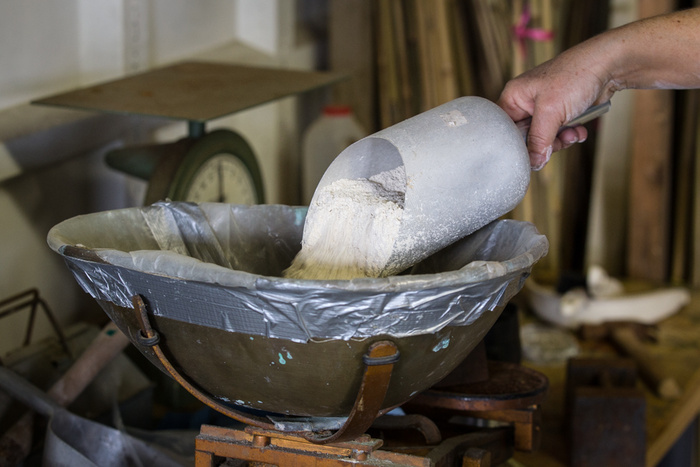
Organic Fertilisers are derived from animal or plant sources and tend to be slower acting, as large organic molecules have to be broken down by soil organisms before the nutrients within them are released for plant use. Examples of organic fertilisers include: seaweed, hoof & horn, dried blood, fish blood & bone, bone meal, poultry manure pellets and liquid comfrey or nettle feeds.
Inorganic Fertilisers on the other hand are synthetic, artificial forms of plant nutrients or naturally occurring mined minerals. Inorganic fertilisers are usually more concentrated and faster acting than organic fertilisers. Examples of inorganic fertilisers include: Growmore, Miracle-Gro, Phostrogen, Sulphate of Ammonia, Sulphate of Potash, and Superphosphate and Tomorite.
Most plant fertilisers are based on the three major plant nutrients:
Nitrogen (N): For green leafy growth
Phosphorus (P): For healthy root and shoot growth
Potassium (K): For flowering, fruiting and general hardiness
All fertilisers should quote their NPK ratio on the product packaging.
The trading hut stocks and supplies a range of organic and inorganic fertilisers, including Growmore, Fish Blood and Bone, Bonemeal, potash, lime, sulphate of ammonia, tomorite, phostrogen, chicken manure pellets and Maxicrop (Liquid seaweed extract). Information about all of these products can be found by searching the web, or the Royal Horticultural Society, or for a less than 100% view please continue to ask at the trading hut.
Don’t forget it is quite easy to produce your own fertiliser. Comfrey which can be grown on the plot rotted down and the concentrated liquid produce diluted with water is excellent for application on flowering growth to enhance fruiting as it is potash rich, and a wormery is another source of liquid fertiliser, although more of a general feed, and should be watered down 10 parts to 1. Nettles left to rot down in water provides another natural source of nutrients, high in nitrogen and approx 1 kilo to 10 litres of water and diluted before application by a tenth.

Over the last few weeks, have been asked by various plot holders about fertilisers. I have diligently given everyone my best response, whilst promising to post an article on the website. Invariably I am not adequately knowledgable to be able to detail all the differences as to why one product should be used in preference to another, and at this point duly point the individuals in the direction of those on site with far superior expertise.
I have now drafted two or three different potential posts, but canned them all as they were far too long and no one really wants to read pages of blurb to ensure their tomatoes or peppers are fit and healthy.
It then dawned on me to search the Royal Horticultural Website which is an encyclopaedia of information, and true to form if you pop Fertilisers into the search button it provides a concise description and the differences between organic and inorganic products.

Organic Fertilisers are derived from animal or plant sources and tend to be slower acting, as large organic molecules have to be broken down by soil organisms before the nutrients within them are released for plant use. Examples of organic fertilisers include: seaweed, hoof & horn, dried blood, fish blood & bone, bone meal, poultry manure pellets and liquid comfrey or nettle feeds.
Inorganic Fertilisers on the other hand are synthetic, artificial forms of plant nutrients or naturally occurring mined minerals. Inorganic fertilisers are usually more concentrated and faster acting than organic fertilisers. Examples of inorganic fertilisers include: Growmore, Miracle-Gro, Phostrogen, Sulphate of Ammonia, Sulphate of Potash, and Superphosphate and Tomorite.
Most plant fertilisers are based on the three major plant nutrients:
Nitrogen (N): For green leafy growth
Phosphorus (P): For healthy root and shoot growth
Potassium (K): For flowering, fruiting and general hardiness
All fertilisers should quote their NPK ratio on the product packaging.
The trading hut stocks and supplies a range of organic and inorganic fertilisers, including Growmore, Fish Blood and Bone, Bonemeal, potash, lime, sulphate of ammonia, tomorite, phostrogen, chicken manure pellets and Maxicrop (Liquid seaweed extract). Information about all of these products can be found by searching the web, or the Royal Horticultural Society, or for a less than 100% view please continue to ask at the trading hut.
Don’t forget it is quite easy to produce your own fertiliser. Comfrey which can be grown on the plot rotted down and the concentrated liquid produce diluted with water is excellent for application on flowering growth to enhance fruiting as it is potash rich, and a wormery is another source of liquid fertiliser, although more of a general feed, and should be watered down 10 parts to 1. Nettles left to rot down in water provides another natural source of nutrients, high in nitrogen and approx 1 kilo to 10 litres of water and diluted before application by a tenth.
An Update from the Wilderness Foundation
02nd June 2020
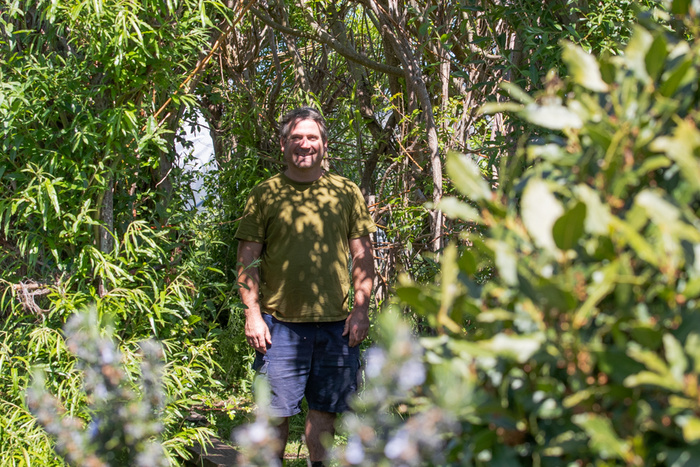
Our friends at The Wilderness Foundation run a series of plots at Melbourne Park, called 'Down to Earth Allotments' and the area has a distinct variety of growing areas, and indeed natural spaces. Apart from the vegetables, fruit and various poly tunnels, there is also a log pile or beetle hotel, and a wetland area which was unfortunately sabotaged along with the damage incurred over christmas.
The foundation came to the allotments over 12 years ago and were motivated to make growing food more accessible to a wider audience, or for those with less time and financial resource to run their own allotments. They chose this location as it is close to their office at Chatham Green, and took over from a council run project in 2008.
The Down to Earth Allotment program is based here where we run six plots, opening them up to a range of community groups and schools.
Most of our young adult volunteers are living with mental or physical disability, and also use the allotment to engage recovery clients from Open Road (Drugs & Alcohol charity), MENCAP, New Hall School and Columbus School & College, catering for young people with complex and severe learning difficulties.
Currently the food grown at the allotment is shared amongst those growing it as the best way to learn where our food comes from and engage people with the subjects of nutrition and cooking.
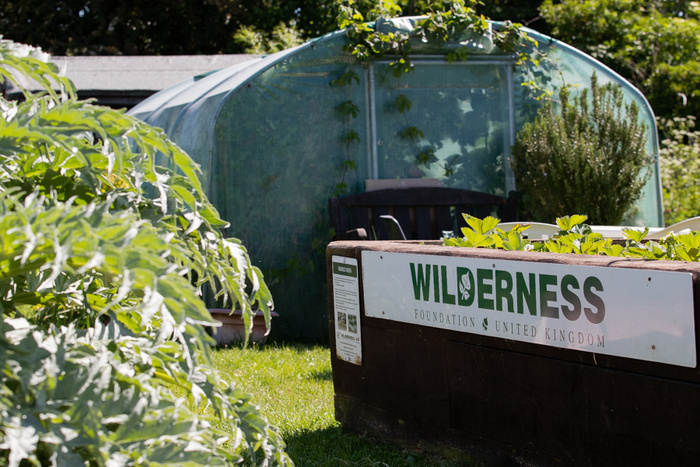
The Covid outbreak has affected the Foundation project more harshly than it has personal plot holders, as the reliance is on schools, volunteers and others to tend and keep the project running. Jonathon has kindly provided the following article as an update on what they have been doing over the period and how they have managed.
Since the lockdown in late March we have been running the community allotments on a skeleton staff of Myself and volunteer Trudi Warner to keep it going through busy spring and summer months. At the beginning of the lockdown the allotments had never looked better due to the hard work of all the volunteers and participants, whether we will be able to keep it that way over the coming months is another matter but we will be working hard to maintain it as well as we can.
This spring was set to have record volunteer numbers with Honeywood school and Chelmsford College visits added to the existing groups and volunteers. We had a great start to March with James King (from Columbus College) being awarded for a volunteer award, with the ceremony being postponed till after the situation returns to normal.
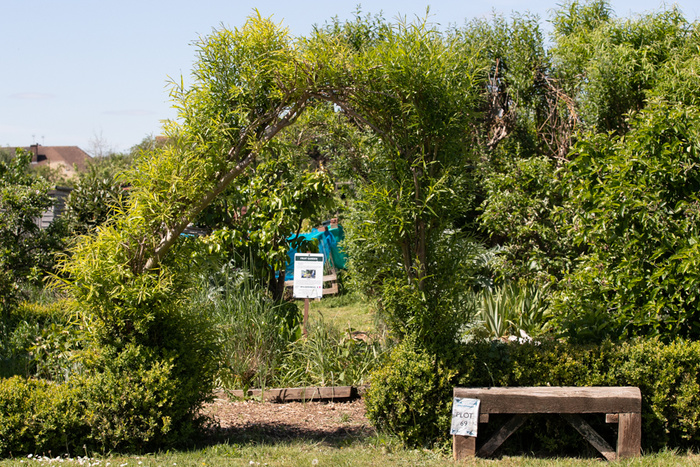
We had repaired a lot of the damage done by vandles over the winter and were ahead of the game with planting early potato and a new Asparagus crop. Autumn raspberries and fruit trees had been pruned and the willow tunnel had been weaved and cut back. We have spread the compost heap to help with fertility and started to plant out Goosberry, Current and grape cuttings we did last autumn.
We have been sowing trays and pots of tomatos, leaks, beans, pumpkins, carrots, etc and planted extra Broad bean and spinach seeds that were saved from the previous year. We have created a new small pond on the plot (using an old header tank) and in recent weeks have been harvesting Rhubarb, Spinich, Purple Sprouting, Salad and the last of the leaks. Some of the Broad beans will be ready to pick next week. As the next few months will not have volunteers to share some of the produce we will contribute food (through the Melbourne Allotment association) to a food bank charity. We hope to get publicity through local media for the allotments and to encourage more people to grow food at home at this time of national crisis.
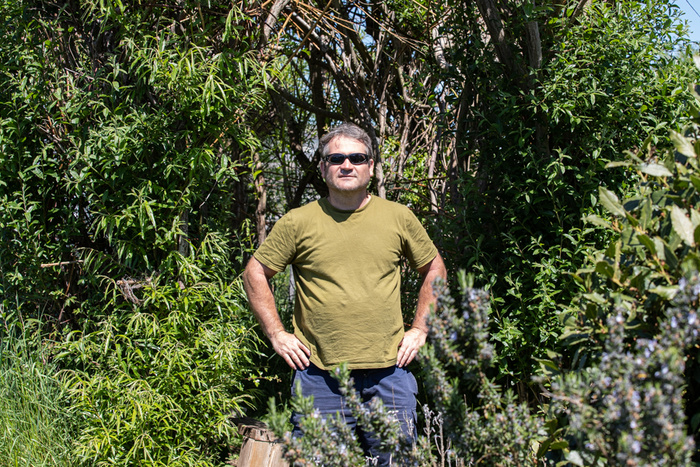
We look forward to the situation returning to normal in the late spring or summer and welcoming groups back to our project. We are grateful to the team who run the Melbourne Park Allotment Association for all their support and the wonderful team spirit from other allotment plot holders. We see this as an opportunity to get more people interested in growing their own fresh fruit and vegetables which also saves money and helps the participants remain fit and health. Anybody who wants to get involved with our community allotment project please e-mail or phone at the numbers below
To find out or discover more about the Wilderness Foundation, exactly what the charitable foundation represents, either speak to Jonathon Barker on 07939 561995, or visit their website www.wildernessfoundation.org.uk
Courtesy of Jonathon Barker, Wilderness Foundation.
02nd June 2020
In: Features

Our friends at The Wilderness Foundation run a series of plots at Melbourne Park, called 'Down to Earth Allotments' and the area has a distinct variety of growing areas, and indeed natural spaces. Apart from the vegetables, fruit and various poly tunnels, there is also a log pile or beetle hotel, and a wetland area which was unfortunately sabotaged along with the damage incurred over christmas.
The foundation came to the allotments over 12 years ago and were motivated to make growing food more accessible to a wider audience, or for those with less time and financial resource to run their own allotments. They chose this location as it is close to their office at Chatham Green, and took over from a council run project in 2008.
The Down to Earth Allotment program is based here where we run six plots, opening them up to a range of community groups and schools.
Most of our young adult volunteers are living with mental or physical disability, and also use the allotment to engage recovery clients from Open Road (Drugs & Alcohol charity), MENCAP, New Hall School and Columbus School & College, catering for young people with complex and severe learning difficulties.
Currently the food grown at the allotment is shared amongst those growing it as the best way to learn where our food comes from and engage people with the subjects of nutrition and cooking.

The Covid outbreak has affected the Foundation project more harshly than it has personal plot holders, as the reliance is on schools, volunteers and others to tend and keep the project running. Jonathon has kindly provided the following article as an update on what they have been doing over the period and how they have managed.
Since the lockdown in late March we have been running the community allotments on a skeleton staff of Myself and volunteer Trudi Warner to keep it going through busy spring and summer months. At the beginning of the lockdown the allotments had never looked better due to the hard work of all the volunteers and participants, whether we will be able to keep it that way over the coming months is another matter but we will be working hard to maintain it as well as we can.
This spring was set to have record volunteer numbers with Honeywood school and Chelmsford College visits added to the existing groups and volunteers. We had a great start to March with James King (from Columbus College) being awarded for a volunteer award, with the ceremony being postponed till after the situation returns to normal.

We had repaired a lot of the damage done by vandles over the winter and were ahead of the game with planting early potato and a new Asparagus crop. Autumn raspberries and fruit trees had been pruned and the willow tunnel had been weaved and cut back. We have spread the compost heap to help with fertility and started to plant out Goosberry, Current and grape cuttings we did last autumn.
We have been sowing trays and pots of tomatos, leaks, beans, pumpkins, carrots, etc and planted extra Broad bean and spinach seeds that were saved from the previous year. We have created a new small pond on the plot (using an old header tank) and in recent weeks have been harvesting Rhubarb, Spinich, Purple Sprouting, Salad and the last of the leaks. Some of the Broad beans will be ready to pick next week. As the next few months will not have volunteers to share some of the produce we will contribute food (through the Melbourne Allotment association) to a food bank charity. We hope to get publicity through local media for the allotments and to encourage more people to grow food at home at this time of national crisis.

We look forward to the situation returning to normal in the late spring or summer and welcoming groups back to our project. We are grateful to the team who run the Melbourne Park Allotment Association for all their support and the wonderful team spirit from other allotment plot holders. We see this as an opportunity to get more people interested in growing their own fresh fruit and vegetables which also saves money and helps the participants remain fit and health. Anybody who wants to get involved with our community allotment project please e-mail or phone at the numbers below
To find out or discover more about the Wilderness Foundation, exactly what the charitable foundation represents, either speak to Jonathon Barker on 07939 561995, or visit their website www.wildernessfoundation.org.uk
Courtesy of Jonathon Barker, Wilderness Foundation.
Loving Life on the Allotment
21st May 2020
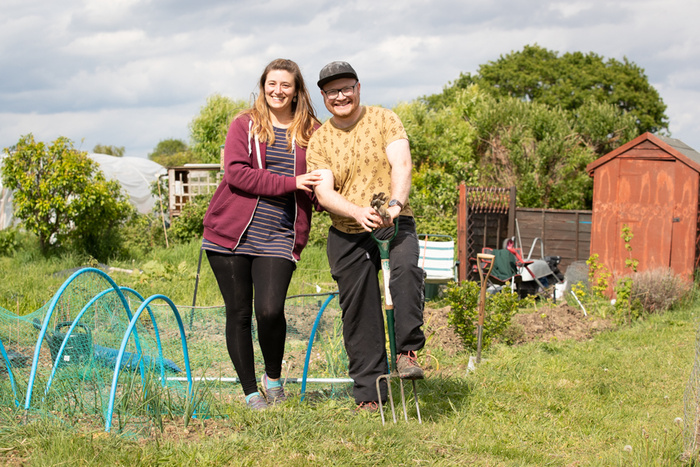
In the second of our articles featuring new plot holders to the site we Caught up with Marcus and Lorna who took over their plot just before or maybe just after Christmas. We put some questions to them about their motivation and how they tackled the patch and here is what they had to say.
What prompted, or what was your motivation for taking on a plot?
A number of reasons really but probably the main reason was to have a joint interest with my mother (Diana) and wife (Lorna) who I share the plot with. Also I’ve lived in Chelmsford for about 5 years now and want to try and be a bit more social locally as all our friends live at least a 30 minute drive away. I think it’s a good form of exercise and it’s out in the open air. Having an allotment is good for the soul, good for wildlife and I feel like we should support allotments as otherwise they might get sold off for housing!
Have you previously had an allotment?
I used to live in Romford and had an allotment for about a year. However it was around the time that Lorna and I started looking for a house and so by the time it was cleared and dug over we had moved to Chelmsford so we gave it up. We did get a few onions, pumpkins and leaks off it before we left though!
What where your thoughts when you rocked up for the first time?
I was really excited - the plot was a manageable size (although now I wish I’d got a larger one) – there was a shed(!) and a compost bin. There was water access near and it wasn’t under trees and the plot was generally in good condition. The site itself is also incredible with manure, mulch, a shop and a toilet/kitchen. My old site in Romford was far more basic and just had water.
Obviously there was a lot of clearing up to do - how did you tackle, And how have you determined what to grow. Did you or do you have a plan?
The plot was mostly grass and a small area of large herbs and some overgrown wooden box frames. I did a basic plan of what I wanted to grow – based on what we wanted to eat and things which we thought would be good/easy to start off with and then just got stuck in really.
The plot was long and thin so I started from the shed end and sort of marched up the plot. We were quite lucky as the first quarter or so had black mesh down so with 2 or 3 sets of hands we were able to pull up large areas of weeds and mesh to reveal top soil and compost underneath! We also inherited two lovely lavender bushes, a sage bush and Thyme (I love thyme – especially in chicken and leak pie!). So we cleared all these and replanted the herb bushes. Then little and often, I dug further patches of squares and rectangles based on my plan.
How would you assess almost your first quarters activity? are you on track?
We’ve had the plot about 3 months and I’m amazed at how well we’ve done. My main goal for this stage was to have made a bit of a dent in the digging and have at least have a few things in the ground but we’ve pretty much dug the whole plot now. We’ve got garlic - a kind donation someone on the site gave my mother, potatoes - a LOT of potatoes, onions, leaks - rescued from the garden and we didn’t expect much from but they seem happier in the allotment, and some more fruit bushes - although the raspberries don’t seem to be doing very much. We also have a bunch of stuff getting ready at home like beans, more herbs, Brussel sprouts and tomatoes.
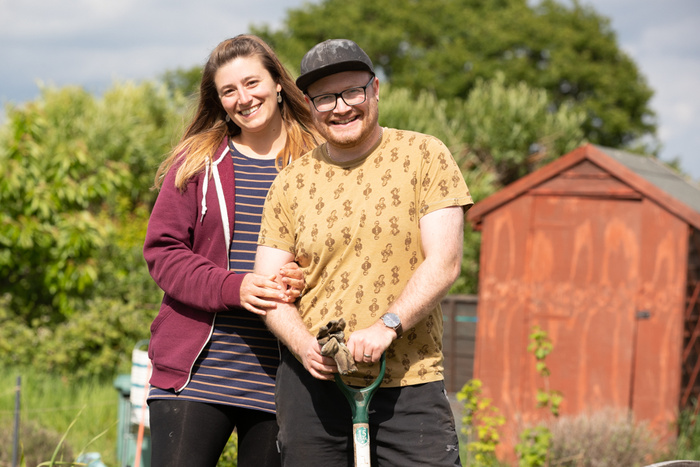
Any advice you would offer up to fellow newbies?
I don’t think I’m experienced enough to give advice but I would say just get stuck in! Little and often goes a long way. Break it down into small chunks and take photos as you go. It really lifts the spirit to see how you progress. A wheel barrow really helped. Karen and Foggy helped get some cardboard. It was meant for ‘no dig’ but we ended up moving so fast we just used it to help subdue the grass. I’d be inclined to say get a full plot but it may just be that I should have got a full plot. It’s also worth having a look in the shop as there’s lots of stuff and very cheap - also Grenville nurseries is a good local garden centre and there is a discount for Melbourne members!
anything you would in particular like to know - there is a lot of expertise on the site to take advantage of
I hear a lot of talk about ph level of the soil and soil type. I gather our soil is clay (maybe the editor can comment?). Also if there are any social events planned like a summer bbq or communal clean up projects etc. I’m not sure really, and probably have a hundred questions but can’t think of them at the moment!
How have you found the allotment community on site?
Everyone is very friendly! It’s a busy time of year and what with covid lockdown it’s a bit quieter but hopefully this will all blow over and there will be an opportunity to get to know people better! Karen and Ray have both been really nice and everyone says hello. I’m loving the allotment and everything that comes with it.
A big thank you to Marcus and Lorna for taking time out to provide an article to share. What was a green patch of vegetation has been transformed in the first quarter, and hopefully along with other members they'll allow us to check in relating to progress through the year.
21st May 2020
In: Features

In the second of our articles featuring new plot holders to the site we Caught up with Marcus and Lorna who took over their plot just before or maybe just after Christmas. We put some questions to them about their motivation and how they tackled the patch and here is what they had to say.
What prompted, or what was your motivation for taking on a plot?
A number of reasons really but probably the main reason was to have a joint interest with my mother (Diana) and wife (Lorna) who I share the plot with. Also I’ve lived in Chelmsford for about 5 years now and want to try and be a bit more social locally as all our friends live at least a 30 minute drive away. I think it’s a good form of exercise and it’s out in the open air. Having an allotment is good for the soul, good for wildlife and I feel like we should support allotments as otherwise they might get sold off for housing!
Have you previously had an allotment?
I used to live in Romford and had an allotment for about a year. However it was around the time that Lorna and I started looking for a house and so by the time it was cleared and dug over we had moved to Chelmsford so we gave it up. We did get a few onions, pumpkins and leaks off it before we left though!
What where your thoughts when you rocked up for the first time?
I was really excited - the plot was a manageable size (although now I wish I’d got a larger one) – there was a shed(!) and a compost bin. There was water access near and it wasn’t under trees and the plot was generally in good condition. The site itself is also incredible with manure, mulch, a shop and a toilet/kitchen. My old site in Romford was far more basic and just had water.
Obviously there was a lot of clearing up to do - how did you tackle, And how have you determined what to grow. Did you or do you have a plan?
The plot was mostly grass and a small area of large herbs and some overgrown wooden box frames. I did a basic plan of what I wanted to grow – based on what we wanted to eat and things which we thought would be good/easy to start off with and then just got stuck in really.
The plot was long and thin so I started from the shed end and sort of marched up the plot. We were quite lucky as the first quarter or so had black mesh down so with 2 or 3 sets of hands we were able to pull up large areas of weeds and mesh to reveal top soil and compost underneath! We also inherited two lovely lavender bushes, a sage bush and Thyme (I love thyme – especially in chicken and leak pie!). So we cleared all these and replanted the herb bushes. Then little and often, I dug further patches of squares and rectangles based on my plan.
How would you assess almost your first quarters activity? are you on track?
We’ve had the plot about 3 months and I’m amazed at how well we’ve done. My main goal for this stage was to have made a bit of a dent in the digging and have at least have a few things in the ground but we’ve pretty much dug the whole plot now. We’ve got garlic - a kind donation someone on the site gave my mother, potatoes - a LOT of potatoes, onions, leaks - rescued from the garden and we didn’t expect much from but they seem happier in the allotment, and some more fruit bushes - although the raspberries don’t seem to be doing very much. We also have a bunch of stuff getting ready at home like beans, more herbs, Brussel sprouts and tomatoes.

Any advice you would offer up to fellow newbies?
I don’t think I’m experienced enough to give advice but I would say just get stuck in! Little and often goes a long way. Break it down into small chunks and take photos as you go. It really lifts the spirit to see how you progress. A wheel barrow really helped. Karen and Foggy helped get some cardboard. It was meant for ‘no dig’ but we ended up moving so fast we just used it to help subdue the grass. I’d be inclined to say get a full plot but it may just be that I should have got a full plot. It’s also worth having a look in the shop as there’s lots of stuff and very cheap - also Grenville nurseries is a good local garden centre and there is a discount for Melbourne members!
anything you would in particular like to know - there is a lot of expertise on the site to take advantage of
I hear a lot of talk about ph level of the soil and soil type. I gather our soil is clay (maybe the editor can comment?). Also if there are any social events planned like a summer bbq or communal clean up projects etc. I’m not sure really, and probably have a hundred questions but can’t think of them at the moment!
How have you found the allotment community on site?
Everyone is very friendly! It’s a busy time of year and what with covid lockdown it’s a bit quieter but hopefully this will all blow over and there will be an opportunity to get to know people better! Karen and Ray have both been really nice and everyone says hello. I’m loving the allotment and everything that comes with it.
A big thank you to Marcus and Lorna for taking time out to provide an article to share. What was a green patch of vegetation has been transformed in the first quarter, and hopefully along with other members they'll allow us to check in relating to progress through the year.
Badger Phobic Gnomes Lose the Plot.
17th May 2020
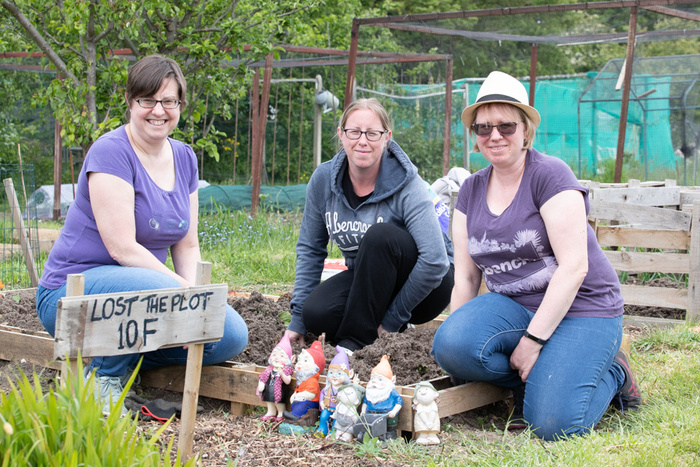
It's great to have new members to the site and last year saw between 8 and 10 new plots taken up and we welcome all of the new "allotmenteers". It can be quite daunting starting out especially if the plot is not in the best of shape. It's been really good to see the amazing progress which has been made on site by most. In the first of two articles from new plot holders, sisters Sally and Dawn give us an insight into their activity on plot 10F, the sign at the front - Lost the Plot - and confirm gnomes are not the right security measure against Badgers.
What prompted, or what was your motivation for taking on a plot?
I have always enjoyed gardening and have tried to grow vegetables in my garden, with mixed results. So I wondered if giving an allotment a go, would be a bit more successful. Having always fancied having an allotment plot, I discovered that, half plots available for first timers at the Melbourne Park allotment which is conveniently right next door to where my sister Dawn's flat is. So I convinced Dawn that we would share the plot with a promise that she would have a small area where she can have a garden chair and a few flowers as she does not have a garden of her own.
What where your thoughts when you rocked up for the first time? Does this have anything to do with the sign at the front of your patch?
There was a long time between the last owner and us taking the plot over and the weeds took advantage. We had waist high nettles, couch grass and the dreaded bind weed. Our Mum and Dad thought that we were both joking and a bit mad for taking on the patch, telling us they weren't going to help us, especially when they saw how over grown it was. So the sign was born and hand made by Dad, who loves a pun.
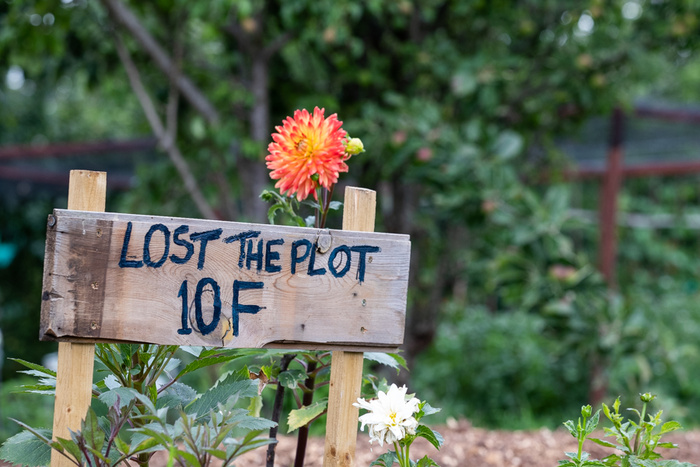
Obviously there was a lot of clearing up to do - how did you tackle, and then what did you decide about growing? did you or do you have a plan.
Despite Mum, Dad and younger sister, telling us both, that they were definately not coming over, they were over by day two, helping us to clear the plot and it has now become a bit of a family effort. There has not ever been a grand plan, we just started with the least overgrown area and cleared this first so we could get some vegetables going. As we got the plot in mid May and it took a few weeks to clear we brought some easy grow vegetable plugs - we like courgettes, runner beans, tomato's, leeks, also the classic carrots and beetroots seeds, so we could get some instant results and to make all the hard work worth while.
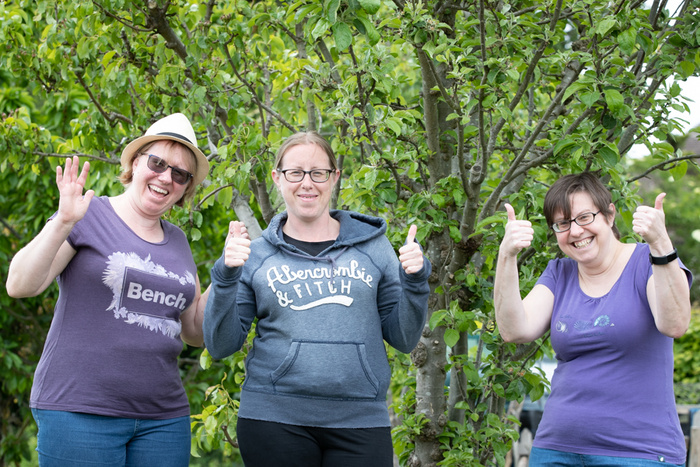
Then we slowly worked our way around the plot, bagging up all the weeds. There was so much of it we had to slowly sneak them to Dawn's flats rubbish bins to get rid of it, some of it we let rot in the bags so it would die and we could put it on the compost. Then covering over areas, when cleared with old ground sheets to try and suppress the weeds from coming up again until we could get back to that area again.
We have had some very kind friends and family help us out by giving us some stone paving, wooden collars and pallets, fencing, water butt, in exchange for vegetables, beer or a meal. Also great friend Ade who's a gardener by trade came over with his ladders and gave us a tree pruning lesson in exchange for Dawn cooking dinner. He is also always there on hand with the aid of what's app and face book with lots of encouragement and advice, as all our friends have been, as we have been documenting our progress light heartily on Facebook.
How would you assess almost your first year and what are your growing plans for this year - what are the ‘plotters’ plotting! - any specific aims?
We are really pleased with our progress with the plot, although it's been slow and has taken us almost a year to get it really ship shape. We aren't great planners more just giving a go, if it works, great, if it doesn't, oh well, but it will be good to grow across all of the plot this year. We recently brought a poly tunnel, so this year we are going to try and grow from seed. We already have some garlic and onions in, also are going to try a few brassicas, cabbages, red brussel sprouts, sprouting broccoli, and more salad crops, a bit more fruit, as well as your normal basic crops, onions, potato's, runner beans, French beans, sweetcorn, courgettes etc. Also that small garden area for Dawn to sit in.
Any advice you would offer up to fellow newbies?
Lots! We have made some classic rookie errors. Read the plant labels carefully, our sister Laura was not impressed that her bamboo wigwam structures weren't really needed as Dwarf runner beans aren't small runner beans, they are patio plants, not climbing! She did see the funny side of it eventually. Some crops need planting in stages otherwise you end up with a glut all at once - we had a lot of leeks. Two courgette plants feed a family of 5 and their friends and work colleagues and so do 12 runner bean plants. The badgers like carrots and munched happy through our first crop and they dug up every thing so we need to put in more badger proofing.
Also Rome wasn't built in a day so don't get disheartened. Work in sections, you get there eventually, little and often so it doesn't become a chore. Look around the site to see what other plot holders are growing which gives you a good idea on what crops are successful on the site, also how to construct stuff. What you can do with wooden pallets is endless.
Anything you would in particular like to know - there is a lot of expertise on the site to take advantage of - how have you found the allotment community on site?
Everybody has been really friendly. It's lovely to come over to the site and not only do some gardening, bu also have a chat and lots of people have given us some great advice. We have been surprised at how many people we already know and never knew they had an allotment. Our neighbouring plot holders have been very kind - we have been given plants, some beautiful dahlia's from Albert (Bertie) and tomato plants by Dave. Ray gave us some new veg to try, some Patty Pan and the Tromboncino fed all five of us for serval meals. The Trading hut is always a great help, there is a wide range of stock which is really useful, especially for us when we first started as didn't have a lot of equipment, and were able to ask questions. Being part of the Melbourne park allotment association has also been useful - the annual review committee meeting was light hearted and informative and we really enjoyed coming along to the annual mulled wine and mince pie event.
What’s the story with the gnomes?
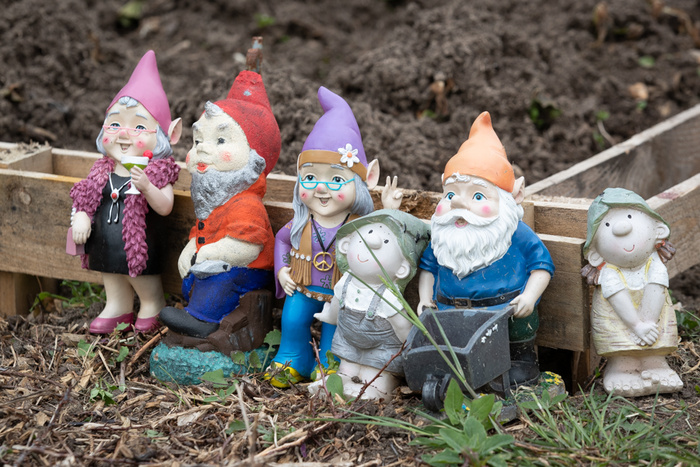
Controversial I know, but you've got to love a gnome! Even if they only make some people smile. Although they have not proved to be very good night security guards against the badgers, they just fall over in fear!
A huge thank you to the "lost the plotters' for sharing their experiences with us and hopefully they won't mind too much if we check in for a catch up later in the year to see if Dawn has secured her viewing patch, and the Gnomes have become a little more robust against those marauding badgers!
17th May 2020
In: Features

It's great to have new members to the site and last year saw between 8 and 10 new plots taken up and we welcome all of the new "allotmenteers". It can be quite daunting starting out especially if the plot is not in the best of shape. It's been really good to see the amazing progress which has been made on site by most. In the first of two articles from new plot holders, sisters Sally and Dawn give us an insight into their activity on plot 10F, the sign at the front - Lost the Plot - and confirm gnomes are not the right security measure against Badgers.
What prompted, or what was your motivation for taking on a plot?
I have always enjoyed gardening and have tried to grow vegetables in my garden, with mixed results. So I wondered if giving an allotment a go, would be a bit more successful. Having always fancied having an allotment plot, I discovered that, half plots available for first timers at the Melbourne Park allotment which is conveniently right next door to where my sister Dawn's flat is. So I convinced Dawn that we would share the plot with a promise that she would have a small area where she can have a garden chair and a few flowers as she does not have a garden of her own.
What where your thoughts when you rocked up for the first time? Does this have anything to do with the sign at the front of your patch?
There was a long time between the last owner and us taking the plot over and the weeds took advantage. We had waist high nettles, couch grass and the dreaded bind weed. Our Mum and Dad thought that we were both joking and a bit mad for taking on the patch, telling us they weren't going to help us, especially when they saw how over grown it was. So the sign was born and hand made by Dad, who loves a pun.

Obviously there was a lot of clearing up to do - how did you tackle, and then what did you decide about growing? did you or do you have a plan.
Despite Mum, Dad and younger sister, telling us both, that they were definately not coming over, they were over by day two, helping us to clear the plot and it has now become a bit of a family effort. There has not ever been a grand plan, we just started with the least overgrown area and cleared this first so we could get some vegetables going. As we got the plot in mid May and it took a few weeks to clear we brought some easy grow vegetable plugs - we like courgettes, runner beans, tomato's, leeks, also the classic carrots and beetroots seeds, so we could get some instant results and to make all the hard work worth while.

Then we slowly worked our way around the plot, bagging up all the weeds. There was so much of it we had to slowly sneak them to Dawn's flats rubbish bins to get rid of it, some of it we let rot in the bags so it would die and we could put it on the compost. Then covering over areas, when cleared with old ground sheets to try and suppress the weeds from coming up again until we could get back to that area again.
We have had some very kind friends and family help us out by giving us some stone paving, wooden collars and pallets, fencing, water butt, in exchange for vegetables, beer or a meal. Also great friend Ade who's a gardener by trade came over with his ladders and gave us a tree pruning lesson in exchange for Dawn cooking dinner. He is also always there on hand with the aid of what's app and face book with lots of encouragement and advice, as all our friends have been, as we have been documenting our progress light heartily on Facebook.
How would you assess almost your first year and what are your growing plans for this year - what are the ‘plotters’ plotting! - any specific aims?
We are really pleased with our progress with the plot, although it's been slow and has taken us almost a year to get it really ship shape. We aren't great planners more just giving a go, if it works, great, if it doesn't, oh well, but it will be good to grow across all of the plot this year. We recently brought a poly tunnel, so this year we are going to try and grow from seed. We already have some garlic and onions in, also are going to try a few brassicas, cabbages, red brussel sprouts, sprouting broccoli, and more salad crops, a bit more fruit, as well as your normal basic crops, onions, potato's, runner beans, French beans, sweetcorn, courgettes etc. Also that small garden area for Dawn to sit in.
Any advice you would offer up to fellow newbies?
Lots! We have made some classic rookie errors. Read the plant labels carefully, our sister Laura was not impressed that her bamboo wigwam structures weren't really needed as Dwarf runner beans aren't small runner beans, they are patio plants, not climbing! She did see the funny side of it eventually. Some crops need planting in stages otherwise you end up with a glut all at once - we had a lot of leeks. Two courgette plants feed a family of 5 and their friends and work colleagues and so do 12 runner bean plants. The badgers like carrots and munched happy through our first crop and they dug up every thing so we need to put in more badger proofing.
Also Rome wasn't built in a day so don't get disheartened. Work in sections, you get there eventually, little and often so it doesn't become a chore. Look around the site to see what other plot holders are growing which gives you a good idea on what crops are successful on the site, also how to construct stuff. What you can do with wooden pallets is endless.
Anything you would in particular like to know - there is a lot of expertise on the site to take advantage of - how have you found the allotment community on site?
Everybody has been really friendly. It's lovely to come over to the site and not only do some gardening, bu also have a chat and lots of people have given us some great advice. We have been surprised at how many people we already know and never knew they had an allotment. Our neighbouring plot holders have been very kind - we have been given plants, some beautiful dahlia's from Albert (Bertie) and tomato plants by Dave. Ray gave us some new veg to try, some Patty Pan and the Tromboncino fed all five of us for serval meals. The Trading hut is always a great help, there is a wide range of stock which is really useful, especially for us when we first started as didn't have a lot of equipment, and were able to ask questions. Being part of the Melbourne park allotment association has also been useful - the annual review committee meeting was light hearted and informative and we really enjoyed coming along to the annual mulled wine and mince pie event.
What’s the story with the gnomes?

Controversial I know, but you've got to love a gnome! Even if they only make some people smile. Although they have not proved to be very good night security guards against the badgers, they just fall over in fear!
A huge thank you to the "lost the plotters' for sharing their experiences with us and hopefully they won't mind too much if we check in for a catch up later in the year to see if Dawn has secured her viewing patch, and the Gnomes have become a little more robust against those marauding badgers!
May and June used to be My Months....
05th May 2020
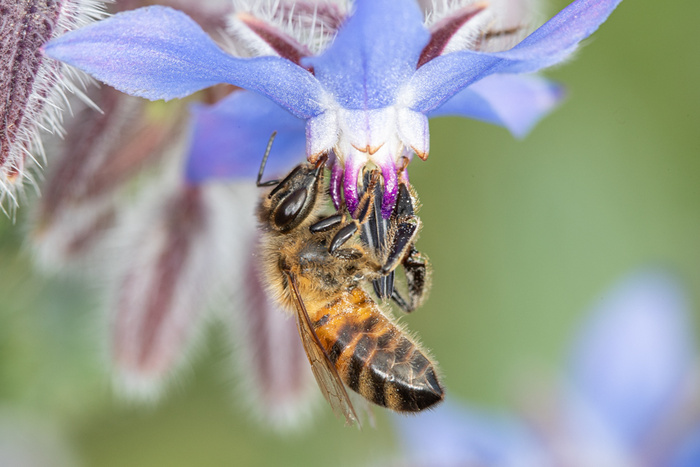
Some time ago, Karen wrote a diary for every month of the year in terms of the activities undertaken on her plots. Whilst some things have changed, for example there is no sport as we under lockdown, - (and the bloke with the camera is actually active on the plots with project 63 in addition to bugs and beastie snapping) - the general migration from dig to no dig, and bearing in mind this little list is not exhaustive, thought it was worth re producing.
A set of notes for every month can be found on the website under the heading 'The Allotment Year' and can be downloaded as required.
May and June are truly my months. No sign of the other half as the cricket season and motor racing are in full swing, as well as local gymnastics by the Blue Falcons Gymnastics Display Team. (If you haven’t seen them, you should – awesome). If by chance there isn’t any sport on anywhere, there is a distinctly improved possibility that he may be spied on the allotment chasing various insects, flies, bugs, and can be located by listening for the occassional cuss as the models don’t stay still long enough or pose for the camera, unlike the bee in the image above, who was very sporting and camera savvy!
The plots are now becoming visually more appealing as a covering of growth replaces the spartan earthy look of the winter months, and trees in blossom. May is also the time to step back, ponder, and consider whether there is anything that has been forgotton in terms of sowing or planting particular crops. It’s best to consider this now as it will be too late to overcome later. The severity and number of overnight frosts should decrease, although it is still wise to keep a watch on the local weather forecasts (for ease the allotment association web site has a direct feed from the Met Office on the home page).
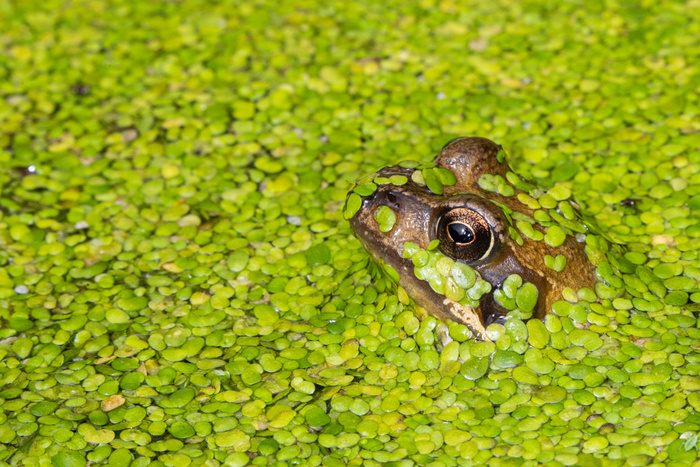
My usual jumbled notes on activities that I undertake on the plots can be found underneath together with the most important vegetable jobs to be completed. Please bear in mind that some of the activities may have been mentioned at the end of April, or even at the beginning of June, and some depend on the prevailing weather conditions. For example 2013 – this year – has been an exceptionally cold start to the growing season, and the Asparagus growing and cutting may well be deferred for a couple of weeks.
1. Apply growmore over runner bean area
2. Sow parsley outside
3. Dig up old purple sprouting broccoli
4. Apply straw around strawberries
5. Blueberries, apply tomato feed (potash) regularly
rom flowering until fruit ripens
6. Plum – water if required, rarely needs pruning – just
remove any damaged branches
7. Plant out tomatoes grown undervcover 2nd week onwards after hardening off. However, this is quite early, and probably best to plant towards the end of the month in case of frost, unless able to cover with fleece. As already mentioned 2013 has seen a harsh winter and everything is generally 2-3 weeks behind normal schedule.
8. Plant more carrots in raised bed and open ground
9. Stop cutting asparagus at end of May or beginning of June, and all the time keep a close look out for the Asparagus beetle which is prevalent. (image to the
right)
10. Feed cucumber with high nitrgoen feed away from
stem (dried blood) occassionally water with
tomorite. Cucumbers need nitrogen in the early stages for increased leaf growth, and then potash feed once the first blossoms are witnessed to encourage fruit growth.
11. Pinch tip of cucumber out when reached high enough, once side shoots produced 3 pairs of leaves pinch out tops
12. Water mange tout and peas if required, remove fleece / hoops as mange tout grow but protect with netting from pigeons
Last month we mentioned planting and thinning out runner beans, having prepared the area first. Runner beans benefit from well prepared ground with plenty of well - rotted manure or other organic matter dug in. Also mentioned was the preparation of a sturdy framework to allow the plants to grasp and grow, and an example of just one style of frame can be seen in the image under.
Last month I also commented about the planting of sweet corn, and the general hazard on our allotments caused by Badgers that are inextricably drawn to this crop.
Having watched the weather closely through the month and made a conscious decision (if this is possible in the UK) that the worst is behind us, planting outside of tomatoes, courgettes, pumpkins and other tender vegetables that have started life indoors can be undertaken, that is if you haven’t already planted. (mid to end of month, and ensure that you have a ready supply of fleece just in case).
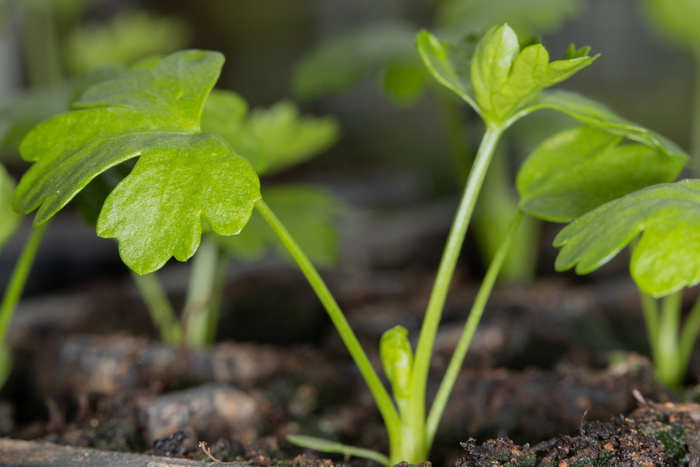
One of the first things to do is to place straw all - round the strawberries and then carefully cover with a net. I tend to loosely stake the net all the way around the perimeter so that the net is kept sufficiently away from the plants which may help to prevent the birds from pecking through.
When sowing parsley, I take a kettle full of boiling water where I am going to sow and pour over the soil. I then sow the seed on top and cover very thinly with soil. I then gently re water with warm (not boiling) water, and then cover with a cloche or plastic bell cover. The seeds take quite a while to germinate, and I keep moist as need be.
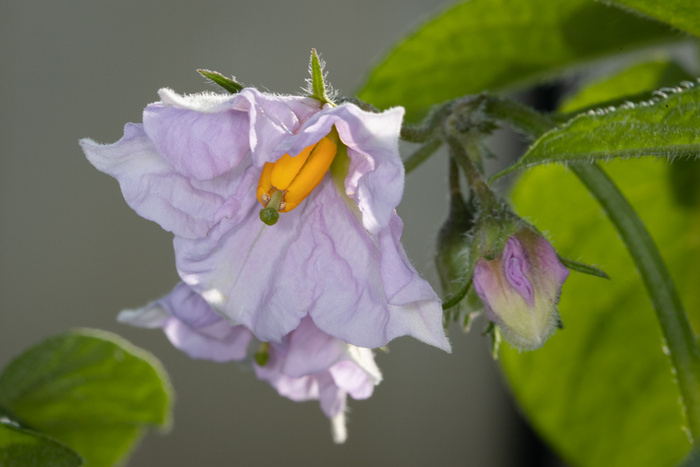
Last month we finished planting our potatoes. As the potatoes begin to show through the soil, it is essential until the beginning of June, or the possibility of frost ceases, to earth up. This involves raking earth over the top of the growing plants to provide added protection. Repeat at one or two week intervals or as necessary. This process kills weeds, helps prevent blight and prevents the tubers from being exposed to the light and turning green and poisonous.
Finally, during the course of this month the trusty lawn mower gets its first airing of the year to tidy up all the paths and surrounding green areas, together with a general tidy up of the edges. This also heralds and is co – incident with the start of the perpetual allotment holder’s battle against weeds.
Finally, finally, the wind tends to rush across the allotment, which dries out the soil pretty quickly. The water has generally been turned back on and prudent and regular watering (if it isn’t continually pouring with rain) is a must.
05th May 2020
In: Features

Some time ago, Karen wrote a diary for every month of the year in terms of the activities undertaken on her plots. Whilst some things have changed, for example there is no sport as we under lockdown, - (and the bloke with the camera is actually active on the plots with project 63 in addition to bugs and beastie snapping) - the general migration from dig to no dig, and bearing in mind this little list is not exhaustive, thought it was worth re producing.
A set of notes for every month can be found on the website under the heading 'The Allotment Year' and can be downloaded as required.
May and June are truly my months. No sign of the other half as the cricket season and motor racing are in full swing, as well as local gymnastics by the Blue Falcons Gymnastics Display Team. (If you haven’t seen them, you should – awesome). If by chance there isn’t any sport on anywhere, there is a distinctly improved possibility that he may be spied on the allotment chasing various insects, flies, bugs, and can be located by listening for the occassional cuss as the models don’t stay still long enough or pose for the camera, unlike the bee in the image above, who was very sporting and camera savvy!
The plots are now becoming visually more appealing as a covering of growth replaces the spartan earthy look of the winter months, and trees in blossom. May is also the time to step back, ponder, and consider whether there is anything that has been forgotton in terms of sowing or planting particular crops. It’s best to consider this now as it will be too late to overcome later. The severity and number of overnight frosts should decrease, although it is still wise to keep a watch on the local weather forecasts (for ease the allotment association web site has a direct feed from the Met Office on the home page).

My usual jumbled notes on activities that I undertake on the plots can be found underneath together with the most important vegetable jobs to be completed. Please bear in mind that some of the activities may have been mentioned at the end of April, or even at the beginning of June, and some depend on the prevailing weather conditions. For example 2013 – this year – has been an exceptionally cold start to the growing season, and the Asparagus growing and cutting may well be deferred for a couple of weeks.
1. Apply growmore over runner bean area
2. Sow parsley outside
3. Dig up old purple sprouting broccoli
4. Apply straw around strawberries
5. Blueberries, apply tomato feed (potash) regularly
rom flowering until fruit ripens
6. Plum – water if required, rarely needs pruning – just
remove any damaged branches
7. Plant out tomatoes grown undervcover 2nd week onwards after hardening off. However, this is quite early, and probably best to plant towards the end of the month in case of frost, unless able to cover with fleece. As already mentioned 2013 has seen a harsh winter and everything is generally 2-3 weeks behind normal schedule.
8. Plant more carrots in raised bed and open ground
9. Stop cutting asparagus at end of May or beginning of June, and all the time keep a close look out for the Asparagus beetle which is prevalent. (image to the
right)
10. Feed cucumber with high nitrgoen feed away from
stem (dried blood) occassionally water with
tomorite. Cucumbers need nitrogen in the early stages for increased leaf growth, and then potash feed once the first blossoms are witnessed to encourage fruit growth.
11. Pinch tip of cucumber out when reached high enough, once side shoots produced 3 pairs of leaves pinch out tops
12. Water mange tout and peas if required, remove fleece / hoops as mange tout grow but protect with netting from pigeons
Last month we mentioned planting and thinning out runner beans, having prepared the area first. Runner beans benefit from well prepared ground with plenty of well - rotted manure or other organic matter dug in. Also mentioned was the preparation of a sturdy framework to allow the plants to grasp and grow, and an example of just one style of frame can be seen in the image under.
Last month I also commented about the planting of sweet corn, and the general hazard on our allotments caused by Badgers that are inextricably drawn to this crop.
Having watched the weather closely through the month and made a conscious decision (if this is possible in the UK) that the worst is behind us, planting outside of tomatoes, courgettes, pumpkins and other tender vegetables that have started life indoors can be undertaken, that is if you haven’t already planted. (mid to end of month, and ensure that you have a ready supply of fleece just in case).

One of the first things to do is to place straw all - round the strawberries and then carefully cover with a net. I tend to loosely stake the net all the way around the perimeter so that the net is kept sufficiently away from the plants which may help to prevent the birds from pecking through.
When sowing parsley, I take a kettle full of boiling water where I am going to sow and pour over the soil. I then sow the seed on top and cover very thinly with soil. I then gently re water with warm (not boiling) water, and then cover with a cloche or plastic bell cover. The seeds take quite a while to germinate, and I keep moist as need be.

Last month we finished planting our potatoes. As the potatoes begin to show through the soil, it is essential until the beginning of June, or the possibility of frost ceases, to earth up. This involves raking earth over the top of the growing plants to provide added protection. Repeat at one or two week intervals or as necessary. This process kills weeds, helps prevent blight and prevents the tubers from being exposed to the light and turning green and poisonous.
Finally, during the course of this month the trusty lawn mower gets its first airing of the year to tidy up all the paths and surrounding green areas, together with a general tidy up of the edges. This also heralds and is co – incident with the start of the perpetual allotment holder’s battle against weeds.
Finally, finally, the wind tends to rush across the allotment, which dries out the soil pretty quickly. The water has generally been turned back on and prudent and regular watering (if it isn’t continually pouring with rain) is a must.
Hitting the Ground Running
29th April 2020
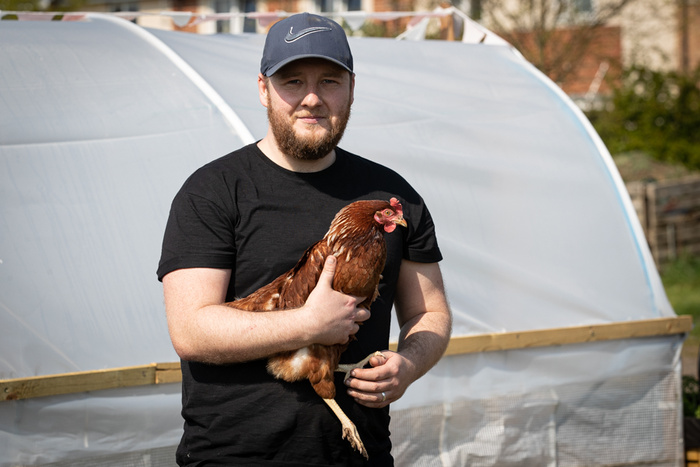
Hi Alex, thanks again for offering up an insight into your activities. You kindly participated last year with an original article about the start of your journey, and then along with our fellow 'Allotmenteers' a further piece in terms of what was at the time working well for you all.
Having now spent a full year, how would you sum up progress and the aspirations for this year and beyond
After a really up and down season I’m looking to hit the ground running this year, I’m trying loads of different things - from new growing techniques to a more varied selection of crops, I’m challenging myself to extend my growing season.
To aid me in extending my growing season I’ve overwintered onions, garlic and broad beans as well as some winter hardy lettuces - they’ve all been relatively successful so far which should hopefully mean an early harvest this year! My poly tunnel is fixed with a new cover which will also help with extending my summer both now and in October/November.
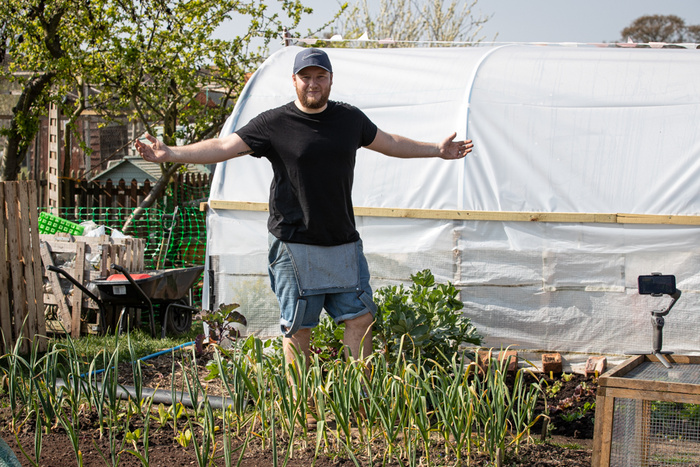
I’m starting nearly all my plants indoors in seed cell trays and I’m trying the multi-sow technique this year. This should maximise the amount of food I am able to grow in the space I have. Alongside this I’ll be doing a lot more companion and interplanting.
I am slowly converting my entire allotment to the no dig method - this will hopefully improve the quality of my soil and reduce the workload.
I’m trying some new tomato varieties this year as well as some more unusual vegetables such as chickpeas, oca and kalettes. Im hoping to have a bit more success with melons this year as I only managed one last year!
how is the you tube channel going. You seem to have been really busy and Mrs L has binge watched the series?
It's going really well - I have quite a following now across YouTube and Instagram. I am always working on new content to share with people online. I love that even though I’ve only been growing a couple of years, I have learnt so much and can help beginners all around the world!
Any developments planned for social media or other interesting projects?
I had some visits to other allotment sites around Essex panned before social distancing kicked in, I’ll be sharing my experiences on the allotment weekly as I have a little more time to film this year.
Hopefully Ray and Karen have agreed to guest start on a video about project 63.
You mentioned earlier about multi - sow technique? Could you expand a little?
For the newbies - multi-sow is a technique designed to maximise yield in a small space. You use a cell tray to sow more than 1 seed per cell, then plant them out as a clump of seedlings. You allow them to mature as a clump and complete for water and nutrients in the soil. This means they grow at different rates. At maturity you can harvest the larger ones and leave the others in to get a bit bigger. I’ll do a YouTube video on it soon if you want more detail. It saves on thinning out.
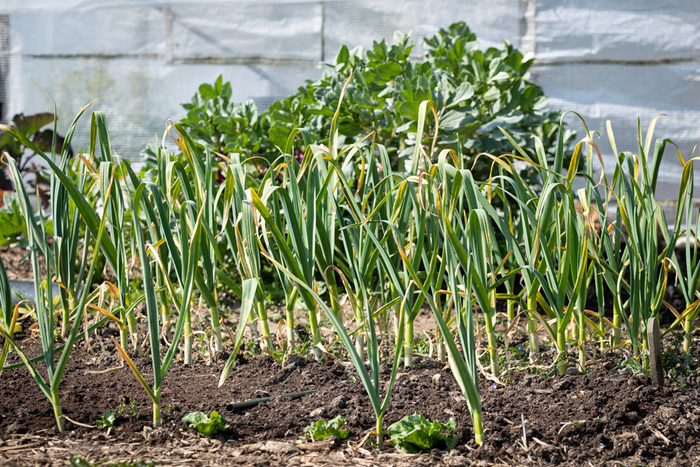
what would you consider your successes last year? apart from the melons any disappointments or things you learned most from?
I had a great year again for tomatoes they really are my favourite! Sungold have quickly become my favourite variety. They are super sweet.
I struggled with peppers last summer, I think with the wet, cooler summer most people struggled.
Finally, last season I managed to grow parsnips and sprouts to go with my christmas dinner - this year I want to go one step further and grow potatoes for it too.
Good luck in your growing season, here’s to a successful 2020!
A big thank you to Alex for sharing his thoughts with the website. Apart from the dubious requirement for Ray and Karen to appear on you tube, we'll catch up again during the year to see how everything has processed. Alternatively check into or subscribe to Alex you tube channel.
29th April 2020
In: Features

Hi Alex, thanks again for offering up an insight into your activities. You kindly participated last year with an original article about the start of your journey, and then along with our fellow 'Allotmenteers' a further piece in terms of what was at the time working well for you all.
Having now spent a full year, how would you sum up progress and the aspirations for this year and beyond
After a really up and down season I’m looking to hit the ground running this year, I’m trying loads of different things - from new growing techniques to a more varied selection of crops, I’m challenging myself to extend my growing season.
To aid me in extending my growing season I’ve overwintered onions, garlic and broad beans as well as some winter hardy lettuces - they’ve all been relatively successful so far which should hopefully mean an early harvest this year! My poly tunnel is fixed with a new cover which will also help with extending my summer both now and in October/November.

I’m starting nearly all my plants indoors in seed cell trays and I’m trying the multi-sow technique this year. This should maximise the amount of food I am able to grow in the space I have. Alongside this I’ll be doing a lot more companion and interplanting.
I am slowly converting my entire allotment to the no dig method - this will hopefully improve the quality of my soil and reduce the workload.
I’m trying some new tomato varieties this year as well as some more unusual vegetables such as chickpeas, oca and kalettes. Im hoping to have a bit more success with melons this year as I only managed one last year!
how is the you tube channel going. You seem to have been really busy and Mrs L has binge watched the series?
It's going really well - I have quite a following now across YouTube and Instagram. I am always working on new content to share with people online. I love that even though I’ve only been growing a couple of years, I have learnt so much and can help beginners all around the world!
Any developments planned for social media or other interesting projects?
I had some visits to other allotment sites around Essex panned before social distancing kicked in, I’ll be sharing my experiences on the allotment weekly as I have a little more time to film this year.
Hopefully Ray and Karen have agreed to guest start on a video about project 63.
You mentioned earlier about multi - sow technique? Could you expand a little?
For the newbies - multi-sow is a technique designed to maximise yield in a small space. You use a cell tray to sow more than 1 seed per cell, then plant them out as a clump of seedlings. You allow them to mature as a clump and complete for water and nutrients in the soil. This means they grow at different rates. At maturity you can harvest the larger ones and leave the others in to get a bit bigger. I’ll do a YouTube video on it soon if you want more detail. It saves on thinning out.

what would you consider your successes last year? apart from the melons any disappointments or things you learned most from?
I had a great year again for tomatoes they really are my favourite! Sungold have quickly become my favourite variety. They are super sweet.
I struggled with peppers last summer, I think with the wet, cooler summer most people struggled.
Finally, last season I managed to grow parsnips and sprouts to go with my christmas dinner - this year I want to go one step further and grow potatoes for it too.
Good luck in your growing season, here’s to a successful 2020!
A big thank you to Alex for sharing his thoughts with the website. Apart from the dubious requirement for Ray and Karen to appear on you tube, we'll catch up again during the year to see how everything has processed. Alternatively check into or subscribe to Alex you tube channel.
The "Seedlings" Story. Plot 51B
28th April 2020
In 2018 the site welcomed a new group, the Marconi Belles who initially took over the plot opposite the trading hut. The plot was definitely in need of some attention, and Foggy Hau and the Belles have kindly agreed to provide their story. With the blessing of the Belles this item is spread over two different posts.......to keep everyone on tenterhooks for the next episode. A huge thank you to the group for sharing with us. All words and pictures courtesy of Foggy Hau and the Marconi Belles.
Plot 51B - Growing more than Fruit and Veg
Hello, we are members of the Marconi Belles Women Institute (WI). When you hear the word’s WI you might think - Jam and Jerusalem, Calendar Girls and baking cakes. In fact, we are charity that raises money and awareness on issues relating to women and their community. Just as importantly we socialise, learn new skills and have a cuppa. Marconi Belles are a relatively new WI in Chelmsford with wide portfolio of activity groups (we call them sub groups) which happen outside of our monthly meetings.
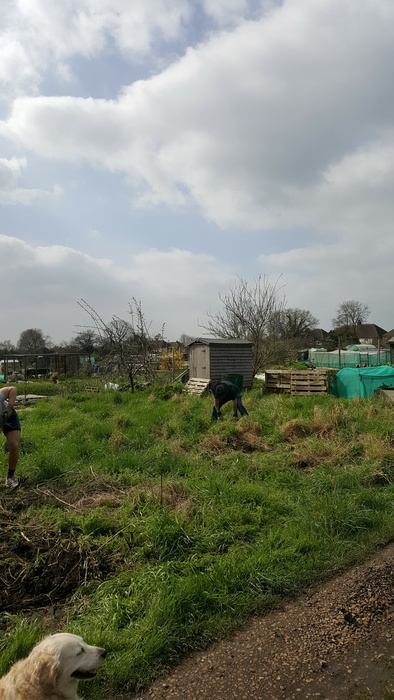
We are The Seedlings - the gardening sub group. We meet up throughout the year to visit gardens together, do volunteer work, have a drink and chat. Then we got talking about growing vegetables and fruit as a communal group … you can guess what happened!
A little group of us Seedlings decided to take on a allotment together in 2017. It was a mixture of practical necessity (as we all have small gardens) whilst sharing knowledge over a cuppa. It took a while for us to find a allotment site that would suit our needs. Then we visited the Melbourne Community site in Summer 2017 we were impressed. The excellent facilities and the welcoming atmosphere really won us over. So we applied for a half plot and waited.
It was a windy afternoon in February 2018 when we finally got to see plot 51B. The plot had the usual debris from neglect and tough woody weeds but we saw the potential. So we had a chat, agreed, signed the contract and our little allotment group started. The plan for 2018 was to clear the site and get planting.
On a sunny Saturday in April ‘The Groupies’ (The Seedlings Allotment mini group), family members and Missy the dog got to work clearing the site of years of rubbish and rotavated soil.
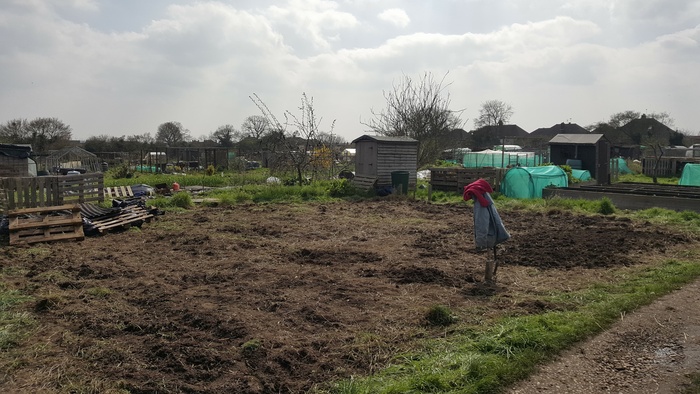
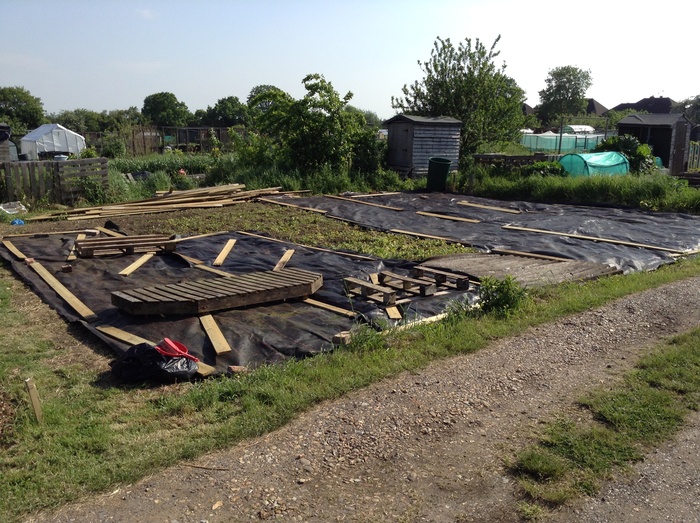
Then in May, we discovered the extent of bindweed covering the whole plot! We quickly treated the first wave with herbicide and then again in Midsummer. We got hold of lots of secondhand weed membrane and covered as much of the area as possible. This was a bit of a setback for us but the weed killer got the bindweed and creeping thistle under control.
Now a bit delayed but we carried on. Summer 2018 we grew a small collection of vegetables (donated and homegrown) in a less weedy corner of the plot to see how they grew. In hindsight, this was a good decision, as it was such a long hot dry Summer most of the weeds under the membrane gave up.
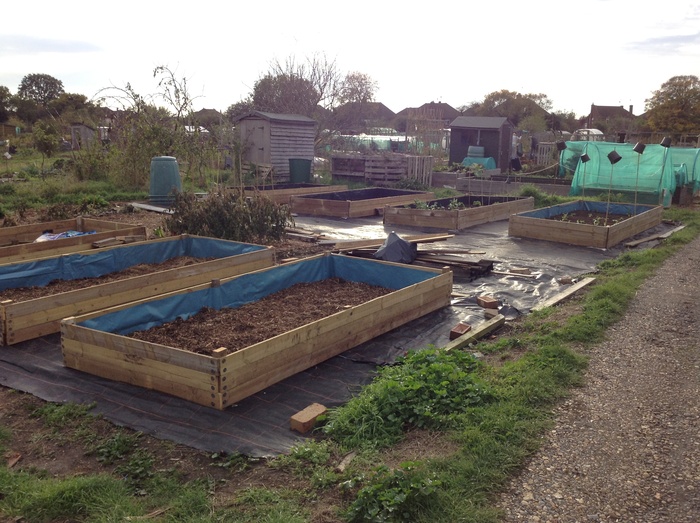
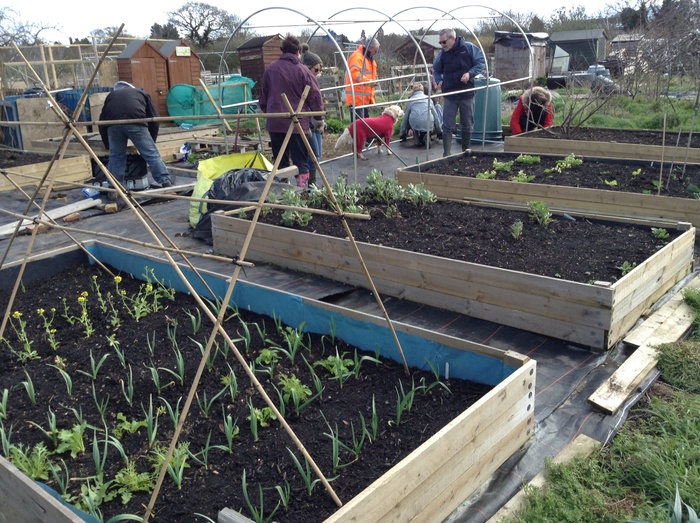
The seven raised beds were built over late Summer and Autumn of 2018. These raised beds were made from reclaimed timber, plastic sheeting, cardboard, old turf and a lot of help from various family members. Then, 10 tonnes of screened topsoil was delivered on a dull November afternoon. Luckily the driver was kind enough to fill two raised beds with his grab.
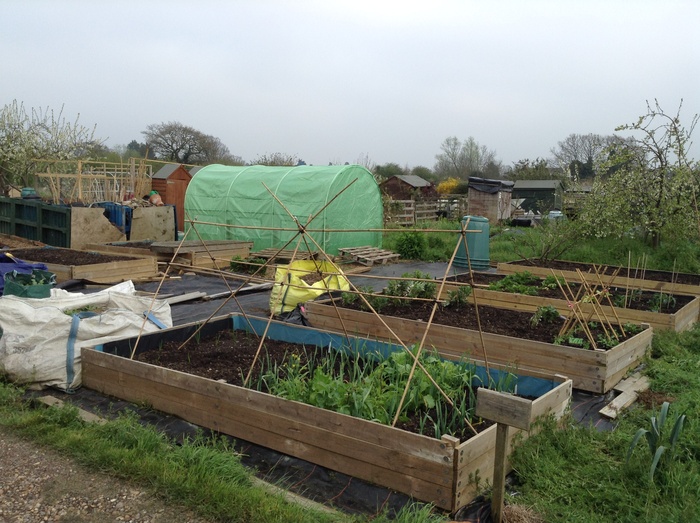
Again, Team Groupie swung into action the next day and moved our hill of top soil into remaining raised beds or various bulk bags (for storage). In the end, seven raised beds were either full or almost full. It took some time but we finally got to the exciting part … we got planting winter vegetables! So in went red cabbage, Italian black kale, broad beans, rainbow chard, winter salad mix, garlic and pot calendula.
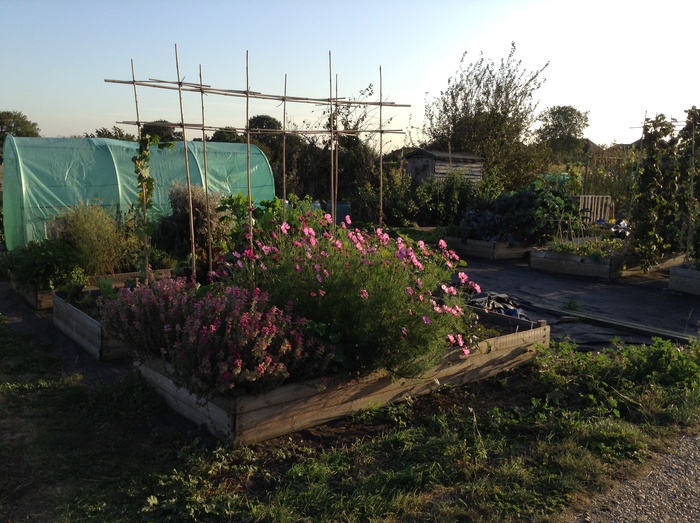
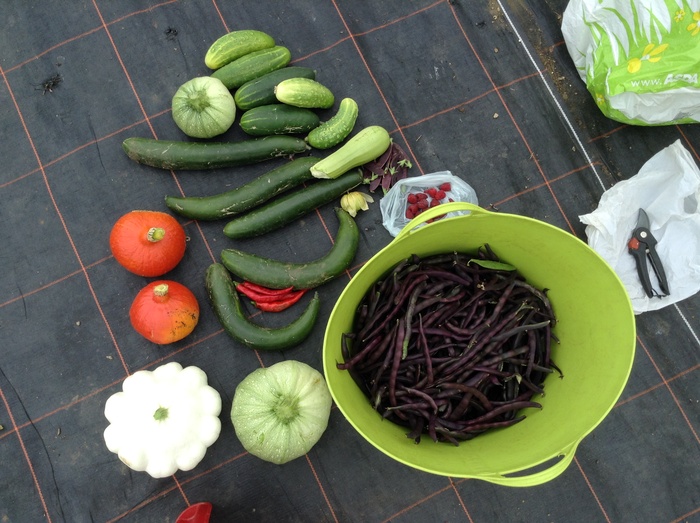
Keep checking into the website for Part two of the Marconi Belles journey, and once again a big thank you to Foggy and the team for sharing their story.
28th April 2020
In: Features
In 2018 the site welcomed a new group, the Marconi Belles who initially took over the plot opposite the trading hut. The plot was definitely in need of some attention, and Foggy Hau and the Belles have kindly agreed to provide their story. With the blessing of the Belles this item is spread over two different posts.......to keep everyone on tenterhooks for the next episode. A huge thank you to the group for sharing with us. All words and pictures courtesy of Foggy Hau and the Marconi Belles.
Plot 51B - Growing more than Fruit and Veg
Hello, we are members of the Marconi Belles Women Institute (WI). When you hear the word’s WI you might think - Jam and Jerusalem, Calendar Girls and baking cakes. In fact, we are charity that raises money and awareness on issues relating to women and their community. Just as importantly we socialise, learn new skills and have a cuppa. Marconi Belles are a relatively new WI in Chelmsford with wide portfolio of activity groups (we call them sub groups) which happen outside of our monthly meetings.

We are The Seedlings - the gardening sub group. We meet up throughout the year to visit gardens together, do volunteer work, have a drink and chat. Then we got talking about growing vegetables and fruit as a communal group … you can guess what happened!
A little group of us Seedlings decided to take on a allotment together in 2017. It was a mixture of practical necessity (as we all have small gardens) whilst sharing knowledge over a cuppa. It took a while for us to find a allotment site that would suit our needs. Then we visited the Melbourne Community site in Summer 2017 we were impressed. The excellent facilities and the welcoming atmosphere really won us over. So we applied for a half plot and waited.
It was a windy afternoon in February 2018 when we finally got to see plot 51B. The plot had the usual debris from neglect and tough woody weeds but we saw the potential. So we had a chat, agreed, signed the contract and our little allotment group started. The plan for 2018 was to clear the site and get planting.
On a sunny Saturday in April ‘The Groupies’ (The Seedlings Allotment mini group), family members and Missy the dog got to work clearing the site of years of rubbish and rotavated soil.


Then in May, we discovered the extent of bindweed covering the whole plot! We quickly treated the first wave with herbicide and then again in Midsummer. We got hold of lots of secondhand weed membrane and covered as much of the area as possible. This was a bit of a setback for us but the weed killer got the bindweed and creeping thistle under control.
Now a bit delayed but we carried on. Summer 2018 we grew a small collection of vegetables (donated and homegrown) in a less weedy corner of the plot to see how they grew. In hindsight, this was a good decision, as it was such a long hot dry Summer most of the weeds under the membrane gave up.


The seven raised beds were built over late Summer and Autumn of 2018. These raised beds were made from reclaimed timber, plastic sheeting, cardboard, old turf and a lot of help from various family members. Then, 10 tonnes of screened topsoil was delivered on a dull November afternoon. Luckily the driver was kind enough to fill two raised beds with his grab.

Again, Team Groupie swung into action the next day and moved our hill of top soil into remaining raised beds or various bulk bags (for storage). In the end, seven raised beds were either full or almost full. It took some time but we finally got to the exciting part … we got planting winter vegetables! So in went red cabbage, Italian black kale, broad beans, rainbow chard, winter salad mix, garlic and pot calendula.


Keep checking into the website for Part two of the Marconi Belles journey, and once again a big thank you to Foggy and the team for sharing their story.
Monkey Nuts and Radio 5 Live
22nd April 2020
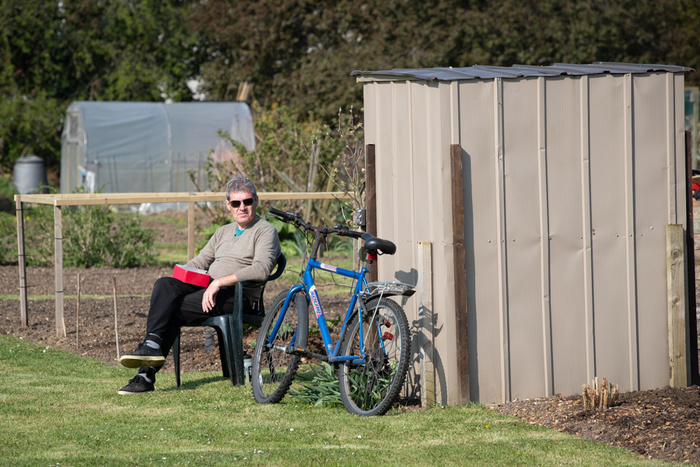
Hi Chris thanks for speaking to us. You have had a plot for a couple of years now. I am always amazed at how pristine your patch looks, with or without vegetables growing. Third place in last years Allotment competition too. What prompted you to take an allotment plot on? What was the initial motivation?
I guess it was my Dad, I was a little boy( back in the sixties ) he had a fully stocked garden with the whole garden kept in great order growing everything the Family needed and although sport got in the way for most of my life when I finally got to old to do sport any more I thought it was time to give it a go.
Have you previously had an allotment?
This is my first Plot , and to be honest when Valerie showed me and my Wife the plot we asked for a couple of days to think about it
How was the patch when you took it over and what was your initial priority?
Did you have a plan for what you wanted the allotment to look like?
It was a B***** mess, with well established weeds and long grass, but in the end we said yes, my first aim was to try and get it turned over and to see some Mud, and believe it or not it was the most satisfying thing ever. to slowly see the Plot coming back to life.
I have always kept the Plot as 2 big Patches and not turned it into smaller bite size Patches I like it this way, again a hark back to my Dad whose Garden was 2 long strips with a path running down the middle. ( standard Council House set up )
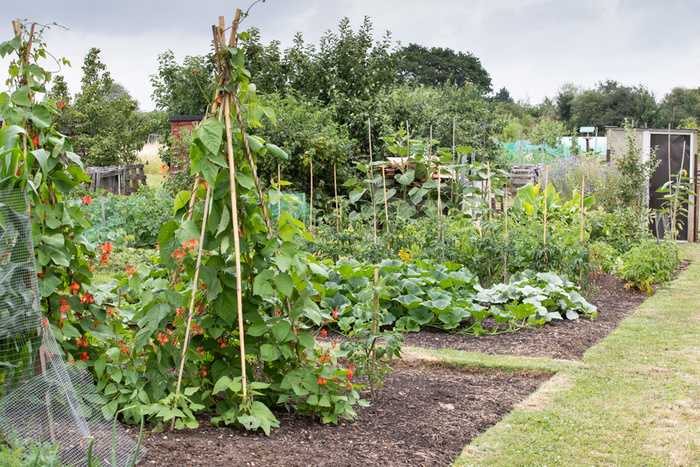
Having got it turned around I like to keep it totally Weed free, and not wishing to sound a grumpy old git I do like being down the far end sitting on my Chair with my Drink, Monkey nuts listening to Radio 5 live, overlooking my old School playing field. I think as you get older the more you reflect.
How did you decide what to grow - crop rotation?
Most of the things that I grow come from an agreement with my Wife ( she tells me what I`m growing ) that is a joke honest and she is my very own Market garden, starting most of the things in her Greenhouse, I work on a 3 year rotation so sort of divide the Plot into 3 parts and keep a booklet of what goes where when.
Any specific learning experiences over the time frame which you believe
to be invaluable?
What have I learned most about my Plot well it`s the position being down the far end puts me in direct contact with those Badger's - as soon as you turn over any soil and plant something they love to dig it up to have a snout, and I have to build something Akin to Colditz to keep them from getting the Sweetcorn ( usually a losing battle they are strong buggers )
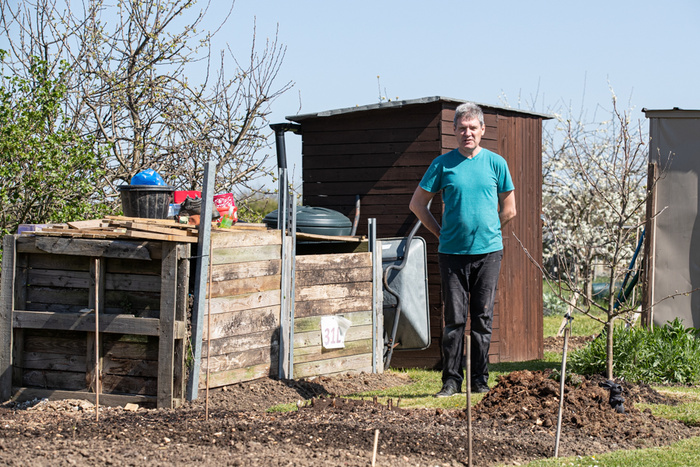
How have you found it on site.
The Allotment has everything, I do not know any other Site that has a Toilet and Shop and although I said I like being down the far end making me sound un-sociable it is still nice when who ever comes past they say hello and the get together at Xmas is a great event
I think it`s a great shame we can not fill every Plot, but lots of People must be put off when they are shown some of the Plots.
Having an Allotment seems to be like taking up Bowls (it`s only for old men ) if only people knew it's not.
Thanks for being a sport and offering up an insight to your plot. Hopefully you won't mind us catching up during the year to see how things are progressing.
22nd April 2020
In: Features

Hi Chris thanks for speaking to us. You have had a plot for a couple of years now. I am always amazed at how pristine your patch looks, with or without vegetables growing. Third place in last years Allotment competition too. What prompted you to take an allotment plot on? What was the initial motivation?
I guess it was my Dad, I was a little boy( back in the sixties ) he had a fully stocked garden with the whole garden kept in great order growing everything the Family needed and although sport got in the way for most of my life when I finally got to old to do sport any more I thought it was time to give it a go.
Have you previously had an allotment?
This is my first Plot , and to be honest when Valerie showed me and my Wife the plot we asked for a couple of days to think about it
How was the patch when you took it over and what was your initial priority?
Did you have a plan for what you wanted the allotment to look like?
It was a B***** mess, with well established weeds and long grass, but in the end we said yes, my first aim was to try and get it turned over and to see some Mud, and believe it or not it was the most satisfying thing ever. to slowly see the Plot coming back to life.
I have always kept the Plot as 2 big Patches and not turned it into smaller bite size Patches I like it this way, again a hark back to my Dad whose Garden was 2 long strips with a path running down the middle. ( standard Council House set up )

Having got it turned around I like to keep it totally Weed free, and not wishing to sound a grumpy old git I do like being down the far end sitting on my Chair with my Drink, Monkey nuts listening to Radio 5 live, overlooking my old School playing field. I think as you get older the more you reflect.
How did you decide what to grow - crop rotation?
Most of the things that I grow come from an agreement with my Wife ( she tells me what I`m growing ) that is a joke honest and she is my very own Market garden, starting most of the things in her Greenhouse, I work on a 3 year rotation so sort of divide the Plot into 3 parts and keep a booklet of what goes where when.
Any specific learning experiences over the time frame which you believe
to be invaluable?
What have I learned most about my Plot well it`s the position being down the far end puts me in direct contact with those Badger's - as soon as you turn over any soil and plant something they love to dig it up to have a snout, and I have to build something Akin to Colditz to keep them from getting the Sweetcorn ( usually a losing battle they are strong buggers )

How have you found it on site.
The Allotment has everything, I do not know any other Site that has a Toilet and Shop and although I said I like being down the far end making me sound un-sociable it is still nice when who ever comes past they say hello and the get together at Xmas is a great event
I think it`s a great shame we can not fill every Plot, but lots of People must be put off when they are shown some of the Plots.
Having an Allotment seems to be like taking up Bowls (it`s only for old men ) if only people knew it's not.
Thanks for being a sport and offering up an insight to your plot. Hopefully you won't mind us catching up during the year to see how things are progressing.
Kevin's Number 1 Allotment Plot
16th April 2020
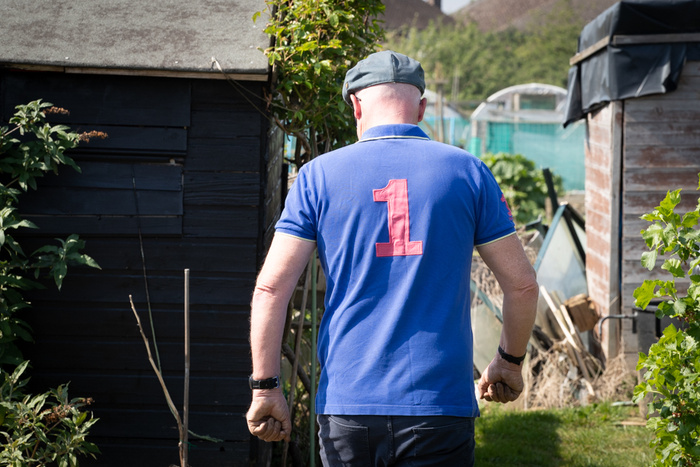
Hi Kevin,
You were kind enough to help with a couple of articles last year for the web site, and as you know we are trying to encourage as many as possible to chip in and share their thoughts. Thank you once again for answering all the questions again. Last time we caught up you indicated you had learnt quite a bit from last year,
Yes. Don’t be over eager to plant. Wait to sow seeds ...everything catches up. When you fancy sowing wait a further 2 weeks! I had my best year ever last year when due to a holiday I had to wait until May before I planted anything. This included putting up a poly tunnel to grow tomatoes peppers and lettuce.
To be more spacious. I’ve now got 3 allotments but will leave plenty of space to hoe between plants. I will have more ground, grow the same amount but it will take me less time to weed. Last job before leaving the site will be to hoe everywhere!
Add plenty of manure and use it as a mulch ..depresses the weeds, saves time, and enriches the soil.
What about other plot holders. There is a host of experience on site what have you gained from them.
Talk to other allotment holders. There is always something to learn. I’ve learned how to grow carrots in raised beds to avoid white fly , how to prevent Badgers eating your sweet corn, how to prune apple trees, and what to cover up to prevent damage from birds.
Any other useful snippets to pass on
It’s worth investing in the future. Time and money .Covering an old poly tunnel with chicken wire to keep the birds away and purchasing blueberry plants was so worth it. They will be there for a number of years. Planting asparagus in a raised bed required patience. This year after a 3 year wait the crop should be really good and will be for a number of years
You indicated you were going to spread the planting this season
I learnt not to plant everything in the same place. Spread the risk. I now plant half a crop in one area and half in another area. What works one year may not work the next year. I also make sure that I rotate crops generally. I have considered adopting the medieval 3 field system as I have 3 allotments. Perhaps a step too far!! I don’t think I could leave one allotment fallow!
Any other time saving or useful tips you would like to share?
Plants crops that need a lot of watering near the taps. Save time. Despite the wind and rain of January and February I’m sure that we will have a drought again in August!
Label all your crops. I tried several types of potatoes. You need to remember what you like so you can plant it next year!
I have found little and often is the key. At least visit once a week or a few times for short periods. It’s so easy to let things drift and then the catch up can be soul destroying. Staying on top of things means it can be enjoyed and be relaxing. It should be a hobby !!
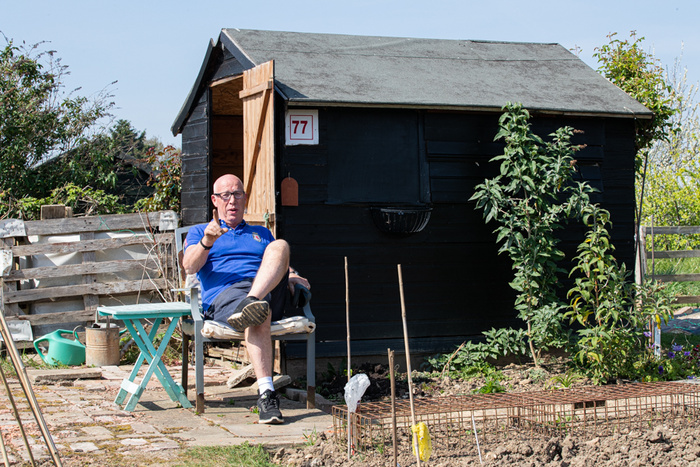
What ultimately is your plan for this year?
I intend to make sure that we are self sufficient all year round . Achieved this for about 9 months of the year so far . At the moment I have Curly Kale , rhubarb , Brussels and am still enjoying tomato soup made last year. Just run out of potatoes but have just planted pentland javelin potatoes ( my favourite). Broad beans in flower, second sowing in, and elephant garlic up. Strawberries and onion sets planted.
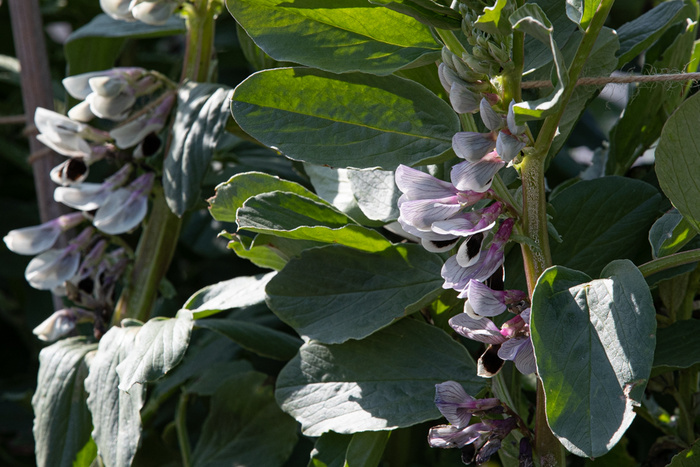
Plan ahead. I’ve bought all my seeds for the year as I did last year. Probably even more important this year. If I need to be in isolation I have somewhere to go. I can visit my allotment hopefully rather than the supermarket!
Plant flowers and roses . Have a seat and create a something enjoyable to look at! Taking time out to sit and enjoy a good cup of tea or even a beer is so good for your well being!
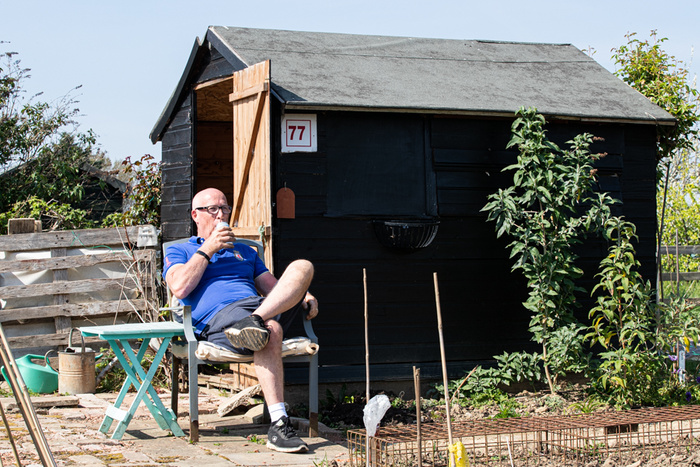
Is there anything else you would like to add?
Those badgers are a nuisance !! I’ve now got raised beds with fencing , fruit frames and fenced of areas and have learned how to protect everything. However I will not be laying any more wood chip paths as they love them ..looking for bugs . My first job when arriving at the allotment is to rake paths back.They love sweet corn. Protect it! Fence it off or at least hide it or spread it about! I tried planting it in several places. An experiment - I hid some between blackberry bushes which was successful!
Once again a big thanks to Kevin for sharing his thoughts for the Association web site. We’ll look to catch up again during the season along with his fellow Allotmenteers Alex and Ian to see how the year has progressed.
16th April 2020
In: Features

Hi Kevin,
You were kind enough to help with a couple of articles last year for the web site, and as you know we are trying to encourage as many as possible to chip in and share their thoughts. Thank you once again for answering all the questions again. Last time we caught up you indicated you had learnt quite a bit from last year,
Yes. Don’t be over eager to plant. Wait to sow seeds ...everything catches up. When you fancy sowing wait a further 2 weeks! I had my best year ever last year when due to a holiday I had to wait until May before I planted anything. This included putting up a poly tunnel to grow tomatoes peppers and lettuce.
To be more spacious. I’ve now got 3 allotments but will leave plenty of space to hoe between plants. I will have more ground, grow the same amount but it will take me less time to weed. Last job before leaving the site will be to hoe everywhere!
Add plenty of manure and use it as a mulch ..depresses the weeds, saves time, and enriches the soil.
What about other plot holders. There is a host of experience on site what have you gained from them.
Talk to other allotment holders. There is always something to learn. I’ve learned how to grow carrots in raised beds to avoid white fly , how to prevent Badgers eating your sweet corn, how to prune apple trees, and what to cover up to prevent damage from birds.
Any other useful snippets to pass on
It’s worth investing in the future. Time and money .Covering an old poly tunnel with chicken wire to keep the birds away and purchasing blueberry plants was so worth it. They will be there for a number of years. Planting asparagus in a raised bed required patience. This year after a 3 year wait the crop should be really good and will be for a number of years
You indicated you were going to spread the planting this season
I learnt not to plant everything in the same place. Spread the risk. I now plant half a crop in one area and half in another area. What works one year may not work the next year. I also make sure that I rotate crops generally. I have considered adopting the medieval 3 field system as I have 3 allotments. Perhaps a step too far!! I don’t think I could leave one allotment fallow!
Any other time saving or useful tips you would like to share?
Plants crops that need a lot of watering near the taps. Save time. Despite the wind and rain of January and February I’m sure that we will have a drought again in August!
Label all your crops. I tried several types of potatoes. You need to remember what you like so you can plant it next year!
I have found little and often is the key. At least visit once a week or a few times for short periods. It’s so easy to let things drift and then the catch up can be soul destroying. Staying on top of things means it can be enjoyed and be relaxing. It should be a hobby !!

What ultimately is your plan for this year?
I intend to make sure that we are self sufficient all year round . Achieved this for about 9 months of the year so far . At the moment I have Curly Kale , rhubarb , Brussels and am still enjoying tomato soup made last year. Just run out of potatoes but have just planted pentland javelin potatoes ( my favourite). Broad beans in flower, second sowing in, and elephant garlic up. Strawberries and onion sets planted.

Plan ahead. I’ve bought all my seeds for the year as I did last year. Probably even more important this year. If I need to be in isolation I have somewhere to go. I can visit my allotment hopefully rather than the supermarket!
Plant flowers and roses . Have a seat and create a something enjoyable to look at! Taking time out to sit and enjoy a good cup of tea or even a beer is so good for your well being!

Is there anything else you would like to add?
Those badgers are a nuisance !! I’ve now got raised beds with fencing , fruit frames and fenced of areas and have learned how to protect everything. However I will not be laying any more wood chip paths as they love them ..looking for bugs . My first job when arriving at the allotment is to rake paths back.They love sweet corn. Protect it! Fence it off or at least hide it or spread it about! I tried planting it in several places. An experiment - I hid some between blackberry bushes which was successful!
Once again a big thanks to Kevin for sharing his thoughts for the Association web site. We’ll look to catch up again during the season along with his fellow Allotmenteers Alex and Ian to see how the year has progressed.